- Family
- Agavaceae
- Agave Albomarginata | Agave | Agavaceae
- Agave | Agavaceae
- Agave Americana | Agave | Agavaceae
- Agave Americana, Variegated | Agave | Agavaceae
- Agave Americana, Variegated | Agave | Agavaceae
- Agave X Arizonica | Agave | Agavaceae
- Agave Attenuata | Agave | Agavaceae
- Agave Bovicornuta | Agave | Agavaceae
- Agave Bracteosa | Agave | Agavaceae
- Agave Bracteosa | Agave | Agavaceae
- Agave Cerulata Var. Subcerulata | Agave | Agavaceae
- Agave Chiapensis | Agave | Agavaceae
- Agave Chiapensis | Agave | Agavaceae
- Agave Colorata | Agave | Agavaceae
- Agave Desertii | Agave | Agavaceae
- Agave Desertii Flower | Agave | Agavaceae
- Agave Desmetiana Variegata - Photo: Michael Thau 2015 | Agave | Agavaceae
- Agave Difformis | Agave | Agavaceae
- Agave Durangensis | Agave | Agavaceae
- Agave Filifera | Agave | Agavaceae
- Agave Filifera | Agave | Agavaceae
- Agave Xleopoldii = A. Filifera X A. Filifera Ssp. Schidigera | Agave | Agavaceae
- Agave Funkiana | Agave | Agavaceae
- Agave Geminiflora | Agave | Agavaceae
- Agave Gigantensis | Agave | Agavaceae
- Agave Guadalajarana | Agave | Agavaceae
- Agave Gypsophila | Agave | Agavaceae
- Agave Havardiana | Agave | Agavaceae
- Agave Lechuguilla | Agave | Agavaceae
- Agave Lechuguilla Flower | Agave | Agavaceae
- Agave Lophantha | Agave | Agavaceae
- Agave Macroacantha | Agave | Agavaceae
- Agave Lophantha 'Quadricolor' | Agave | Agavaceae
- Agave Mitis | Agave | Agavaceae
- Agave Mitis Var. Albidior | Agave | Agavaceae
- Agave Mitis Var. Albidior | Agave | Agavaceae
- Agave Montana | Agave | Agavaceae
- Agave Murpheyi | Agave | Agavaceae
- Agave Ocahui | Agave | Agavaceae
- Agave Nizandensis | Agave | Agavaceae
- Agave Ocahui Var. Longifolia | Agave | Agavaceae
- Agave Parrasana | Agave | Agavaceae
- Agave Palmeri | Agave | Agavaceae
- Agave Parryi Form1, Organ Pipe Monument, Arizona | Agave | Agavaceae
- Agave Parryi Form 2 Cultivated | Agave | Agavaceae
- Agave Parryi, Guadalupe Mountains NM. Photo: John Moerk 2004 | Agave | Agavaceae
- Agave Pelona | Agave | Agavaceae
- Agave Polianthiflora | Agave | Agavaceae
- Agave Potatorum Cv. 'Kichiokan' | Agave | Agavaceae
- Agave Salmiana | Agave | Agavaceae
- Agave Schottii Flower | Agave | Agavaceae
- Agave Schottii Var. Treleasei | Agave | Agavaceae
- Agave Spicata | Agave | Agavaceae
- Agave Parviflora | Agave | Agavaceae
- Agave Potatorum Cultivated | Agave | Agavaceae
- Agave Pumila | Agave | Agavaceae
- Agave Schottii | Agave | Agavaceae
- Agave Sisalana | Agave | Agavaceae
- Agave Stricta Grown Outside In The Rock Garden At RBG Kew | Agave | Agavaceae
- Agave Stricta In The Princess Of Wales Conservatory, RBG Kew | Agave | Agavaceae
- Agave Stricta Var. Pallida | Agave | Agavaceae
- Agave Tequilana | Agave | Agavaceae
- Agave Titanota | Agave | Agavaceae
- Agave Toumeyana Ssp. Bella | Agave | Agavaceae
- Agave Toumeyana Ssp. Toumeyana | Agave | Agavaceae
- Agave Utahensis | Agave | Agavaceae
- Agave Victoriae-reginae | Agave | Agavaceae
- Agave Vilmoriniana | Agave | Agavaceae
- Agave Warelliana | Agave | Agavaceae
- Agave Weberi | Agave | Agavaceae
- Agave Wocomahi | Agave | Agavaceae
- Beschorneria | Agavaceae
- Beschorneria Albiflora | Beschorneria | Agavaceae
- Beschorneria Septentrionalis | Beschorneria | Agavaceae
- Beschorneria Septentrionalis | Beschorneria | Agavaceae
- Beschorneria Yuccoides | Beschorneria | Agavaceae
- Beschorneria Yuccoides | Beschorneria | Agavaceae
- Furcraea | Agavaceae
- Furcraea Cahum | Furcraea | Agavaceae
- Furcraea Foetida - Photo: Lowell B. Smith | Furcraea | Agavaceae
- Furcraea Longaeva | Furcraea | Agavaceae
- Furcraea Longaeva Flower | Furcraea | Agavaceae
- Furcraea Selloa Var Marginata - Photo: Phil Parker | Furcraea | Agavaceae
- Hesperaloe | Agavaceae
- Hesperaloe Campanulata | Hesperaloe | Agavaceae
- Hesperaloe Parviflora | Hesperaloe | Agavaceae
- Hesperocallis | Agavaceae
- Hesperocallis Undulata - Mojave Desert Reserve | Hesperocallis | Agavaceae
- Yucca | Agavaceae
- Yucca Aloifolia | Yucca | Agavaceae
- Yucca Aloifolia Variegata | Yucca | Agavaceae
- Yucca Aloifolia 'Vittorio Emanuele II | Yucca | Agavaceae
- Yucca Angustissima Subsp. Kanabensis | Yucca | Agavaceae
- Yucca Baccata | Yucca | Agavaceae
- Yucca Brevifolia | Yucca | Agavaceae
- Yucca Constricta | Yucca | Agavaceae
- Yucca Decipiens | Yucca | Agavaceae
- Yucca Elata | Yucca | Agavaceae
- Yucca Elephantipes Syn. Y. Guatemalensis Photo: Peter Hodgkiss | Yucca | Agavaceae
- Yucca Faxoniana | Yucca | Agavaceae
- Yucca Filamentosa | Yucca | Agavaceae
- Yucca Filamentosa Cv. Bright Edge | Yucca | Agavaceae
- Yucca Filifera | Yucca | Agavaceae
- Yucca Flaccida | Yucca | Agavaceae
- Yucca Flaccida Garland's Gold | Yucca | Agavaceae
- Yucca Glauca | Yucca | Agavaceae
- Yucca Glauca Var. Stricta Syn. Yucca Angustifolia | Yucca | Agavaceae
- Yucca Glauca Var. Stricta Syn. Yucca Angustifolia | Yucca | Agavaceae
- Yucca Gloriosa Nobilis | Yucca | Agavaceae
- Yucca Gloriosa Variegata | Yucca | Agavaceae
- Yucca Aff Harrimaniae | Yucca | Agavaceae
- Yucca Natural Hybrid | Yucca | Agavaceae
- Yucca Rostrata | Yucca | Agavaceae
- Yucca Schidigera | Yucca | Agavaceae
- Yucca Torreyi | Yucca | Agavaceae
- Yucca Treculeana | Yucca | Agavaceae
- Yucca Whipplei | Yucca | Agavaceae
- Aizoaceae
- Acrodon | Aizoaceae
- Acrodon Bellidiflorus | Acrodon | Aizoaceae
- Aloinopsis | Aizoaceae
- Aloinopsis Luckhoffii Syn. Aloinopsis Setifera | Aloinopsis | Aizoaceae
- Aloinopsis Orpenii Syn. Prepodesma Orpenii | Aloinopsis | Aizoaceae
- Antimima | Aizoaceae
- Antimima Concinna | Antimima | Aizoaceae
- Aptenia | Aizoaceae
- Aptenia Cordifolia | Aptenia | Aizoaceae
- Argyroderma | Aizoaceae
- Argyroderma Patens | Argyroderma | Aizoaceae
- Bijlia | Aizoaceae
- Bijlia Tugwelliae | Bijlia | Aizoaceae
- Braunsia | Aizoaceae
- Braunsia Apiculata | Braunsia | Aizoaceae
- Carpobrotus | Aizoaceae
- Carpobrotus Edulis | Carpobrotus | Aizoaceae
- Carpobrotus Chilensis | Carpobrotus | Aizoaceae
- Carpobrotus Chilensis | Carpobrotus | Aizoaceae
- Carruanthus | Aizoaceae
- Carruanthus Peersii | Carruanthus | Aizoaceae
- Carruanthus Ringens | Carruanthus | Aizoaceae
- Cheiridopsis | Aizoaceae
- Cheiridopsis Caroli-schmidtii | Cheiridopsis | Aizoaceae
- Cheiridopsis Caroli-schmidtii Flower | Cheiridopsis | Aizoaceae
- Cheiridopsis Namaquensis Syn. Cheiridopsis Cigarettifera | Cheiridopsis | Aizoaceae
- Cheiridopsis Namaquensis Syn. Cheiridopsis Cigarettifera | Cheiridopsis | Aizoaceae
- Cheiridopsis Denticulata | Cheiridopsis | Aizoaceae
- Cheiridopsis Speciosa | Cheiridopsis | Aizoaceae
- Conophytum | Aizoaceae
- Conophytum Bilobum | Conophytum | Aizoaceae
- Conophytum Bilobum | Conophytum | Aizoaceae
- Conophytum Fraternum | Conophytum | Aizoaceae
- Conophytum Minutum | Conophytum | Aizoaceae
- Conophytum Recisum | Conophytum | Aizoaceae
- Conophytum Velutinum | Conophytum | Aizoaceae
- Delosperma | Aizoaceae
- Delosperma Brunnthaleri | Delosperma | Aizoaceae
- Delosperma Congestum 'Gold Nugget' | Delosperma | Aizoaceae
- Delosperma Cooperi Photo: Gary Levine 2002 | Delosperma | Aizoaceae
- Delosperma Echinatum | Delosperma | Aizoaceae
- Delosperma Esterhuyseriae | Delosperma | Aizoaceae
- Delosperma Kofleri | Delosperma | Aizoaceae
- Delosperma Nubigenum | Delosperma | Aizoaceae
- Delosperma 'Ruby Coral' | Delosperma | Aizoaceae
- Delosperma Sutherlandii | Delosperma | Aizoaceae
- Delosperma Taylorii | Delosperma | Aizoaceae
- Dorotheanthus | Aizoaceae
- Dorotheanthus Gramineus | Dorotheanthus | Aizoaceae
- Drosanthemum | Aizoaceae
- Drosanthemum Hispidum | Drosanthemum | Aizoaceae
- Ebracteola | Aizoaceae
- Ebracteola Montis-moltkei | Ebracteola | Aizoaceae
- Faucaria | Aizoaceae
- Faucaria Felina | Faucaria | Aizoaceae
- Faucaria Tigrina | Faucaria | Aizoaceae
- Fenestraria | Aizoaceae
- Fenestraria Rhopalophylla Subspecies Aurantiaca | Fenestraria | Aizoaceae
- Gibbaeum | Aizoaceae
- Gibbaeum Dispar | Gibbaeum | Aizoaceae
- Gibbaeum Heathii | Gibbaeum | Aizoaceae
- Gibbaeum Velutinum | Gibbaeum | Aizoaceae
- Glottiphyllum | Aizoaceae
- Glottiphyllum Longum Syn. G. Propinquum | Glottiphyllum | Aizoaceae
- Glottiphyllum Nelii Syn. G. Pygmaeum | Glottiphyllum | Aizoaceae
- Glottiphyllum Oligocarpum | Glottiphyllum | Aizoaceae
- Glottiphyllum Peersii | Glottiphyllum | Aizoaceae
- Glottiphyllum Regium Syn. G. Compressum | Glottiphyllum | Aizoaceae
- Hereroa | Aizoaceae
- Hereroa Calycina | Hereroa | Aizoaceae
- Lampranthus | Aizoaceae
- Lampranthus Aureus | Lampranthus | Aizoaceae
- Lampranthus Deltoides | Lampranthus | Aizoaceae
- Lampranthus Haworthiodes | Lampranthus | Aizoaceae
- Lithops | Aizoaceae
- Lithops Bromfieldii Var. Insularis Cv. Sulphurea | Lithops | Aizoaceae
- Lithops Karasmontana Ssp. Bella Seedlings | Lithops | Aizoaceae
- Lithops Lesliei | Lithops | Aizoaceae
- Lithops Marmorata | Lithops | Aizoaceae
- Lithops Olivacea | Lithops | Aizoaceae
- Lithops Localis | Lithops | Aizoaceae
- Lithops Localis | Lithops | Aizoaceae
- Maleophora | Aizoaceae
- Maleophora Crocea | Maleophora | Aizoaceae
- Marlothistella | Aizoaceae
- Marlothistella Uniondalensis | Marlothistella | Aizoaceae
- Mesembryanthemum | Aizoaceae
- Mesembryanthemum Crystallinum | Mesembryanthemum | Aizoaceae
- Nananthus | Aizoaceae
- Nananthus Vittatus | Nananthus | Aizoaceae
- Pleiospilos | Aizoaceae
- Pleiospilos Bolusii | Pleiospilos | Aizoaceae
- Pleiospilos Compactus Ssp. Cana | Pleiospilos | Aizoaceae
- Pleiospilos Nelii | Pleiospilos | Aizoaceae
- Rhinephyllum | Aizoaceae
- Rhinephyllum Graniforme | Rhinephyllum | Aizoaceae
- Ruschia | Aizoaceae
- Ruschia Calycina Syn. Zeuktophyllum Calycinum | Ruschia | Aizoaceae
- Ruschia Maxima | Ruschia | Aizoaceae
- Ruschia Perfoliata | Ruschia | Aizoaceae
- Ruschianthus | Aizoaceae
- Ruschianthus Falcatus - Photo Joel Lode | Ruschianthus | Aizoaceae
- Stomatium | Aizoaceae
- Stomatium Bryantii | Stomatium | Aizoaceae
- Trichodiadema | Aizoaceae
- Trichodiadema Stellatum | Trichodiadema | Aizoaceae
- Aloe | Aloaceae
- Aloaceae
- Aloe Aculeata | Aloe | Aloaceae
- Aloe Acutissima | Aloe | Aloaceae
- Aloe Affinis | Aloe | Aloaceae
- Aloe Africana | Aloe | Aloaceae
- Aloe Arborescens | Aloe | Aloaceae
- Aloe Arborescens Variegata | Aloe | Aloaceae
- Aloe Arenicola | Aloe | Aloaceae
- Aloe Aristata | Aloe | Aloaceae
- Aloe Barberae Syn. Aloe Bainesii | Aloe | Aloaceae
- Aloe Bellatula | Aloe | Aloaceae
- Aloe Brevifolia | Aloe | Aloaceae
- Aloe Buhrii | Aloe | Aloaceae
- Aloe Bulbillifera | Aloe | Aloaceae
- Aloe Bulbillifera | Aloe | Aloaceae
- Aloe Cameronii | Aloe | Aloaceae
- Aloe Capitata Var. Gneissicola | Aloe | Aloaceae
- Aloe Ciliaris | Aloe | Aloaceae
- Aloe Classenii | Aloe | Aloaceae
- Aloe Classenii | Aloe | Aloaceae
- Aloe Cooperi - Photo: Marissa Lilly 2018 | Aloe | Aloaceae
- Aloe Deltoideodonta | Aloe | Aloaceae
- Aloe Dichotoma | Aloe | Aloaceae
- Aloe Dorotheae | Aloe | Aloaceae
- Aloe Ellenbeckii | Aloe | Aloaceae
- Aloe Excelsa | Aloe | Aloaceae
- Aloe Falcata | Aloe | Aloaceae
- Aloe Ferox | Aloe | Aloaceae
- Aloe Forbesii | Aloe | Aloaceae
- Aloe Helenae | Aloe | Aloaceae
- Aloe Juvenna | Aloe | Aloaceae
- Aloe Lateritia | Aloe | Aloaceae
- Aloe Leptosyphon Syn. Aloe Greenwayi | Aloe | Aloaceae
- Aloe Marlothii | Aloe | Aloaceae
- Aloe Microstigma | Aloe | Aloaceae
- Aloe Millotii | Aloe | Aloaceae
- Aloe Musapana | Aloe | Aloaceae
- Aloe Mitriformis | Aloe | Aloaceae
- Aloe Newtonii | Aloe | Aloaceae
- Aloe Palmiformis | Aloe | Aloaceae
- Aloe Peckii | Aloe | Aloaceae
- Aloe Petricola | Aloe | Aloaceae
- Aloe Pendens | Aloe | Aloaceae
- Aloe Plicatilis | Aloe | Aloaceae
- Aloe X Principis | Aloe | Aloaceae
- Aloe Polyphylla | Aloe | Aloaceae
- Aloe Pseudorubroviolaceae | Aloe | Aloaceae
- Lomatophyllum Purpureum | Aloe | Aloaceae
- Aloe Ramosissima | Aloe | Aloaceae
- Aloe Reitzi | Aloe | Aloaceae
- Aloe Reynoldsii | Aloe | Aloaceae
- Aloe Rupestris | Aloe | Aloaceae
- Aloe Secundiflora | Aloe | Aloaceae
- Aloe Sinkatana | Aloe | Aloaceae
- Aloe Sinkatana | Aloe | Aloaceae
- Aloe Speciosa | Aloe | Aloaceae
- Aloe X Spinosissima | Aloe | Aloaceae
- Aloe Squarrosa Flower | Aloe | Aloaceae
- Aloe Striatula | Aloe | Aloaceae
- Aloe Striatula | Aloe | Aloaceae
- Aloe Tenuior | Aloe | Aloaceae
- Aloe Tomentosa | Aloe | Aloaceae
- Aloe Vacillans | Aloe | Aloaceae
- Aloe Vaombe | Aloe | Aloaceae
- Aloe Vaombe | Aloe | Aloaceae
- Aloe Vera | Aloe | Aloaceae
- Aloe Volkensii | Aloe | Aloaceae
- Aloe Wickensii | Aloe | Aloaceae
- Aloe Yemenica | Aloe | Aloaceae
- Gasteraloe | Aloaceae
- Aloe X Cosmo | Gasteraloe | Aloaceae
- Astroloba | Aloaceae
- Astroloba Congesta | Astroloba | Aloaceae
- Astroloba Foliosa | Astroloba | Aloaceae
- Bulbine | Aloaceae
- Bulbine Frutescens | Bulbine | Aloaceae
- Bulbine Frutescens Stamens | Bulbine | Aloaceae
- Bulbine Latifolia | Bulbine | Aloaceae
- Bulbine Latifolia Stamens | Bulbine | Aloaceae
- Bulbine Semibarbata | Bulbine | Aloaceae
- Bulbine Semibarbata | Bulbine | Aloaceae
- Bulbinella Hookeri | Bulbinella | Aloaceae
- Gasteria | Aloaceae
- Bulbinella | Aloaceae
- Bulbinella Hookeri | Bulbinella | Aloaceae
- Bulbinella Hookeri | Bulbinella | Aloaceae
- Gasteria Acinacifolia | Gasteria | Aloaceae
- Gasteria Baylissiana | Gasteria | Aloaceae
- Gasteria Baylissiana Flower | Gasteria | Aloaceae
- Gasteria Bicolor Var Bicolor | Gasteria | Aloaceae
- Gasteria Bicolor Var Liliputiana | Gasteria | Aloaceae
- Gasteria Bicolor Var Liliputiana Flower | Gasteria | Aloaceae
- Gasteria Brachyphylla Var. Brachyphylla | Gasteria | Aloaceae
- Gasteria Brachyphylla Var. Brachyphylla Flower | Gasteria | Aloaceae
- Gasteria Carinata Var. Carinata | Gasteria | Aloaceae
- Gasteria Carinata Var. Carinata Flower | Gasteria | Aloaceae
- Gasteria Carinata Var. Verrucosa | Gasteria | Aloaceae
- Gasteria Carinata Var. Verrucosa | Gasteria | Aloaceae
- Gasteria Dicta | Gasteria | Aloaceae
- Gasteria Dicta Flower | Gasteria | Aloaceae
- Gasteria Disticha | Gasteria | Aloaceae
- Gasteria Disticha | Gasteria | Aloaceae
- Gasteria Glomerata | Gasteria | Aloaceae
- Gasteria Multipunctata | Gasteria | Aloaceae
- Gasteria Glomerata | Gasteria | Aloaceae
- Gasteria Multipunctata | Gasteria | Aloaceae
- Gasteria Nitida Var. Nitida | Gasteria | Aloaceae
- Gasteria Pillansii | Gasteria | Aloaceae
- Gasteria Pseudonigricans | Gasteria | Aloaceae
- Gasteria Pseudonigricans | Gasteria | Aloaceae
- Gasteria Rawlinsonii | Gasteria | Aloaceae
- Gasteria Rawlinsonii | Gasteria | Aloaceae
- Haworthia | Aloaceae
- Haworthia Arachnoidea Var. Pearsonii | Haworthia | Aloaceae
- Haworthia Attenuata Var. Attenuata | Haworthia | Aloaceae
- Haworthia Attenuata F. Caespitosa | Haworthia | Aloaceae
- Haworthia Attenuata Var. Radula | Haworthia | Aloaceae
- Haworthia Bolusii Var. Blackbeardiana | Haworthia | Aloaceae
- Haworthia Coarctata | Haworthia | Aloaceae
- Haworthia Coarctata Fa. Greenii | Haworthia | Aloaceae
- Haworthia Cuspidata | Haworthia | Aloaceae
- Haworthia Cymbiformis Var. Cymbiformis | Haworthia | Aloaceae
- Haworthia Glauca Var. Herrei | Haworthia | Aloaceae
- Haworthia Herbacea | Haworthia | Aloaceae
- Haworthia Longiana | Haworthia | Aloaceae
- Haworthia Kewensis | Haworthia | Aloaceae
- Haworthia Limifolia | Haworthia | Aloaceae
- Haworthia Mantellii | Haworthia | Aloaceae
- Haworthia Marumiana | Haworthia | Aloaceae
- Haworthia Marumiana Var. Batesiana | Haworthia | Aloaceae
- Haworthia Mucronata | Haworthia | Aloaceae
- Haworthia Parksiana | Haworthia | Aloaceae
- Haworthia Pumilla | Haworthia | Aloaceae
- Haworthia Pygmaea | Haworthia | Aloaceae
- Haworthia Reinwardtii - Photo: Diana Burrola | Haworthia | Aloaceae
- Haworthia Resendeana | Haworthia | Aloaceae
- Haworthia Rigida | Haworthia | Aloaceae
- Haworthia Retusa | Haworthia | Aloaceae
- Haworthia Truncata | Haworthia | Aloaceae
- Haworthia Venosa Ssp. Tessellata | Haworthia | Aloaceae
- Haworthia Viscosa | Haworthia | Aloaceae
- Amaranthaceae
- Allenrolfea | Amaranthaceae
- Allenrolfea Occidentalis - Death Valley | Allenrolfea | Amaranthaceae
- Beta | Amaranthaceae
- Beta Vulgaris Subsp. Maritima - Durlston Cliffs, Dorset | Beta | Amaranthaceae
- Salicornia | Amaranthaceae
- Salicornia Dolichostachya - Photo: Peter Russell | Salicornia | Amaranthaceae
- Salicornia Europea | Salicornia | Amaranthaceae
- Salicornia Ramosissima | Salicornia | Amaranthaceae
- Salicornia Rubra - Death Valley | Salicornia | Amaranthaceae
- Sarcocornia | Amaranthaceae
- Sarcocornia Perennis | Sarcocornia | Amaranthaceae
- Sarcocornia Quinqueflora | Sarcocornia | Amaranthaceae
- Suaeda | Amaranthaceae
- Suaeda Maritima | Suaeda | Amaranthaceae
- Suaeda Vera | Suaeda | Amaranthaceae
- Amaryllidaceae
- Boophane | Amaryllidaceae
- Boophane Haemanthoides | Boophane | Amaryllidaceae
- Clivia | Amaryllidaceae
- Clivia Gardenii | Clivia | Amaryllidaceae
- Clivia Miniata | Clivia | Amaryllidaceae
- Clivia Miniata Var. Citrina | Clivia | Amaryllidaceae
- Clivia Miniata 'Kirstenbosch Yellow' | Clivia | Amaryllidaceae
- Clivia Nobilis | Clivia | Amaryllidaceae
- Crinum | Amaryllidaceae
- Crinum Amabile | Crinum | Amaryllidaceae
- Crinum Asiaticum | Crinum | Amaryllidaceae
- Crinum Purpurascens | Crinum | Amaryllidaceae
- Cyrtanthus | Amaryllidaceae
- Cyrtanthus Brachyscyphus | Cyrtanthus | Amaryllidaceae
- Cyrtanthus Elatus | Cyrtanthus | Amaryllidaceae
- Cyrtanthus Falcatus | Cyrtanthus | Amaryllidaceae
- Cyrtanthus Sanguineus Var. Sanguineus | Cyrtanthus | Amaryllidaceae
- Haemanthus | Amaryllidaceae
- Haemanthus Albiflos | Haemanthus | Amaryllidaceae
- Haemanthus Humilis | Haemanthus | Amaryllidaceae
- Scadoxus | Amaryllidaceae
- Scadoxus Cinnabarinus | Scadoxus | Amaryllidaceae
- Scadoxus Membranaceus | Scadoxus | Amaryllidaceae
- Scadoxus Multiflorus | Scadoxus | Amaryllidaceae
- Scadoxus Puniceus | Scadoxus | Amaryllidaceae
- Scadoxus Puniceus | Scadoxus | Amaryllidaceae
- Stenomesson | Amaryllidaceae
- Stenomesson Miniatum | Stenomesson | Amaryllidaceae
- Anacardiaceae
- Pachycormus | Anacardiaceae
- Pachycormus Discolor | Pachycormus | Anacardiaceae
- Pachycormus Discolor | Pachycormus | Anacardiaceae
- Apiaceae
- Azorella Trifurcata | Apiaceae
- Azorella Trifurcata | Apiaceae
- Crithmum Maritimum | Apiaceae
- Crithmum Maritimum | Apiaceae
- Apocynaceae
- Adenium | Apocynaceae
- Adenium Obesum | Adenium | Apocynaceae
- Apocynaceae
- Asclepias | Apocynaceae
- Asclepias Asperula - Ruby Road, Arizona | Asclepias | Apocynaceae
- Asclepias Viridis - Texas | Asclepias | Apocynaceae
- Asclepias Curassavica - In Cultivation | Asclepias | Apocynaceae
- Asclepias Erosa | Asclepias | Apocynaceae
- Asclepias Erosa Flower - Anza-Borega Park, California | Asclepias | Apocynaceae
- Asclepias Erosa | Asclepias | Apocynaceae
- Asclepias Erosa Flower - Chloride, Arizona | Asclepias | Apocynaceae
- Asclepias Incarnata - Cultivation, UK | Asclepias | Apocynaceae
- Asclepias Incarnata Var. Albiflora - Cultivation, UK | Asclepias | Apocynaceae
- Asclepias Subulata - Organ Pipe Monument, Arizona | Asclepias | Apocynaceae
- Asclepias Subulata - Organ Pipe Monument, Arizona | Asclepias | Apocynaceae
- Asclepias Syriaca - Netherlands. Photo: Co Hoeksel | Asclepias | Apocynaceae
- Asclepias Viridis - Texas | Asclepias | Apocynaceae
- Asclepias (Gomphocarpus) Physocarpa Flower | Asclepias | Apocynaceae
- Asclepias (Gomphocarpus) Physocarpa Flower | Asclepias | Apocynaceae
- Asclepias (Gomphocarpus) Physocarpa Seed Pods - Cape Town, South Africa | Asclepias | Apocynaceae
- Asclepias (Gomphocarpus) Fructicosa - Worcester, South Africa | Asclepias | Apocynaceae
- Asclepias (Gomphocarpus) Fructicosa - Worcester, South Africa | Asclepias | Apocynaceae
- Brachystelma | Apocynaceae
- Brachystelma Meyerianum | Brachystelma | Apocynaceae
- Brachystelma Namaquensis | Brachystelma | Apocynaceae
- Brachystelma Nanum | Brachystelma | Apocynaceae
- Caralluma | Apocynaceae
- Caralluma Arachnoidea | Caralluma | Apocynaceae
- Caralluma Burchardii | Caralluma | Apocynaceae
- Caralluma Dummeri | Caralluma | Apocynaceae
- Caralluma Europaea | Caralluma | Apocynaceae
- Caralluma Gemufogana | Caralluma | Apocynaceae
- Caralluma Foulcheri-delboscii | Caralluma | Apocynaceae
- Caralluma Frerea | Caralluma | Apocynaceae
- Caralluma Munbyana | Caralluma | Apocynaceae
- Caralluma Plicatiloba | Caralluma | Apocynaceae
- Caralluma Quadrangula | Caralluma | Apocynaceae
- Caralluma Retroscipiens | Caralluma | Apocynaceae
- Caralluma Socotrana | Caralluma | Apocynaceae
- Caralluma Speciosa | Caralluma | Apocynaceae
- Caralluma Wissmannii, In Cultivation From Wadi Dhahr, Yemen | Caralluma | Apocynaceae
- Caralluma Wissmannii | Caralluma | Apocynaceae
- Ceropegia | Apocynaceae
- Ceropegia Ampliata - Photo: Sage Reynolds | Ceropegia | Apocynaceae
- Ceropegia Arabica | Ceropegia | Apocynaceae
- Ceropegia Aristolochoides - Photo: Jan Rimmek | Ceropegia | Apocynaceae
- Ceropegia Ballyana - Photo: Jan Rimmek | Ceropegia | Apocynaceae
- Ceropegia Denticulata - Photo: Renée Gaillard | Ceropegia | Apocynaceae
- Ceropegia Distincta Ssp. Haygarthii - Photo: Jan Rimmek | Ceropegia | Apocynaceae
- Ceropegia Fusca - (habitat Photo: Oscar L. Saavedra) | Ceropegia | Apocynaceae
- Ceropegia Fusca Flower - Photo: Jan Rimmek | Ceropegia | Apocynaceae
- Ceropegia Sandersonii - Photo: Sage Reynolds | Ceropegia | Apocynaceae
- Ceropegia Stapeliformis - | Ceropegia | Apocynaceae
- Ceropegia Woodii - Photo: Jan Rimmek | Ceropegia | Apocynaceae
- Dischidia | Apocynaceae
- Dischidia Bengalensis | Dischidia | Apocynaceae
- Dischidia Lanceolata | Dischidia | Apocynaceae
- Duvalia | Apocynaceae
- Duvalia Sulcata | Duvalia | Apocynaceae
- Duvalia Polita | Duvalia | Apocynaceae
- Echidnopsis | Apocynaceae
- Echidnopsis Montana | Echidnopsis | Apocynaceae
- Echidnopsis Sp. | Echidnopsis | Apocynaceae
- Echidnopsis Sp. | Echidnopsis | Apocynaceae
- Fockea | Apocynaceae
- Fockea Capensis | Fockea | Apocynaceae
- Fockea Capensis | Fockea | Apocynaceae
- Fockea Edulis | Fockea | Apocynaceae
- Frerea | Apocynaceae
- Frerea Indica | Frerea | Apocynaceae
- Hoodia | Apocynaceae
- Hoodia Gordonii - Phoenix Desert Garden | Hoodia | Apocynaceae
- Hoodia Gordonii | Hoodia | Apocynaceae
- Hoodia Ruschii | Hoodia | Apocynaceae
- Hoya | Apocynaceae
- Hoya Australis | Hoya | Apocynaceae
- Hoya Carnosa | Hoya | Apocynaceae
- Hoya Coriacea | Hoya | Apocynaceae
- Hoya Curtisii | Hoya | Apocynaceae
- Hoya Diversifolia Blume - Photo: Richard Hodgkiss | Hoya | Apocynaceae
- Hoya Elliptica | Hoya | Apocynaceae
- Hoya Erythrostemma | Hoya | Apocynaceae
- Hoya Fraterna | Hoya | Apocynaceae
- Unknown Hoya Aff. Hoya Hasseltiii | Hoya | Apocynaceae
- Hoya Imbricata | Hoya | Apocynaceae
- Hoya Imperialis | Hoya | Apocynaceae
- Hoya Lacunosa | Hoya | Apocynaceae
- Hoya Linearis Wall. Ex D.Don - Photo: Richard Hodgkiss | Hoya | Apocynaceae
- Hoya Meliflua | Hoya | Apocynaceae
- Hoya Mindorensis | Hoya | Apocynaceae
- Hoya Obscura | Hoya | Apocynaceae
- Hoya Onychoides | Hoya | Apocynaceae
- Hoya Pachyclada | Hoya | Apocynaceae
- Hoya Pottsii | Hoya | Apocynaceae
- Hoya Serpens | Hoya | Apocynaceae
- Hoya Sussuela | Hoya | Apocynaceae
- Hoya Vitellinoides | Hoya | Apocynaceae
- Huernia | Apocynaceae
- Huernia Aspera | Huernia | Apocynaceae
- Huernia Boleana | Huernia | Apocynaceae
- Huernia Brevirostris | Huernia | Apocynaceae
- Huernia Hislopii | Huernia | Apocynaceae
- Huernia Hystrix | Huernia | Apocynaceae
- Huernia Insigniflora | Huernia | Apocynaceae
- Huernia Laevis | Huernia | Apocynaceae
- Huernia Macrocarpa | Huernia | Apocynaceae
- Huernia Piersii | Huernia | Apocynaceae
- Huernia Pillansii | Huernia | Apocynaceae
- Huernia Plowseii | Huernia | Apocynaceae
- Huernia Procumbens | Huernia | Apocynaceae
- Huernia Saudi-arabica | Huernia | Apocynaceae
- Huernia Schneiderana | Huernia | Apocynaceae
- Huernia Verekeri | Huernia | Apocynaceae
- Huernia Zebrina | Huernia | Apocynaceae
- Larryleachia Cactiformis (Trichocaulon Cactiforme) | Huernia | Apocynaceae
- Mondia | Apocynaceae
- Mondia Whitei | Mondia | Apocynaceae
- Orbeopsis Caudata | Mondia | Apocynaceae
- Periploca | Apocynaceae
- Periploca Graeca | Periploca | Apocynaceae
- Piaranthus | Apocynaceae
- Piaranthus Decorus | Piaranthus | Apocynaceae
- Piaranthus Geminatus - Photo: Mike Harvey | Piaranthus | Apocynaceae
- Philibertia | Apocynaceae
- Philibertia Gracilis | Philibertia | Apocynaceae
- Orbea / Stapelia | Apocynaceae
- Orbea (Diplocyatha) Ciliata | Orbea / Stapelia | Apocynaceae
- Orbea Pulchella | Orbea / Stapelia | Apocynaceae
- Orbea Variegata | Orbea / Stapelia | Apocynaceae
- Orbea (Stultitia) Hardyi | Orbea / Stapelia | Apocynaceae
- Stapelia Mutabilis | Orbea / Stapelia | Apocynaceae
- Stapelia Hirsuta | Orbea / Stapelia | Apocynaceae
- Stapelia Hirsuta Flower Bud | Orbea / Stapelia | Apocynaceae
- Stapelia Grandiflora | Orbea / Stapelia | Apocynaceae
- Stapelia Lepida | Orbea / Stapelia | Apocynaceae
- Stapeliopsis Urniflora | Orbea / Stapelia | Apocynaceae
- Cynanchum (Sarcostemma) | Apocynaceae
- Sarcostemma Cynanchoides | Cynanchum (Sarcostemma) | Apocynaceae
- Sarcostemma Hirtellum | Cynanchum (Sarcostemma) | Apocynaceae
- Sarcostemma Vanlessenii | Cynanchum (Sarcostemma) | Apocynaceae
- Sarcostemma Viminale | Cynanchum (Sarcostemma) | Apocynaceae
- Tromotriche | Apocynaceae
- Tromotriche Engleriana | Tromotriche | Apocynaceae
- Vincetoxicum | Apocynaceae
- Vincetoxicum Scandens | Vincetoxicum | Apocynaceae
- Apocynaceae
- Pachypodium | Apocynaceae
- Pachypodium Baronii | Pachypodium | Apocynaceae
- Pachypodium Bispinosum | Pachypodium | Apocynaceae
- Pachypodium Densiflorum | Pachypodium | Apocynaceae
- Pachypodium Geay | Pachypodium | Apocynaceae
- Pachypodium Lamerei | Pachypodium | Apocynaceae
- Pachypodium Lamerei | Pachypodium | Apocynaceae
- Pachypodium Lealii Subsp. Saundersii | Pachypodium | Apocynaceae
- Pachypodium Namaquanum | Pachypodium | Apocynaceae
- Pachypodium Rosulatum | Pachypodium | Apocynaceae
- Pachypodium Rosulatum | Pachypodium | Apocynaceae
- Pachypodium Succulentum | Pachypodium | Apocynaceae
- Pachypodium Succulentum | Pachypodium | Apocynaceae
- Araceae
- Zamioculcas | Araceae
- Zamioculcas Zamiifolia | Zamioculcas | Araceae
- Arecaceae
- Areca | Arecaceae
- Areca Catechu | Areca | Arecaceae
- Butia | Arecaceae
- Butia Capitata | Butia | Arecaceae
- Chamaedorea | Arecaceae
- Chamaedorea Elatior | Chamaedorea | Arecaceae
- Chamaedorea Metallica | Chamaedorea | Arecaceae
- Chamaedorea Pochutlensis | Chamaedorea | Arecaceae
- Chamaedorea Seifrizii | Chamaedorea | Arecaceae
- Chamaedorea Stolonifera | Chamaedorea | Arecaceae
- Chamaedorea Tepejilote | Chamaedorea | Arecaceae
- Chamaerops | Arecaceae
- Chamaerops Humilis | Chamaerops | Arecaceae
- Chuniophoenix | Arecaceae
- Chuniophoenix Nana | Chuniophoenix | Arecaceae
- Howea | Arecaceae
- Howea Forsteriana | Howea | Arecaceae
- Hyophorbe | Arecaceae
- Hyophorbe Lagenicaulis | Hyophorbe | Arecaceae
- Hyophorbe Verschaffeltii | Hyophorbe | Arecaceae
- Jubaea | Arecaceae
- Jubaea Chilensis | Jubaea | Arecaceae
- Livistona | Arecaceae
- Livistona Chinensis | Livistona | Arecaceae
- Livistona Rotundifolia | Livistona | Arecaceae
- Nypa | Arecaceae
- Nypa Fruticans | Nypa | Arecaceae
- Phoenix | Arecaceae
- Phoenix Dactylifera | Phoenix | Arecaceae
- Phoenix Canariensis | Phoenix | Arecaceae
- Phoenix Dactylifera Fruit - Dates | Phoenix | Arecaceae
- Phoenix Reclinata | Phoenix | Arecaceae
- Phoenix Roebelenii | Phoenix | Arecaceae
- Phoenix Theophrastii | Phoenix | Arecaceae
- Pritchardia | Arecaceae
- Pritchardia Pacifica | Pritchardia | Arecaceae
- Rhapis | Arecaceae
- Rhapis Excelsa | Rhapis | Arecaceae
- Trachycarpus | Arecaceae
- Trachycarpus Fortunei | Trachycarpus | Arecaceae
- Washingtonia | Arecaceae
- Washingtonia Filifera | Washingtonia | Arecaceae
- Washingtonia Robusta | Washingtonia | Arecaceae
- Asteraceae
- Burkartia Lanigera Syn. Perezia Lanigera | Asteraceae
- Dendroseris Litoralis | Asteraceae
- Dendroseris Litoralis | Asteraceae
- Dendroseris Litoralis | Asteraceae
- Heliochrysum Milfordiae | Asteraceae
- Leptonella Dendyi | Asteraceae
- Limbarda Crithmoides - Golden Samphire | Asteraceae
- Tripolium Pannonicum - Sea Aster | Asteraceae
- Othonna | Asteraceae
- Othonna Capensis | Othonna | Asteraceae
- Othonna Capensis Flower | Othonna | Asteraceae
- Othonna Lobata | Othonna | Asteraceae
- Senecio | Asteraceae
- Senecio Articulatus | Senecio | Asteraceae
- Senecio Articulatus | Senecio | Asteraceae
- Senecio Barbertonicus | Senecio | Asteraceae
- Senecio Citriformis | Senecio | Asteraceae
- Senecio Crassissimus | Senecio | Asteraceae
- Senecio Deflersii | Senecio | Asteraceae
- Senecio Galpinii | Senecio | Asteraceae
- Senecio Haworthii | Senecio | Asteraceae
- Senecio Jacobsenii Syn. Kleinia Petraea | Senecio | Asteraceae
- Senecio Junceus | Senecio | Asteraceae
- Senecio Kleinia Syn. Kleinia Nerifolia | Senecio | Asteraceae
- Senecio Longiflorus Ssp. Scottii Syn. Kleinia Scottii | Senecio | Asteraceae
- Senecio Macroglossus | Senecio | Asteraceae
- Senecio Medleywoodii | Senecio | Asteraceae
- Senecio Meuselii | Senecio | Asteraceae
- Senecio Nyikensis | Senecio | Asteraceae
- Senecio Nyikensis | Senecio | Asteraceae
- Kleinia Pendula | Senecio | Asteraceae
- Kleinia Polycotoma | Senecio | Asteraceae
- Senecio Pyramidatus | Senecio | Asteraceae
- Senecio Pyramidatus | Senecio | Asteraceae
- Senecio Rowleyanus | Senecio | Asteraceae
- Senecio Rowleyanus | Senecio | Asteraceae
- Senecio Scaposus | Senecio | Asteraceae
- Senecio Sempervivus | Senecio | Asteraceae
- Senecio Sempervivus | Senecio | Asteraceae
- Senecio Serpens | Senecio | Asteraceae
- Senecio Serpens | Senecio | Asteraceae
- Senecio Stapeliiformis | Senecio | Asteraceae
- Senecio Stapeliiformis Ssp. Minor | Senecio | Asteraceae
- Balsaminaceae
- Impatiens | Balsaminaceae
- Impatiens Balansae | Impatiens | Balsaminaceae
- Impatiens Bisaccata | Impatiens | Balsaminaceae
- Impatiens Glandulifera - Roadside, Surrey | Impatiens | Balsaminaceae
- Impatiens Grandis | Impatiens | Balsaminaceae
- Impatiens Hians | Impatiens | Balsaminaceae
- Impatiens Irvingii | Impatiens | Balsaminaceae
- Impatiens Niamniamensis | Impatiens | Balsaminaceae
- Impatiens Niamniamensis | Impatiens | Balsaminaceae
- Impatiens Repens | Impatiens | Balsaminaceae
- Impatiens Substipulata | Impatiens | Balsaminaceae
- Impatiens Hawkeri ? | Impatiens | Balsaminaceae
- Impatiens Walleriana - Annual Bedding | Impatiens | Balsaminaceae
- Begoniaceae
- Begonia Conchifolia | Begoniaceae
- Begonia Fuschioides | Begoniaceae
- Begonia Peltata | Begoniaceae
- Begonia Sandersii | Begoniaceae
- Brassicaceae
- Cakile Maritima (Sea Rocket) | Brassicaceae
- Crambe Maritima (Sea Kale) | Brassicaceae
- Bromeliaceae
- Deuterocohnia Brevifolia | Bromeliaceae
- Deuterocohnia Longipetala | Bromeliaceae
- Deuterocohnia Lorentziana | Bromeliaceae
- Dyckia Frigida | Bromeliaceae
- Dyckia Maritima | Bromeliaceae
- Hechtia Argentea | Bromeliaceae
- Hechtia Argentea | Bromeliaceae
- Hechtia Texensis | Bromeliaceae
- Hechtia Tillandsioides | Bromeliaceae
- Puya Alpestris | Bromeliaceae
- Burseraceae
- Boswellia | Burseraceae
- Boswellia Sacra | Boswellia | Burseraceae
- Boswellia Sacra Flowers | Boswellia | Burseraceae
- Bursera | Burseraceae
- Bursera Microphylla | Bursera | Burseraceae
- Campanulaceae
- Brighamia | Campanulaceae
- Brighamia Insignis | Brighamia | Campanulaceae
- Caryophyllaceae
- Honckenya | Caryophyllaceae
- Honckenya Peploides | Honckenya | Caryophyllaceae
- Silene | Caryophyllaceae
- Silene Acaulis Cv. Frances | Silene | Caryophyllaceae
- Silene Acaulis Cv. Frances | Silene | Caryophyllaceae
- Spergularia | Caryophyllaceae
- Spergularia Marina | Spergularia | Caryophyllaceae
- Spergularia Media | Spergularia | Caryophyllaceae
- Spergularia Rubra | Spergularia | Caryophyllaceae
- Commelinaceae
- Callisia Fragrans | Commelinaceae
- Callisia Guerrerensis | Commelinaceae
- Commelina Erecta | Commelinaceae
- Cyanotis Somaliensis | Commelinaceae
- Dichorisandra Thyrsiflora | Commelinaceae
- Dichorisandra Thyrsiflora | Commelinaceae
- Tradescantia Micrantha | Commelinaceae
- Tradescantia Pallida | Commelinaceae
- Tradescantia Sillamontana | Commelinaceae
- Tradescantia Spathacea | Commelinaceae
- Tradescantia Spathacea | Commelinaceae
- Tradescantia Spathacea Forma Concolor | Commelinaceae
- Tradescantia Spathacea Forma Concolor | Commelinaceae
- Tradescantia Zebrina | Commelinaceae
- Crassulaceae
- Adromischus | Crassulaceae
- Adromischus Cooperi | Adromischus | Crassulaceae
- Adromischus Cristatus Syn. A. Poelnitzionus | Adromischus | Crassulaceae
- Adromischus Cristatus Var. Clavifolius Syn. A. Nussbaumerianus | Adromischus | Crassulaceae
- Adromischus Filicaulis Ssp Marlothii | Adromischus | Crassulaceae
- Adromischus Hemispaericus | Adromischus | Crassulaceae
- Adromischus Marianiae 'antidorcatum' | Adromischus | Crassulaceae
- Adromischus Marianiae 'herrei' | Adromischus | Crassulaceae
- Adromischus Maximus | Adromischus | Crassulaceae
- Adromischus Phillipsiae | Adromischus | Crassulaceae
- Adromischus Sphenophyllus | Adromischus | Crassulaceae
- Adromischus Triflorus | Adromischus | Crassulaceae
- Adromischus Trigynus | Adromischus | Crassulaceae
- Aeonium | Crassulaceae
- Aeonium Arboreum Cv. Schwartzkopf - Photo: Cherry Trenge 2003 | Aeonium | Crassulaceae
- Aeonium Arboreum Cv. Schwartzkopf Flower | Aeonium | Crassulaceae
- Greenovia Diplocycla | Aeonium | Crassulaceae
- Aeonium Canariense Var. Palmense | Aeonium | Crassulaceae
- Aeonium Cuneatum | Aeonium | Crassulaceae
- Aeonium Decorum | Aeonium | Crassulaceae
- Aeonium Gomerense Flower | Aeonium | Crassulaceae
- Aeonium Haworthii | Aeonium | Crassulaceae
- Aeonium Hierrense | Aeonium | Crassulaceae
- Aeonium Leucoblepharum | Aeonium | Crassulaceae
- Aeonium Lindleyi | Aeonium | Crassulaceae
- Aeonium Nobile | Aeonium | Crassulaceae
- Aeonium Sedifolium | Aeonium | Crassulaceae
- Aeonium Sedifolium | Aeonium | Crassulaceae
- Aeonium Simsii | Aeonium | Crassulaceae
- Aeonium Tabuliforme | Aeonium | Crassulaceae
- Aeonium Undulatum | Aeonium | Crassulaceae
- Aeonium Undulatum Flower | Aeonium | Crassulaceae
- Aeonium Sp. (goodii?) | Aeonium | Crassulaceae
- Aeonium Goochiae Cv. 'Ballerina' | Aeonium | Crassulaceae
- Aeonium X 'Cornish Tribute' | Aeonium | Crassulaceae
- Aeonium 'Green Bay' | Aeonium | Crassulaceae
- Aeonium X 'Kiwi' | Aeonium | Crassulaceae
- Aeonium X 'Logan Rock' | Aeonium | Crassulaceae
- Aeonium X 'Poldark' | Aeonium | Crassulaceae
- Aeonium Simsii X Schwarzkopf | Aeonium | Crassulaceae
- Aichryson | Crassulaceae
- Aichryson Aizoides 'variegatum' | Aichryson | Crassulaceae
- Aichryson Laxum | Aichryson | Crassulaceae
- Cotyledon | Crassulaceae
- Cotyledon Adscendens | Cotyledon | Crassulaceae
- Cotyledon Decussata | Cotyledon | Crassulaceae
- Cotyledon Orbiculata | Cotyledon | Crassulaceae
- Cotyledon Orbiculata | Cotyledon | Crassulaceae
- Cotyledon Papilaris | Cotyledon | Crassulaceae
- Cotyledon Papillaris Flower | Cotyledon | Crassulaceae
- Cotyledon Tomentosa Ssp. Ladismithensis | Cotyledon | Crassulaceae
- Crassula | Crassulaceae
- Crassula Arborescens - RSA | Crassula | Crassulaceae
- Crassula Ausensis Ssp. Ausensis | Crassula | Crassulaceae
- Crassula Ausensis Ssp. Ausensis | Crassula | Crassulaceae
- Crassula Brevifolia - RBG Kew - Cultivated | Crassula | Crassulaceae
- Crassula X Buddha's Temple | Crassula | Crassulaceae
- Crassula Capitella Ssp. Thyrsiflora - RSA | Crassula | Crassulaceae
- Crassula Coccinea | Crassula | Crassulaceae
- Crassula Cooperi | Crassula | Crassulaceae
- Crassula Cultrata | Crassula | Crassulaceae
- Crassula Deceptor - RSA | Crassula | Crassulaceae
- Crassula Fusca | Crassula | Crassulaceae
- Crassula Garibina | Crassula | Crassulaceae
- Crassula Helmsii | Crassula | Crassulaceae
- Crassula Lactea | Crassula | Crassulaceae
- Crassula Lanuginosa | Crassula | Crassulaceae
- Crassula Montana Ssp. Quadrangularis | Crassula | Crassulaceae
- Crassula Multicava | Crassula | Crassulaceae
- Crassula Muscosa - RSA | Crassula | Crassulaceae
- Crassula Nudicaulis Var. Herrei | Crassula | Crassulaceae
- Crassula Orbicularis - RSA | Crassula | Crassulaceae
- Crassula Ovata - Jade Plant - Cultivated | Crassula | Crassulaceae
- Crassula Ovata - Jade Plant - Cultivated | Crassula | Crassulaceae
- Crasula Ovata Cv. Gollum | Crassula | Crassulaceae
- Crassula Ovata Cv. Blue Surprise | Crassula | Crassulaceae
- Crassula Ovata Cv. Hummel's Sunset On A Display By Ottershaw Cacti | Crassula | Crassulaceae
- Crassula Ovata Cv. Red Horn On A Display By Ottershaw Cacti | Crassula | Crassulaceae
- Families/crassulaceae/Crassula Pellucida Ssp. Marginalis F. Rubra | Crassula | Crassulaceae
- Crassula Perfoliata Var. Falcata - RSA | Crassula | Crassulaceae
- Crassula Perforata | Crassula | Crassulaceae
- Crassula Perforata | Crassula | Crassulaceae
- Crassula Pyramidalis | Crassula | Crassulaceae
- Crassula Pyramidalis Var. Scabrispina | Crassula | Crassulaceae
- Crassula Rupestris - RSA | Crassula | Crassulaceae
- Crassula Rupestris Ssp. Marneriana | Crassula | Crassulaceae
- Crassula Sarcocaulis | Crassula | Crassulaceae
- Crassula Schimperi Ssp. Schimperi Syn. Tillea Pentandra | Crassula | Crassulaceae
- Crassula Socialis | Crassula | Crassulaceae
- Crassula Swaziensis | Crassula | Crassulaceae
- Crassula Tecta | Crassula | Crassulaceae
- Dudleya | Crassulaceae
- Dudleya Abramsii Ssp. Calcicola, RBG Kew | Dudleya | Crassulaceae
- Dudleya Brittonii, RBG Kew | Dudleya | Crassulaceae
- Dudleya Edulis - RBG Kew | Dudleya | Crassulaceae
- Dudleya Farinosa | Dudleya | Crassulaceae
- Dudleya Farinosa Green Form | Dudleya | Crassulaceae
- Dudleya Lanceolata | Dudleya | Crassulaceae
- Dudleya Pulverulenta - California - Photo: Nikki Thompson, LA | Dudleya | Crassulaceae
- Dudleya Virens Ssp. Hassei | Dudleya | Crassulaceae
- Dudleya Viscida | Dudleya | Crassulaceae
- Echeveria | Crassulaceae
- Echeveria Agavoides Cv. Red Edge | Echeveria | Crassulaceae
- Echeveria Agavoides Cv. Taurus | Echeveria | Crassulaceae
- Echeveria X Gilva 'Red' = Echeveria Agavoides X Echeveria Elegans | Echeveria | Crassulaceae
- Echeveria Cante | Echeveria | Crassulaceae
- Echeveria Compressicaulis | Echeveria | Crassulaceae
- Echeveria Derenbergii | Echeveria | Crassulaceae
- Echeveria Harmsii | Echeveria | Crassulaceae
- Echeveria Lauii | Echeveria | Crassulaceae
- Echeveria Leuchotricha | Echeveria | Crassulaceae
- Echeveria Prolifera | Echeveria | Crassulaceae
- Echeveria Pulidonis | Echeveria | Crassulaceae
- Echeveria Pulvinata | Echeveria | Crassulaceae
- Echeveria Runyonii Cv. Topsy-Turvy | Echeveria | Crassulaceae
- Echeveria Sedoides | Echeveria | Crassulaceae
- Echeveria Setosa | Echeveria | Crassulaceae
- Echeveria Strictiflora, - Chisos Mountains Baisin, Big Bend National Park | Echeveria | Crassulaceae
- Echeveria Subrigida - Photo: Pierre Nel 2018 | Echeveria | Crassulaceae
- Echeveria Cultivar | Echeveria | Crassulaceae
- Graptopetalum | Crassulaceae
- Graptopetalum Amethystinum | Graptopetalum | Crassulaceae
- Graptopetalum Bellum | Graptopetalum | Crassulaceae
- Graptopetalum Pachyphyllum | Graptopetalum | Crassulaceae
- Graptopetalum Paraguayense | Graptopetalum | Crassulaceae
- Kalanchoe | Crassulaceae
- Kalanchoe Beharensis | Kalanchoe | Crassulaceae
- Kalanchoe Blossfeldiana Cultivar | Kalanchoe | Crassulaceae
- Kalanchoe Bracteata | Kalanchoe | Crassulaceae
- Kalanchoe Daigremontiana | Kalanchoe | Crassulaceae
- Kalanchoe Delagoensis | Kalanchoe | Crassulaceae
- Kalanchoe Luciae | Kalanchoe | Crassulaceae
- Kalanchoe Cv. Mirabilis | Kalanchoe | Crassulaceae
- Kalanchoe Rhombopilosa | Kalanchoe | Crassulaceae
- Kalanchoe Rotundifolia | Kalanchoe | Crassulaceae
- Kalanchoe Rotundifolia | Kalanchoe | Crassulaceae
- Kalanchoe Schimperiana | Kalanchoe | Crassulaceae
- Kalanchoe Tomentosa | Kalanchoe | Crassulaceae
- Orostachys | Crassulaceae
- Orostachys Spinosa | Orostachys | Crassulaceae
- Pachyphytum | Crassulaceae
- Pachyphytum Glutinicaule | Pachyphytum | Crassulaceae
- Pachyphytum Hookeri | Pachyphytum | Crassulaceae
- Pachyphytum Longifolium | Pachyphytum | Crassulaceae
- Pachyphytum Oviferum | Pachyphytum | Crassulaceae
- Prometheum: A Comprehensive Guide to Crassulaceae Succulent Care
- Prometheum Chrysacanthum | Prometheum | Crassulaceae
- Rosularia | Crassulaceae
- Rosularia Elymaitica. | Rosularia | Crassulaceae
- Sedum - incl. Hylotelephium, Phedimus, Rhodiola | Crassulaceae
- Sedum Acre - Littlehampton Beach, UK | Sedum - Incl. Hylotelephium, Phedimus, Rhodiola | Crassulaceae
- Sedum Adolphii | Sedum - Incl. Hylotelephium, Phedimus, Rhodiola | Crassulaceae
- Sedum Album - Littlehampton Beach, UK | Sedum - Incl. Hylotelephium, Phedimus, Rhodiola | Crassulaceae
- Sedum Borissovae | Sedum - Incl. Hylotelephium, Phedimus, Rhodiola | Crassulaceae
- Sedum Burrito | Sedum - Incl. Hylotelephium, Phedimus, Rhodiola | Crassulaceae
- Hylotelephium (Sedum) Cauticola | Sedum - Incl. Hylotelephium, Phedimus, Rhodiola | Crassulaceae
- Sedum Compactum | Sedum - Incl. Hylotelephium, Phedimus, Rhodiola | Crassulaceae
- Sedum Dasyphyllum | Sedum - Incl. Hylotelephium, Phedimus, Rhodiola | Crassulaceae
- Sedum Diffusum - Cultivated - Photo: PJ Tolley | Sedum - Incl. Hylotelephium, Phedimus, Rhodiola | Crassulaceae
- Hylotelephium (Sedum) Ewersii | Sedum - Incl. Hylotelephium, Phedimus, Rhodiola | Crassulaceae
- Sedum Furfuraceum | Sedum - Incl. Hylotelephium, Phedimus, Rhodiola | Crassulaceae
- Sedum Havardii - Chisos Mountains, Texas | Sedum - Incl. Hylotelephium, Phedimus, Rhodiola | Crassulaceae
- Sedum Hispanicum | Sedum - Incl. Hylotelephium, Phedimus, Rhodiola | Crassulaceae
- Sedum Hultenii | Sedum - Incl. Hylotelephium, Phedimus, Rhodiola | Crassulaceae
- Sedum Humifusum | Sedum - Incl. Hylotelephium, Phedimus, Rhodiola | Crassulaceae
- Cremnosedum X Little Gem | Sedum - Incl. Hylotelephium, Phedimus, Rhodiola | Crassulaceae
- Phedimus Kamtschaticus Syn. Sedum Kamtschatium | Sedum - Incl. Hylotelephium, Phedimus, Rhodiola | Crassulaceae
- Sedum Lanceolatum - Colorado | Sedum - Incl. Hylotelephium, Phedimus, Rhodiola | Crassulaceae
- Sedum Morganianum | Sedum - Incl. Hylotelephium, Phedimus, Rhodiola | Crassulaceae
- Sedum Nudum | Sedum - Incl. Hylotelephium, Phedimus, Rhodiola | Crassulaceae
- Sedum Oregonense | Sedum - Incl. Hylotelephium, Phedimus, Rhodiola | Crassulaceae
- Sedum Oxypetalum | Sedum - Incl. Hylotelephium, Phedimus, Rhodiola | Crassulaceae
- Sedum Pachyclados - Cultivated | Sedum - Incl. Hylotelephium, Phedimus, Rhodiola | Crassulaceae
- Sedum Pallidum - Cultivated | Sedum - Incl. Hylotelephium, Phedimus, Rhodiola | Crassulaceae
- Sedum Pluricaule Var. Yezoense | Sedum - Incl. Hylotelephium, Phedimus, Rhodiola | Crassulaceae
- Sedum Praeltum - Cultivated | Sedum - Incl. Hylotelephium, Phedimus, Rhodiola | Crassulaceae
- Rhodiola (Sedum) Rosea | Sedum - Incl. Hylotelephium, Phedimus, Rhodiola | Crassulaceae
- Sedum Rubrotinctum | Sedum - Incl. Hylotelephium, Phedimus, Rhodiola | Crassulaceae
- Sedum Rupestre Cv Angelina - Cultivated | Sedum - Incl. Hylotelephium, Phedimus, Rhodiola | Crassulaceae
- Sedum Sediforme | Sedum - Incl. Hylotelephium, Phedimus, Rhodiola | Crassulaceae
- Sedum Sediforme | Sedum - Incl. Hylotelephium, Phedimus, Rhodiola | Crassulaceae
- Sedum Sedoides Alba | Sedum - Incl. Hylotelephium, Phedimus, Rhodiola | Crassulaceae
- Sedum Spathulifolium Purpureum | Sedum - Incl. Hylotelephium, Phedimus, Rhodiola | Crassulaceae
- Sedum Spathufolium 'Cape Blanco' | Sedum - Incl. Hylotelephium, Phedimus, Rhodiola | Crassulaceae
- Sedum Spectabile Cv. Stardust | Sedum - Incl. Hylotelephium, Phedimus, Rhodiola | Crassulaceae
- Phedimus Spurius Syn. Sedum Spurium | Sedum - Incl. Hylotelephium, Phedimus, Rhodiola | Crassulaceae
- Sedum Telephium - Cultivated | Sedum - Incl. Hylotelephium, Phedimus, Rhodiola | Crassulaceae
- Phedimus Stoloniferus Syn. Sedum Stoloniferum | Sedum - Incl. Hylotelephium, Phedimus, Rhodiola | Crassulaceae
- Sedum Trollii | Sedum - Incl. Hylotelephium, Phedimus, Rhodiola | Crassulaceae
- Sedum Wrightii | Sedum - Incl. Hylotelephium, Phedimus, Rhodiola | Crassulaceae
- Sedum Sp. | Sedum - Incl. Hylotelephium, Phedimus, Rhodiola | Crassulaceae
- Sempervivum | Crassulaceae
- Sempervivum Miscellaneous Cultivars | Sempervivum | Crassulaceae
- Sempervivum Arachnoideum | Sempervivum | Crassulaceae
- Sempervivum Arachnoideum Cristate | Sempervivum | Crassulaceae
- Sempervivum Arachnoideum Cv. Robin | Sempervivum | Crassulaceae
- Sempervivum Arachnoideum Cv. White Christmas | Sempervivum | Crassulaceae
- Sempervivum Arachnoideum Cv. White Christmas | Sempervivum | Crassulaceae
- Sempervivum Cv. Bronco | Sempervivum | Crassulaceae
- Sempervivum Cv. Bronze Pastel | Sempervivum | Crassulaceae
- Sempervivum Calcoreum | Sempervivum | Crassulaceae
- Sempervivum Ciliosum Var. Borisii | Sempervivum | Crassulaceae
- Sempervivum Cv. Corona | Sempervivum | Crassulaceae
- Sempervivum Cv. Emerson's Giant | Sempervivum | Crassulaceae
- Sempervivum Cv. Gamma | Sempervivum | Crassulaceae
- Sempervivum Giuseppe | Sempervivum | Crassulaceae
- Sempervivum Giuseppe | Sempervivum | Crassulaceae
- Sempervivum Cv Heliotrope | Sempervivum | Crassulaceae
- Sempervivum Cv. Lilac Time | Sempervivum | Crassulaceae
- Sempervivum Nevadense | Sempervivum | Crassulaceae
- Sempervivum Nevadense | Sempervivum | Crassulaceae
- Sempervivum Cv. Red Ace | Sempervivum | Crassulaceae
- Sempervivum Cv. 'Skrocki's Bronze' | Sempervivum | Crassulaceae
- Sempervivum Cv. Sprite | Sempervivum | Crassulaceae
- Sempervivum Tectorum Monstrose | Sempervivum | Crassulaceae
- Sempervivum Cv. Zilver Moon | Sempervivum | Crassulaceae
- Tylecodon | Crassulaceae
- Tylecodon Atropurpureus | Tylecodon | Crassulaceae
- Tylecodon Buchholzianus | Tylecodon | Crassulaceae
- Tylecodon Cacalioides | Tylecodon | Crassulaceae
- Tylecodon Cacalioides | Tylecodon | Crassulaceae
- Tylecodon Grandiflorus | Tylecodon | Crassulaceae
- Tylecodon Paniculatus | Tylecodon | Crassulaceae
- Tylecodon Paniculatus | Tylecodon | Crassulaceae
- Tylecodon Pearsonii | Tylecodon | Crassulaceae
- Tylecodon Pearsonii Flower | Tylecodon | Crassulaceae
- Tylecodon Racemosus | Tylecodon | Crassulaceae
- Tylecodon Racemosus | Tylecodon | Crassulaceae
- Tylecodon Reticulatus | Tylecodon | Crassulaceae
- Tylecodon Reticulatus | Tylecodon | Crassulaceae
- Tylecodon Reticulatus | Tylecodon | Crassulaceae
- Tylecodon Schaeferianus | Tylecodon | Crassulaceae
- Tylecodon Schaeferianus | Tylecodon | Crassulaceae
- Tylecodon Wallichii | Tylecodon | Crassulaceae
- Tylecodon Wallichii | Tylecodon | Crassulaceae
- Tylecodon Wallichii | Tylecodon | Crassulaceae
- Umbilicus | Crassulaceae
- Umbilicus Oppositifolius | Umbilicus | Crassulaceae
- Umbilicus Rupestris | Umbilicus | Crassulaceae
- Cucurbitaceae
- Gourd Display | Cucurbitaceae
- Bryonia Dioica (White Bryony) | Cucurbitaceae
- Cucurbita Foetidissima (Buffalo Gourd) | Cucurbitaceae
- Gerraranthus Macrorhizus Tuber | Cucurbitaceae
- Ibervillea Millspaughii | Cucurbitaceae
- Ibervillea Sonorae | Cucurbitaceae
- Kedrostis Africana | Cucurbitaceae
- Xerosicyos Danguyi | Cucurbitaceae
- Xerosicyos Tripartitus | Cucurbitaceae
- Didiereaceae
- Alluaudia | Didiereaceae
- Alluaudia Ascendens | Alluaudia | Didiereaceae
- Alluaudia Dumosa | Alluaudia | Didiereaceae
- Alluaudia Montagnacii | Alluaudia | Didiereaceae
- Didierea | Didiereaceae
- Didierea Trollii | Didierea | Didiereaceae
- Didierea Trollii | Didierea | Didiereaceae
- Didierea Trollii | Didierea | Didiereaceae
- Portulacaria | Didiereaceae
- Portulacaria Afra | Portulacaria | Didiereaceae
- Portulacaria Namaquensis | Portulacaria | Didiereaceae
- Portulacaria Pygmaea | Portulacaria | Didiereaceae
- Dioscoreaceae
- Dioscorea Alata Tuber | Dioscoreaceae
- Dioscorea Alata | Dioscoreaceae
- Dioscorea Caucasica | Dioscoreaceae
- Dioscorea Caucasica | Dioscoreaceae
- Tamus (Dioscorea) Communis (Black Bryony) | Dioscoreaceae
- Tamus (Dioscorea) Communis (Black Bryony) | Dioscoreaceae
- Tamus (Dioscorea) Communis (Black Bryony) | Dioscoreaceae
- Dioscorea Deltoidea | Dioscoreaceae
- Dioscorea Deltoidea | Dioscoreaceae
- Dioscorea Deltoidea | Dioscoreaceae
- Testudinaria (Dioscorea) Elephantipes | Dioscoreaceae
- Testudinaria (Dioscorea) Elephantipes | Dioscoreaceae
- Dioscorea Nipponica | Dioscoreaceae
- Dioscorea Nipponica | Dioscoreaceae
- Dioscorea Nipponica | Dioscoreaceae
- Dioscorea Rotunda | Dioscoreaceae
- Dioscorea Sylvatica | Dioscoreaceae
- Dioscorea Tokoro | Dioscoreaceae
- Dioscorea Villosa | Dioscoreaceae
- Doryanthaceae
- Doryanthes | Doryanthaceae
- Doryanthes Palmeri | Doryanthes | Doryanthaceae
- Doryanthes Palmeri | Doryanthes | Doryanthaceae
- Dracaenaceae
- Cordyline | Dracaenaceae
- Cordyline Australis | Cordyline | Dracaenaceae
- Cordyline Australis | Cordyline | Dracaenaceae
- Cordyline Australis Flowers | Cordyline | Dracaenaceae
- Cordyline Australis Flowers | Cordyline | Dracaenaceae
- Cordyline Australis Cv. Southern Splendour | Cordyline | Dracaenaceae
- Cordyline Australis Cv. Torbay Dazzler | Cordyline | Dracaenaceae
- Cordyline Canniifolia | Cordyline | Dracaenaceae
- Cordyline Canniifolia Flowers | Cordyline | Dracaenaceae
- Cordyline Fructicosa | Cordyline | Dracaenaceae
- Cordyline Fructicosa Flowers | Cordyline | Dracaenaceae
- Cordyline Fructicosa Cv. Tango | Cordyline | Dracaenaceae
- Cordyline Indivisa | Cordyline | Dracaenaceae
- Cordyline Petiolaris | Cordyline | Dracaenaceae
- Cordyline Petiolaris Flowers | Cordyline | Dracaenaceae
- Cordyline Stricta | Cordyline | Dracaenaceae
- Cordyline Stricta Flowers | Cordyline | Dracaenaceae
- Cordyline Stricta Berries | Cordyline | Dracaenaceae
- Dracaena | Dracaenaceae
- Dracaena Aletriformis | Dracaena | Dracaenaceae
- Dracaena Aubryana | Dracaena | Dracaenaceae
- Dracaena Aubryana Flowers | Dracaena | Dracaenaceae
- Dracaena Camerooniana | Dracaena | Dracaenaceae
- Dracaena Camerooniana | Dracaena | Dracaenaceae
- Dracaena Cinnabari | Dracaena | Dracaenaceae
- Dracaena Draco | Dracaena | Dracaenaceae
- Dracaeana Fragrans Var Lindenii | Dracaena | Dracaenaceae
- Dracaena Deremensis Syn. D. Fragrans | Dracaena | Dracaenaceae
- Dracaena Goldieana | Dracaena | Dracaenaceae
- Dracaena Phrynioides | Dracaena | Dracaenaceae
- Dracaena Phrynioides | Dracaena | Dracaenaceae
- Dracaena Phrynioides | Dracaena | Dracaenaceae
- Dracaena Reflexa | Dracaena | Dracaenaceae
- Dracaena Reflexa Var. Angustifolia Syn. D. Marginata | Dracaena | Dracaenaceae
- Dracaena Sanderiana - 'Lucky Bamboo' | Dracaena | Dracaenaceae
- Dracaena Schizantha | Dracaena | Dracaenaceae
- Dracaena Steucheri | Dracaena | Dracaenaceae
- Sansevieria Cylindrica - Photo: Cynthia Nash | Sansevieria | Dracaenaceae
- Sansevieria Cylindrica - Photo: Cynthia Nash | Sansevieria | Dracaenaceae
- Sansevieria Kirkii Var. Pulchra | Sansevieria | Dracaenaceae
- Sansevieria Parva | Sansevieria | Dracaenaceae
- Sansevieria Splendens | Sansevieria | Dracaenaceae
- Sansevieria Suffructicosa | Sansevieria | Dracaenaceae
- Sansevieria Suffructicosa - Photo: Cindy Larson | Sansevieria | Dracaenaceae
- Sansevieria Trifasciata Cv. 'Hahnii' Var. Variegata | Sansevieria | Dracaenaceae
- Dracaena Schizantha Fruit | Dracaena | Dracaenaceae
- Sansevieria | Dracaenaceae
- Sansevieria Conspicua | Sansevieria | Dracaenaceae
- Sansevieria Gracilis | Sansevieria | Dracaenaceae
- Sansevieria Gracilis Var. Humbertiana | Sansevieria | Dracaenaceae
- Sansevieria Parva | Sansevieria | Dracaenaceae
- Sansevieria Trifasciata Var. Laurentii | Sansevieria | Dracaenaceae
- Euphorbiaceae
- Euphorbia Abyssinica | Euphorbia | Euphorbiaceae
- Euphorbia Aeruginosa | Euphorbia | Euphorbiaceae
- Euphorbia | Euphorbiaceae
- Euphorbia Antisyphilitica | Euphorbia | Euphorbiaceae
- Euphorbia Antisyphilitica - Flower | Euphorbia | Euphorbiaceae
- Euphorbia Ballyi | Euphorbia | Euphorbiaceae
- Euphorbia Balsamifera | Euphorbia | Euphorbiaceae
- Euphorbia Balsamifera | Euphorbia | Euphorbiaceae
- Euphorbia Caput-medusae | Euphorbia | Euphorbiaceae
- Euphorbia Buruana | Euphorbia | Euphorbiaceae
- Euphorbia Caerulescens | Euphorbia | Euphorbiaceae
- Euphorbia Canariensis | Euphorbia | Euphorbiaceae
- Euphorbia Cap-saintemariensis | Euphorbia | Euphorbiaceae
- Euphorbia Clavarioides | Euphorbia | Euphorbiaceae
- Euphorbia Enopla | Euphorbia | Euphorbiaceae
- Euphorbia Esculenta | Euphorbia | Euphorbiaceae
- Euphorbia Fimbriata | Euphorbia | Euphorbiaceae
- Euphorbia Fortissima | Euphorbia | Euphorbiaceae
- Euphorbia Geroldii | Euphorbia | Euphorbiaceae
- Euphorbia Grandicornis | Euphorbia | Euphorbiaceae
- Euphorbia Griseola Var. Griseola | Euphorbia | Euphorbiaceae
- Euphorbia Gummifera | Euphorbia | Euphorbiaceae
- Euphorbia Hamata | Euphorbia | Euphorbiaceae
- Euphorbia Horrida | Euphorbia | Euphorbiaceae
- Euphorbia Jansenvillensis | Euphorbia | Euphorbiaceae
- Euphorbia Mammilaris | Euphorbia | Euphorbiaceae
- Euphorbia Milii | Euphorbia | Euphorbiaceae
- Euphorbia Milii Var. Splendens | Euphorbia | Euphorbiaceae
- Euphorbia Obesa | Euphorbia | Euphorbiaceae
- Euphorbia Phosphorea | Euphorbia | Euphorbiaceae
- Euphorbia Pillansii | Euphorbia | Euphorbiaceae
- Euphorbia Pulcherrima | Euphorbia | Euphorbiaceae
- Euphorbia Resinifera | Euphorbia | Euphorbiaceae
- Euphorbia Stapfii | Euphorbia | Euphorbiaceae
- Euphorbia Stapfii | Euphorbia | Euphorbiaceae
- Euphorbia Stenoclada | Euphorbia | Euphorbiaceae
- Euphorbia Latimammillaris Syn. Euphorbia Nesemannii | Euphorbia | Euphorbiaceae
- Euphorbia Mauritanica | Euphorbia | Euphorbiaceae
- Euphorbia Meloformis Ssp. Valida | Euphorbia | Euphorbiaceae
- Euphorbia Polygona | Euphorbia | Euphorbiaceae
- Euphorbia Pteroneura | Euphorbia | Euphorbiaceae
- Euphorbia Pugniformis | Euphorbia | Euphorbiaceae
- Euphorbia Resinifera Flower | Euphorbia | Euphorbiaceae
- Euphorbia Suzanne | Euphorbia | Euphorbiaceae
- Jatropha Dioica - South Of Shafter, Texas | Jatropha | Euphorbiaceae
- Monadenium | Euphorbiaceae
- Monadenium Coccineum | Monadenium | Euphorbiaceae
- Euphorbia Tirucalli | Euphorbia | Euphorbiaceae
- Euphorbia Umbellata | Euphorbia | Euphorbiaceae
- Euphorbia Virosa | Euphorbia | Euphorbiaceae
- Euphorbia Willmaniae | Euphorbia | Euphorbiaceae
- Jatropha | Euphorbiaceae
- Jatropha Podagrica | Jatropha | Euphorbiaceae
- Jatropha Podagrica | Jatropha | Euphorbiaceae
- Monadenium Crispum | Monadenium | Euphorbiaceae
- Monadenium Ellenbeckii | Monadenium | Euphorbiaceae
- Monadenium Rhizophorum | Monadenium | Euphorbiaceae
- Monadenium Schubei Purple Form | Monadenium | Euphorbiaceae
- Pedilanthus | Euphorbiaceae
- Pedilanthus Macrocarpus | Pedilanthus | Euphorbiaceae
- Pedilanthus Macrocarpus Flower - Phoenix Desert Botanic Garden | Pedilanthus | Euphorbiaceae
- Pedilanthus Tithymaloides - RBG Kew | Pedilanthus | Euphorbiaceae
- Fabaceae
- Erythrina Humeana | Erythrina | Fabaceae
- Fouquieria Columnaris | Fouquieriaceae
- Geraniaceae
- Pelargonium Carnosum | Pelargonium | Geraniaceae
- Pelargonium Cotyledonis | Pelargonium | Geraniaceae
- Pelargonium Cotyledonis Seed Pod | Pelargonium | Geraniaceae
- Pelargonium Crithmifolium | Pelargonium | Geraniaceae
- Pelargonium Crithmifolium | Pelargonium | Geraniaceae
- Pelargonium Desertorum | Pelargonium | Geraniaceae
- Pelargonium Echinatum | Pelargonium | Geraniaceae
- Pelargonium Fruticosum | Pelargonium | Geraniaceae
- Pelargonium Gibbosum | Pelargonium | Geraniaceae
- Pelargonium Paniculatum | Pelargonium | Geraniaceae
- Pelargonium Paniculatum | Pelargonium | Geraniaceae
- Monadenium Heteropodum | Monadenium | Euphorbiaceae
- Monadenium Heteropodum | Monadenium | Euphorbiaceae
- Monadenium Ritchiei | Monadenium | Euphorbiaceae
- Monadenium Schubei | Monadenium | Euphorbiaceae
- Monadenium Stapelioides | Monadenium | Euphorbiaceae
- Pedilanthus Tithymaloides - Seed Capsules | Pedilanthus | Euphorbiaceae
- Dish Of Pulses | Fabaceae
- Erythrina | Fabaceae
- Erythrina Crista-galli | Erythrina | Fabaceae
- Erythrina Herbacea | Erythrina | Fabaceae
- Erythrina Humeana | Erythrina | Fabaceae
- Fouquieriaceae
- Fouquieria Macdougalii | Fouquieriaceae
- Fouquieria Splendens | Fouquieriaceae
- Geranium | Geraniaceae
- Geranium Maderense | Geranium | Geraniaceae
- Pelargonium | Geraniaceae
- Pelargonium Bowkeri | Pelargonium | Geraniaceae
- Pelargonium Carnosum | Pelargonium | Geraniaceae
- Pelargonium Cotyledonis | Pelargonium | Geraniaceae
- Pelargonium Grandicalcaratum | Pelargonium | Geraniaceae
- Pelargonium Laevigatum | Pelargonium | Geraniaceae
- Pelargonium Peltatum | Pelargonium | Geraniaceae
- Pelargonium Aff. Rapaceum | Pelargonium | Geraniaceae
- Pelargonium Tetragonum | Pelargonium | Geraniaceae
- Pelargonium Tetragonum | Pelargonium | Geraniaceae
- Pelargonium Triste | Pelargonium | Geraniaceae
- Monsonia | Geraniaceae
- Gesneriaceae
- Aeschynanthus Lobbianus | Aeschynanthus | Gesneriaceae
- Aeschynanthus Longicaulis | Aeschynanthus | Gesneriaceae
- Aeschynanthus Radicans | Aeschynanthus | Gesneriaceae
- Alsobia Dianthiflora | Alsobia | Gesneriaceae
- Columnea | Gesneriaceae
- Columnea X Midnight Lantern | Columnea | Gesneriaceae
- Columnea Oerstediana | Columnea | Gesneriaceae
- Nematanthus | Gesneriaceae
- Pelargonium Saxifragoides | Pelargonium | Geraniaceae
- Pelargonium Triste | Pelargonium | Geraniaceae
- Monsonia | Monsonia | Geraniaceae
- Aeschynanthus | Gesneriaceae
- Aeschynanthus Pulcher | Aeschynanthus | Gesneriaceae
- Alsobia | Gesneriaceae
- Chirita | Gesneriaceae
- Chirita Liboensis | Chirita | Gesneriaceae
- Chirita Tamiana | Chirita | Gesneriaceae
- Codonanthe | Gesneriaceae
- Codonanthe Gracillis | Codonanthe | Gesneriaceae
- Columnea X Banksii | Columnea | Gesneriaceae
- Columnea Gloriosa | Columnea | Gesneriaceae
- Columnea Harrisii | Columnea | Gesneriaceae
- Columnea Linearis | Columnea | Gesneriaceae
- Gloxinia | Gesneriaceae
- Gloxinia Erinoides | Gloxinia | Gesneriaceae
- Gloxinia Perennis | Gloxinia | Gesneriaceae
- Nematanthus Crassifolius | Nematanthus | Gesneriaceae
- Nematanthus Gregarius | Nematanthus | Gesneriaceae
- Nematanthus Gregarius Variegata | Nematanthus | Gesneriaceae
- Nematanthus Strigillosus | Nematanthus | Gesneriaceae
- Nematanthus Tropicana | Nematanthus | Gesneriaceae
- Petrocosmea | Gesneriaceae
- Petrocosmea Nervosa | Petrocosmea | Gesneriaceae
- Saintpaulia | Gesneriaceae
- Petrocosmea Grandiflora | Petrocosmea | Gesneriaceae
- Petrocosmea Minor | Petrocosmea | Gesneriaceae
- Petrocosmea Cryptica Syn. Petrocosmea Rosettifolia | Petrocosmea | Gesneriaceae
- Saintpaulia Ionantha Var. Ionantha | Saintpaulia | Gesneriaceae
- Sarmienta | Gesneriaceae
- Sarmienta Scandens | Sarmienta | Gesneriaceae
- Sinningia Aggregata | Sinningia | Gesneriaceae
- Sinningia Leucotricha | Sinningia | Gesneriaceae
- Sinningia Speciosa | Sinningia | Gesneriaceae
- Bowiea | Hyacinthaceae
- Bowiea Volubilis | Bowiea | Hyacinthaceae
- Dubenya Aurea Var. Coccinea | Daubenya | Hyacinthaceae
- Lachenalia | Hyacinthaceae
- Lachenalia Arbuthnotiae | Lachenalia | Hyacinthaceae
- Lachenalia Bulbifera ? | Lachenalia | Hyacinthaceae
- Sinningia | Gesneriaceae
- Sinningia Tubiflora | Sinningia | Gesneriaceae
- Hyacinthaceae
- Bowiea Volubilis | Bowiea | Hyacinthaceae
- Daubenya | Hyacinthaceae
- Daubenya Marginata Syn. Massonia Marginata | Daubenya | Hyacinthaceae
- Daubenya Zeyheri | Daubenya | Hyacinthaceae
- Lachenalia Aloides | Lachenalia | Hyacinthaceae
- Lachenalia Contaminata | Lachenalia | Hyacinthaceae
- Lachenalia Mathewsii | Lachenalia | Hyacinthaceae
- Lachenalia Orchioides | Lachenalia | Hyacinthaceae
- Lachenalia Paucifolia | Lachenalia | Hyacinthaceae
- Lachenalia Unicolor | Lachenalia | Hyacinthaceae
- Ledebouria | Hyacinthaceae
- Ledebouria Petiolata Syn. Drimiopsis Maculata | Ledebouria | Hyacinthaceae
- Ledebouria Socialis Syn. Scilla Violacea | Ledebouria | Hyacinthaceae
- Massonia Echinata | Massonia | Hyacinthaceae
- Lachenalia Corymbosa | Lachenalia | Hyacinthaceae
- Lachenalia Latimerae | Lachenalia | Hyacinthaceae
- Lachenalia Longebracteata | Lachenalia | Hyacinthaceae
- Lachenalia Pustulata | Lachenalia | Hyacinthaceae
- Lachenalia Rosea | Lachenalia | Hyacinthaceae
- Lachenalia Viridiflora | Lachenalia | Hyacinthaceae
- Ledebouria Cooperii | Ledebouria | Hyacinthaceae
- Ledebouria Revoluta Syn. Scilla Lanceaefolia | Ledebouria | Hyacinthaceae
- Massonia | Hyacinthaceae
- Massonia Depressa | Massonia | Hyacinthaceae
- Massonia Pygmaea | Massonia | Hyacinthaceae
- Massonia (Whiteheadia) Bifolia | Massonia | Hyacinthaceae
- Ornithogalum | Hyacinthaceae
- Ornithogalum Dubium | Ornithogalum | Hyacinthaceae
- Ornithogalum Thyrsoides | Ornithogalum | Hyacinthaceae
- Massonia Jasminiflora | Massonia | Hyacinthaceae
- Massonia Pustulata | Massonia | Hyacinthaceae
- Ornithogalum Lanceolatum | Ornithogalum | Hyacinthaceae
- Ornithogalum Longibracteatum | Ornithogalum | Hyacinthaceae
- Ornithogalum Longibracteatum Flower | Ornithogalum | Hyacinthaceae
- Scilla Peruviana | Scilla | Hyacinthaceae
- Scilla | Hyacinthaceae
- Scilla Madeirensis | Scilla | Hyacinthaceae
- Veltheimia | Hyacinthaceae
- Veltheimia Bracteata Seed Head | Veltheimia | Hyacinthaceae
- Veltheimia Capensis | Veltheimia | Hyacinthaceae
- Veltheimia Bracteata | Veltheimia | Hyacinthaceae
- Veltheimia Bracteata (yellow Cultivar) | Veltheimia | Hyacinthaceae
- Icacinaceae
- Pyrenacantha Malvifolia | Icacinaceae
- Lamiaceae
- Dauphinea Brevilabra | Lamiaceae
- Perrierastrum Oreophilum | Lamiaceae
- Plectranthus Caninus (Syn. Coleus Canina) | Lamiaceae
- Plectranthus Caninus (Syn. Coleus Canina) | Lamiaceae
- Plectranthus Coerulescens | Lamiaceae
- Plectranthus Habrophyllus | Lamiaceae
- Solenostemon Scutellarioides (Coleus) | Lamiaceae
- Melastomataceae | Lamiaceae
- Medinilla Sedifolia | Melastomataceae | Lamiaceae
- Medinilla Sedifolia | Melastomataceae | Lamiaceae
- Chasmanthera | Lamiaceae
- Chasmanthera Dependens Tuber | Chasmanthera | Lamiaceae
- Stephania | Lamiaceae
- Stephania Glandulifera Tuber | Stephania | Lamiaceae
- Stephania Glandulifera | Stephania | Lamiaceae
- Stephania Glandulifera | Stephania | Lamiaceae
- Stephania Rotunda | Stephania | Lamiaceae
- Stephania Rotunda | Stephania | Lamiaceae
- Stephania Suberosa | Stephania | Lamiaceae
- Dorstenia | Lamiaceae
- Dorstenia Barteri Var. Multiradiata | Dorstenia | Lamiaceae
- Dorstenia Christenhuszii | Dorstenia | Lamiaceae
- Dorstenia Ellenbeckiana | Dorstenia | Lamiaceae
- Dorstenia Foetida Ssp. Lancifolia | Dorstenia | Lamiaceae
- Dorstenia Gigas | Dorstenia | Lamiaceae
- Dorstenia Gigas Leaves | Dorstenia | Lamiaceae
- Dorstenia Gigas Flowers | Dorstenia | Lamiaceae
- Nolinaceae
- Beaucarnea | Nolinaceae
- Nolina Gracilis | Beaucarnea | Nolinaceae
- Nolina Gracilis | Beaucarnea | Nolinaceae
- Beaucarnea Recurvata | Beaucarnea | Nolinaceae
- Beaucarnea Recurvata | Beaucarnea | Nolinaceae
- Beaucarnea Stricta | Beaucarnea | Nolinaceae
- Beaucarnea Stricta | Beaucarnea | Nolinaceae
- Calibanus | Nolinaceae
- Calibanus Hookeri | Calibanus | Nolinaceae
- Dasylirion | Nolinaceae
- Dasylirion Acrotrichum | Dasylirion | Nolinaceae
- Dasylirion Cedrosanum | Dasylirion | Nolinaceae
- Dasylirion Leiophyllum | Dasylirion | Nolinaceae
- Dasylirion Longissimum | Dasylirion | Nolinaceae
- Dasylirion Wheeleri | Dasylirion | Nolinaceae
- Nolina | Nolinaceae
- Nolina Bigelovii | Nolina | Nolinaceae
- Nolina Aff. Durangensis | Nolina | Nolinaceae
- Nolina Erumpens | Nolina | Nolinaceae
- Nolina Matapensis | Nolina | Nolinaceae
- Nolina Microcarpa | Nolina | Nolinaceae
- Nolina Palmeri | Nolina | Nolinaceae
- Nolina Parryi | Nolina | Nolinaceae
- Nolina Parryi Ssp. Wolfii | Nolina | Nolinaceae
- Nolina Texana | Nolina | Nolinaceae
- Orchidaceae
- Pyramidal Orchid | Orchidaceae
- Cattleya Loddigesii | Orchidaceae
- Coelogyne Cristata | Orchidaceae
- Dactylorhiza Foliosa | Orchidaceae
- Dendrobium Aphyllum | Orchidaceae
- Dendrobium Nobile | Orchidaceae
- Odontoglossum Display | Orchidaceae
- Paphiopedilum Hirsutissimum | Orchidaceae
- Paphiopedilum Maudiae | Orchidaceae
- Paphiopedilum Micranthum | Orchidaceae
- Phalaenopsis Hybrid | Orchidaceae
- Phalaenopsis Hybrid | Orchidaceae
- Spotted Orchid | Orchidaceae
- Spotted Orchid | Orchidaceae
- Oxalidaceae
- Oxalis Gigantea | Oxalidaceae
- Oxalis Tuberosa | Oxalidaceae
- Passifloraceae
- Adenia | Passifloraceae
- Adenia Aculeata | Adenia | Passifloraceae
- Adenia Glauca | Adenia | Passifloraceae
- Adenia Globosa | Adenia | Passifloraceae
- Adenia Lobata | Adenia | Passifloraceae
- Adenia Lobata | Adenia | Passifloraceae
- Adenia Volksensii | Adenia | Passifloraceae
- Pedaliaceae
- Uncarina | Pedaliaceae
- Uncarina Grandidieri | Uncarina | Pedaliaceae
- Piperaceae
- Peperomia | Piperaceae
- Peperomia Acuminata | Peperomia | Piperaceae
- Peperomia Caperata Luna Red | Peperomia | Piperaceae
- Peperomia Caperata Variegata | Peperomia | Piperaceae
- Peperomia Clusiifolia Var. Tricolour | Peperomia | Piperaceae
- Peperomia Clusiifolia Variegata | Peperomia | Piperaceae
- Peperomia Dahlstedtii | Peperomia | Piperaceae
- Peperomia Dolabriformis | Peperomia | Piperaceae
- Peperomia Ferreyrae - Photo: Robert Swan | Peperomia | Piperaceae
- Peperomia Fraseri | Peperomia | Piperaceae
- Peperomia Graveolens - Photo: Robert Swan | Peperomia | Piperaceae
- Peperomia Griseoargentea | Peperomia | Piperaceae
- Peperomia Hoffmannii | Peperomia | Piperaceae
- Peperomia Incana | Peperomia | Piperaceae
- Peperomia Lanceolata | Peperomia | Piperaceae
- Peperomia Macrostachya | Peperomia | Piperaceae
- Peperomia Magnoliifolia | Peperomia | Piperaceae
- Peperomia Maypurensis | Peperomia | Piperaceae
- Peperomia Nitida Variegata | Peperomia | Piperaceae
- Peperomia Nivalis - Photo: Robert Swan | Peperomia | Piperaceae
- Peperomia Obtusifolia | Peperomia | Piperaceae
- Peperomia Prostrata | Peperomia | Piperaceae
- Peperomia Pseudovariegata | Peperomia | Piperaceae
- Peperomia Reticulata | Peperomia | Piperaceae
- Peperomia Reticulata | Peperomia | Piperaceae
- Peperomia Rubella | Peperomia | Piperaceae
- Peperomia Trinervula | Peperomia | Piperaceae
- Peperomia Tristachya | Peperomia | Piperaceae
- Peperomia Urocarpa | Peperomia | Piperaceae
- Peperomia Vestita Var. Lindenii | Peperomia | Piperaceae
- Peperomia Species #2 | Peperomia | Piperaceae
- Peperomia Species | Peperomia | Piperaceae
- Piper | Piperaceae
- Piper Methysticum (Kava) | Piper | Piperaceae
- Piper Nigrum (Black Pepper) | Piper | Piperaceae
- Piper Nigrum Inflorescence | Piper | Piperaceae
- Portulacaceae
- Anacampseros | Portulacaceae
- Anacampseros Albidiflora | Anacampseros | Portulacaceae
- Anacampseros Albissima | Anacampseros | Portulacaceae
- Anacampseros Crinita | Anacampseros | Portulacaceae
- Anacampseros Rufescens | Anacampseros | Portulacaceae
- Lewisia | Portulacaceae
- Lewisia Columbiana | Lewisia | Portulacaceae
- Lewisia Columbiana | Lewisia | Portulacaceae
- Lewisia Congdonii | Lewisia | Portulacaceae
- Lewisia Cotyledon | Lewisia | Portulacaceae
- Lewisia Leeana | Lewisia | Portulacaceae
- Lewisia Leeana | Lewisia | Portulacaceae
- Lewisia Pygmaea | Lewisia | Portulacaceae
- Lewisia Rediviva | Lewisia | Portulacaceae
- Lewisia Tweedyi | Lewisia | Portulacaceae
- Portulaca | Portulacaceae
- Portulaca Pilosa | Portulaca | Portulacaceae
- Rubiaceae
- Hydrophytum Mosleyanum | Rubiaceae
- Myrmecodia Tuberosa | Rubiaceae
- Ruscaceae
- Eriospermum Flagelliforme | Ruscaceae
- Rohdea Japonica | Ruscaceae
- Rohdea Japonica | Ruscaceae
- Saxifragaceae
- Saxifrage Longifolia | Saxifragaceae
- Urticaceae
- Pilea | Urticaceae
- Pilea Glaucophylla Cv. Greyzy | Pilea | Urticaceae
- Pilea Peperomioides | Pilea | Urticaceae
- Vitaceae
- Cissus Quadrangularis | Vitaceae
- Cissus Rondoensis | Vitaceae
- Cissus Tuberosa | Vitaceae
- Cyphostemma Juttae | Vitaceae
- Cyphostemma Laza | Vitaceae
- Xanthorrhoeoideae
- Xanthorrhoea Glauca | Xanthorrhoeoideae
- Xanthorrhoea Johnsonii | Xanthorrhoeoideae
- Plant
- Type
- Cordyline australis
- Cordyline australis cv. Southern Splendour
- Cordyline australis cv. Torbay dazzler
- Cordyline australis flowers
- Cordyline canniifolia
- Cordyline canniifolia flowers
- Cordyline fructicosa
- Cordyline fructicosa cv. tango
- Cordyline fructicosa flowers
- Cordyline indivisa
- Cordyline petiolaris
- Cordyline petiolaris flowers
- Cordyline stricta
- Cordyline stricta berries
- Cordyline stricta flowers
- Dracaeana fragrans var lindenii
- Dracaena aletriformis
- Dracaena aubryana
- Dracaena aubryana flowers
- Dracaena camerooniana
- Dracaena cinnabari
- Dracaena deremensis Syn. D. fragrans
- Dracaena draco
- Dracaena goldieana
- Dracaena phrynioides
- Dracaena reflexa
- Dracaena reflexa var. angustifolia Syn. D. marginata
- Dracaena sanderiana - 'Lucky Bamboo'
- Dracaena schizantha
- Dracaena schizantha fruit
- Dracaena steucheri
- Sansevieria conspicua
- Sansevieria cylindrica - Photo: Cynthia Nash
- Sansevieria gracilis
- Sansevieria gracilis var. humbertiana
- Sansevieria kirkii var. pulchra
- Sansevieria parva
- Sansevieria splendens
- Sansevieria suffructicosa
- Sansevieria suffructicosa - Photo: Cindy Larson
- Sansevieria trifasciata cv. 'Hahnii' var. variegata
- Sansevieria trifasciata var. laurentii
- Quizzes
- Guides
- Succulent Families
- Agavaceae
- Aizoaceae
- Aloaceae
- Amaranthaceae
- Amaryllidaceae
- Anacardiaceae
- Apiaceae
- Apocynaceae
- Araceae
- Arecaceae
- Asteraceae
- Balsaminaceae
- Begoniaceae
- Brassicaceae
- Bromeliaceae
- Burseraceae
- Campanulaceae
- Caryophyllaceae
- Commelinaceae
- Crassulaceae
- Cucurbitaceae
- Didiereaceae
- Dioscoreaceae
- Doryanthaceae
- Dracaenaceae
- Euphorbiaceae
- Fabaceae
- Fouquieriaceae
- Geraniaceae
- Gesneriaceae
- Hyacinthaceae
- Icacinaceae
- Lamiaceae
- Nolinaceae
- Orchidaceae
- Oxalidaceae
- Passifloraceae
- Pedaliaceae
- Piperaceae
- Portulacaceae
- Rubiaceae
- Ruscaceae
- Saxifragaceae
- Urticaceae
- Vitaceae
- Xanthorrhoeoideae
- Blog
- Succulent Varieties
- Care Guides
- Propagation Tips
- Pest Control
- Succulent Design
- Succulent Diseases
- Succulent Tools
- Succulent Recipes
- FAQ
Dracaenaceae

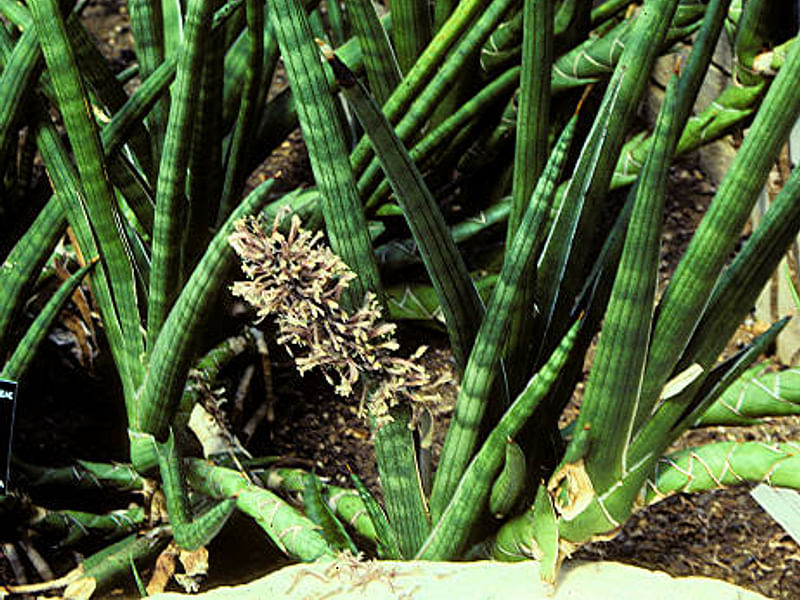
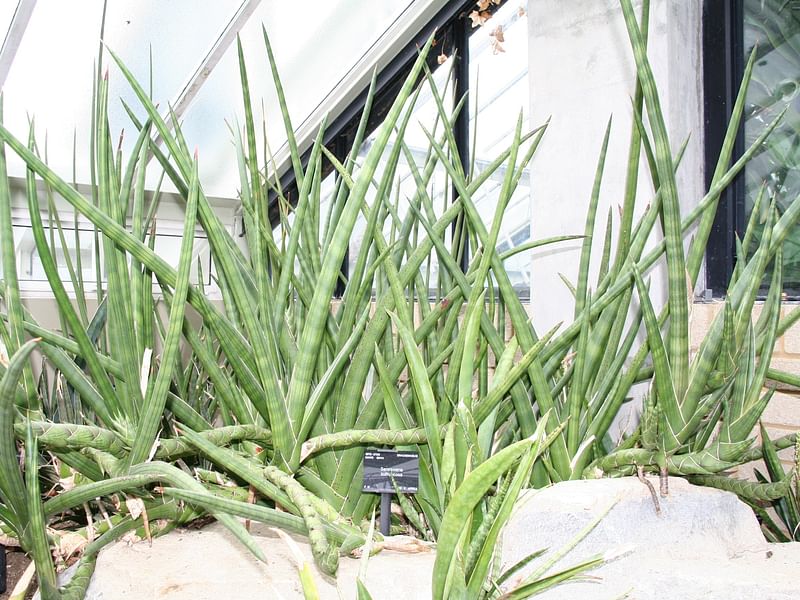

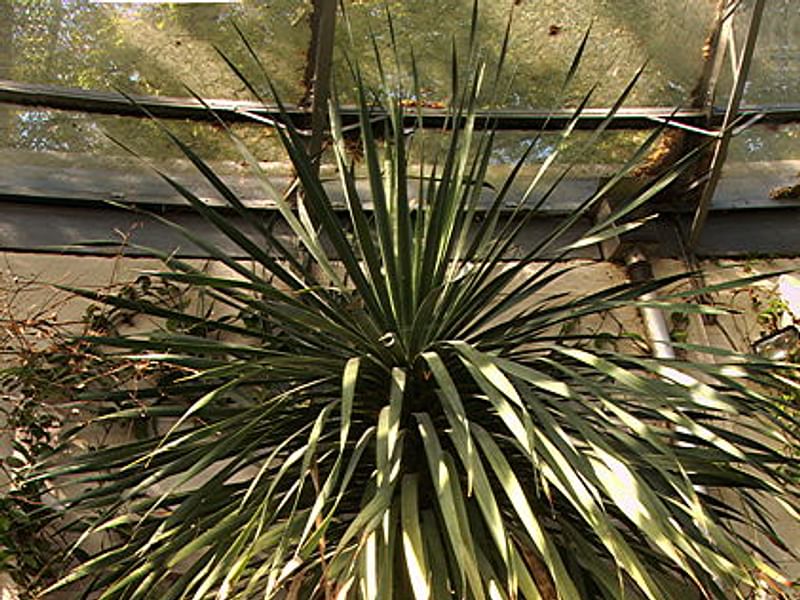
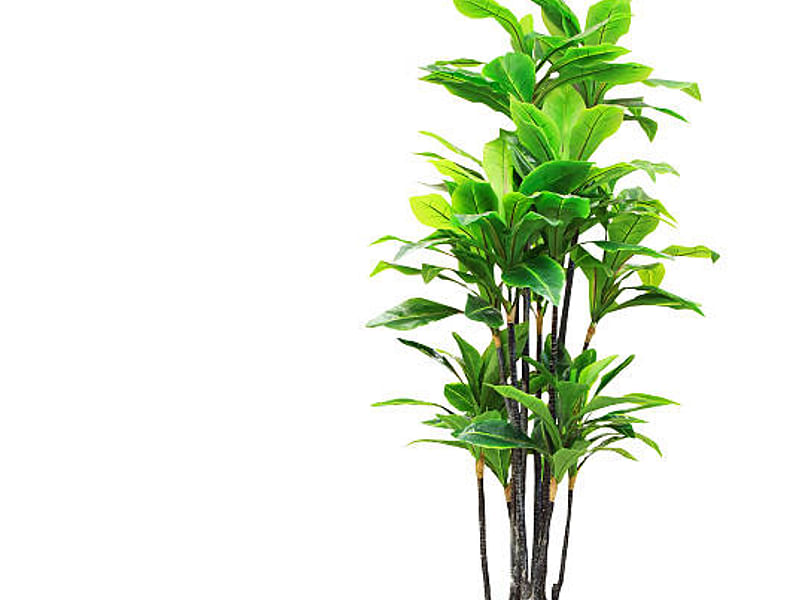
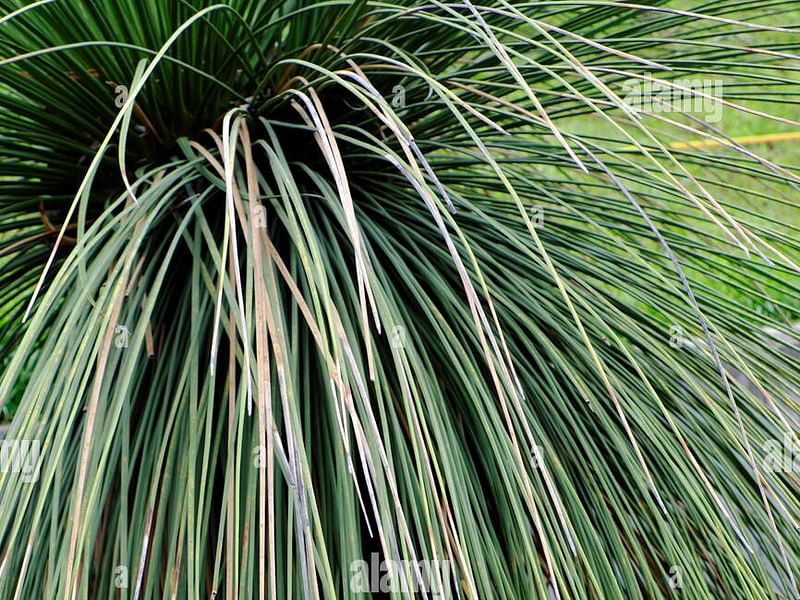
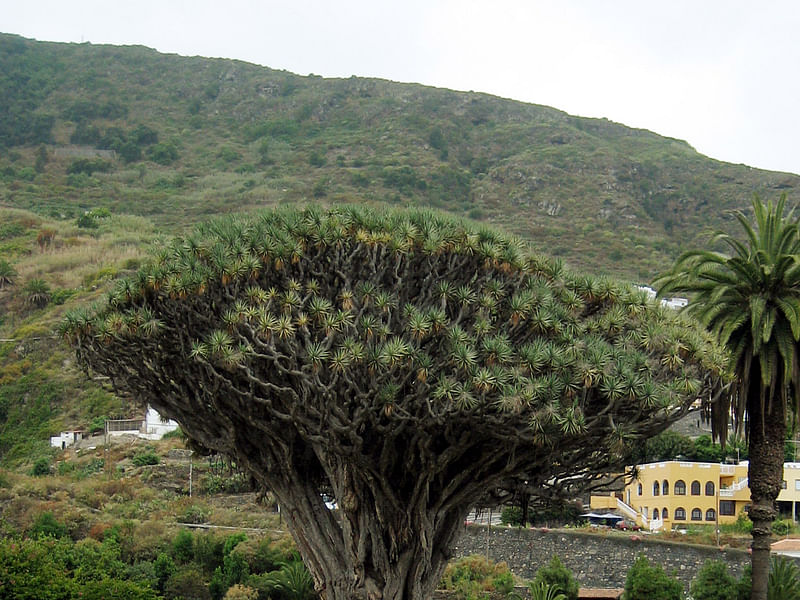
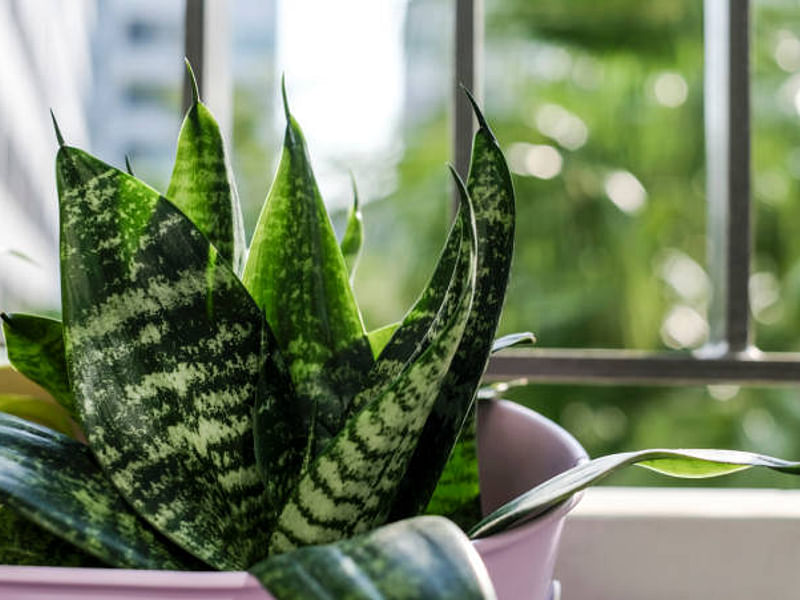
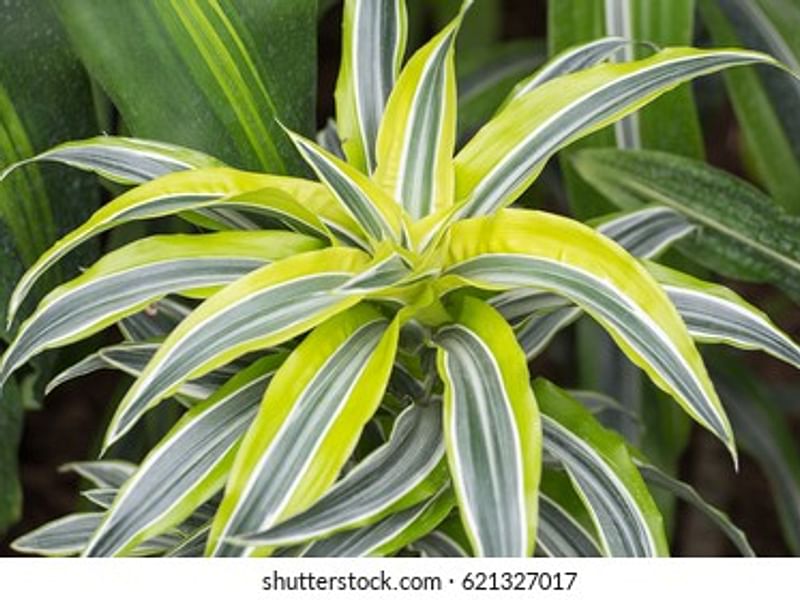


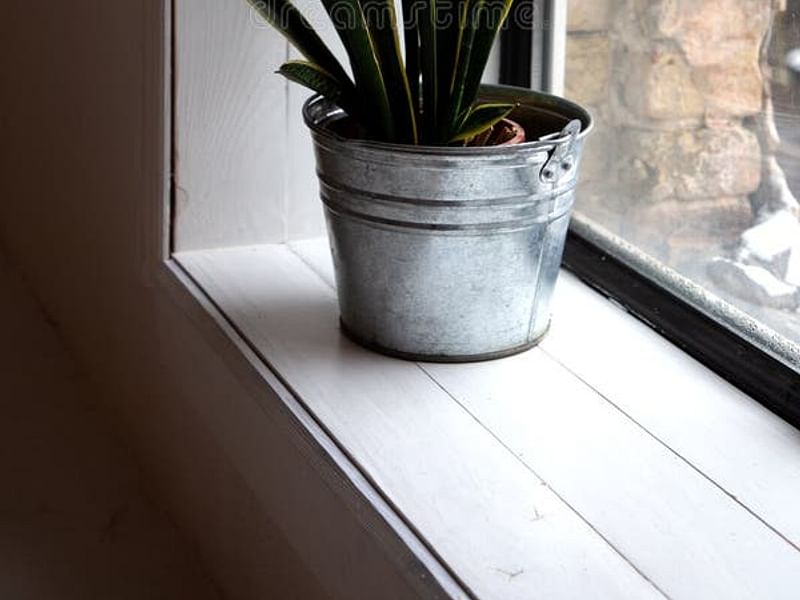


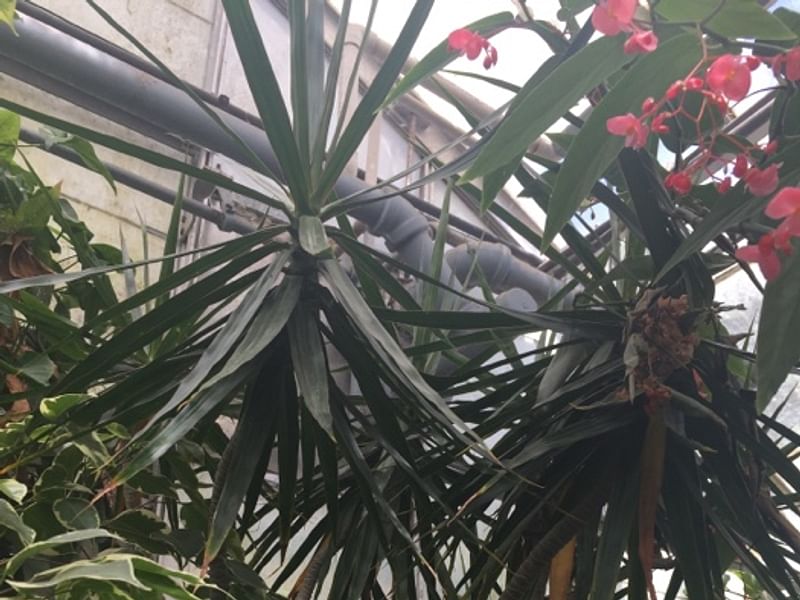

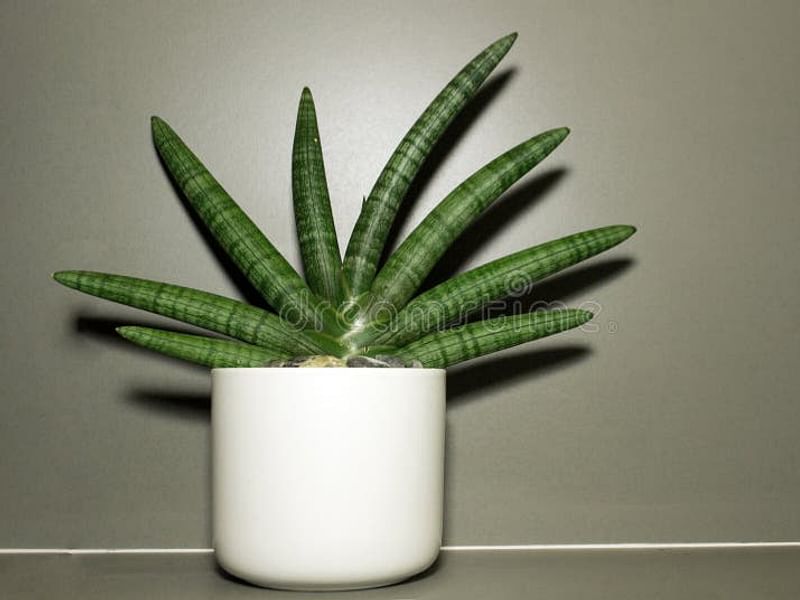

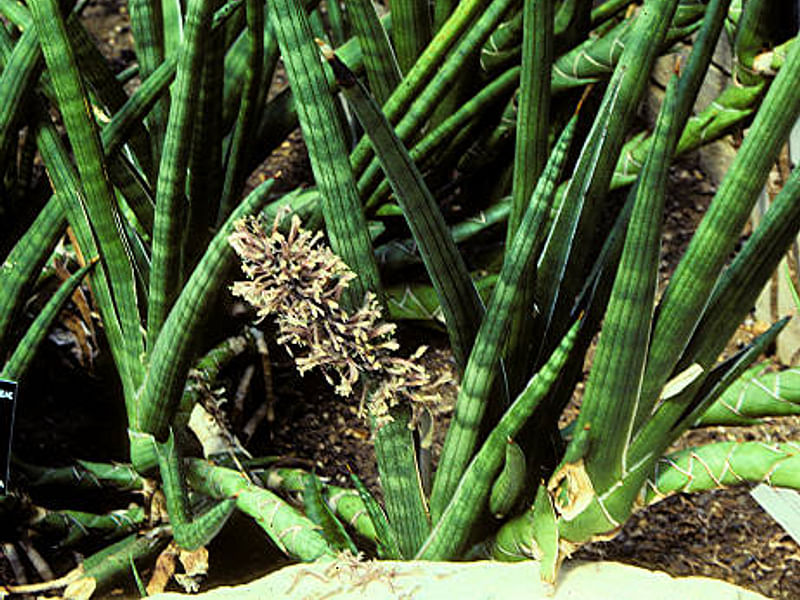
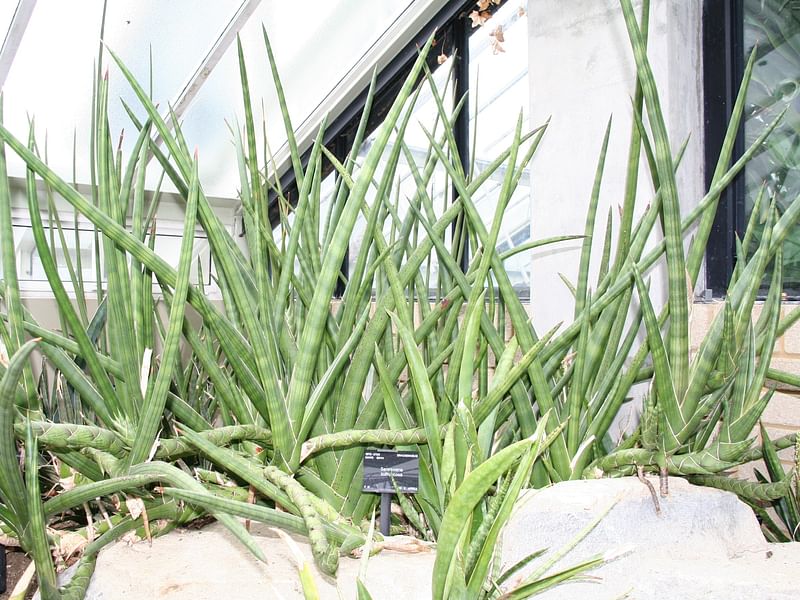


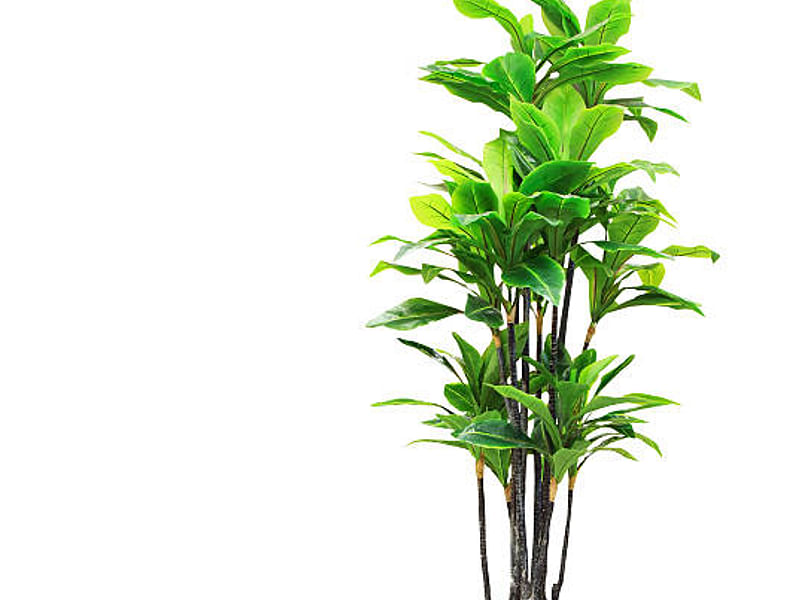
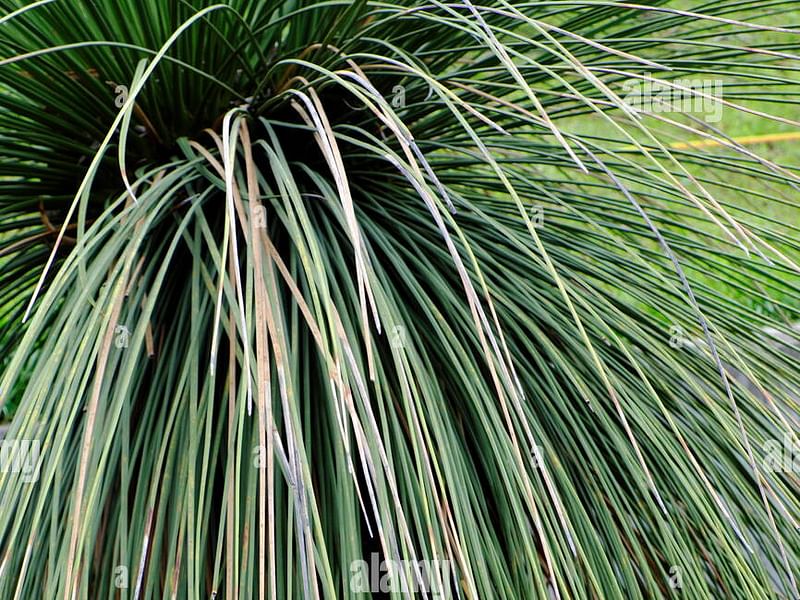
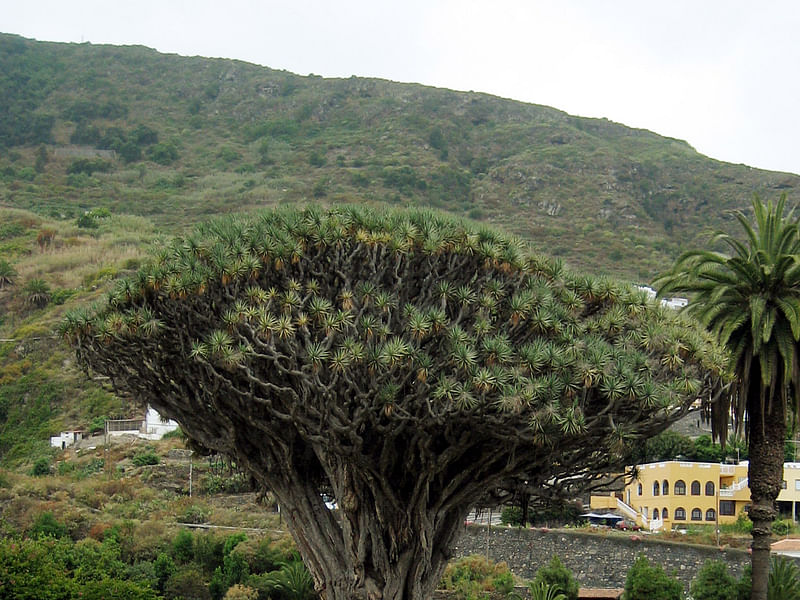

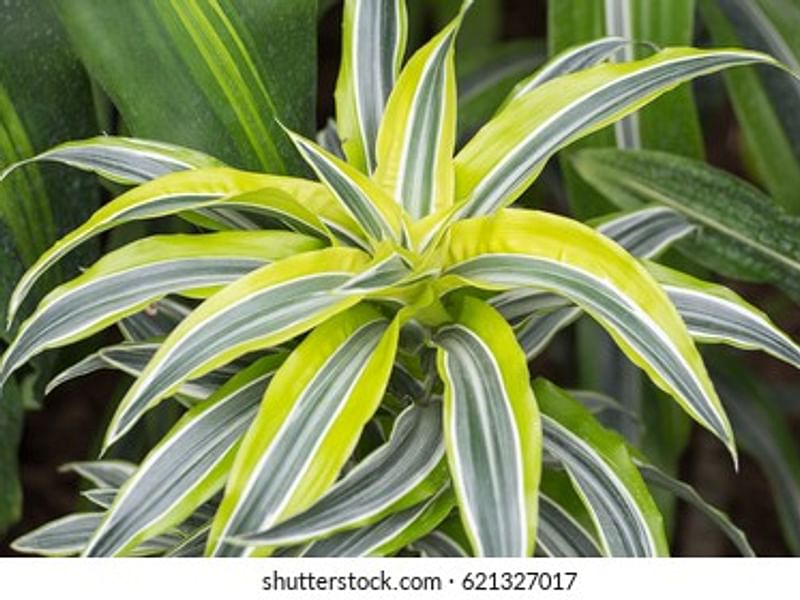

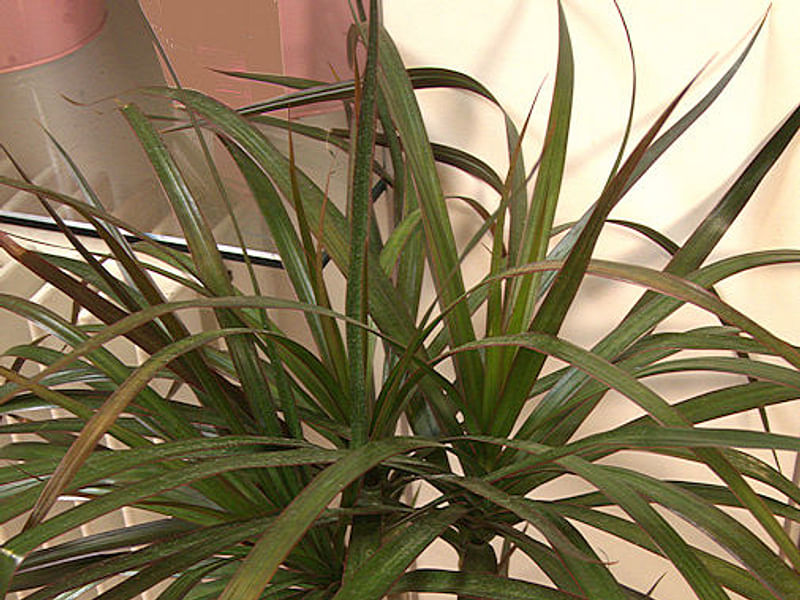
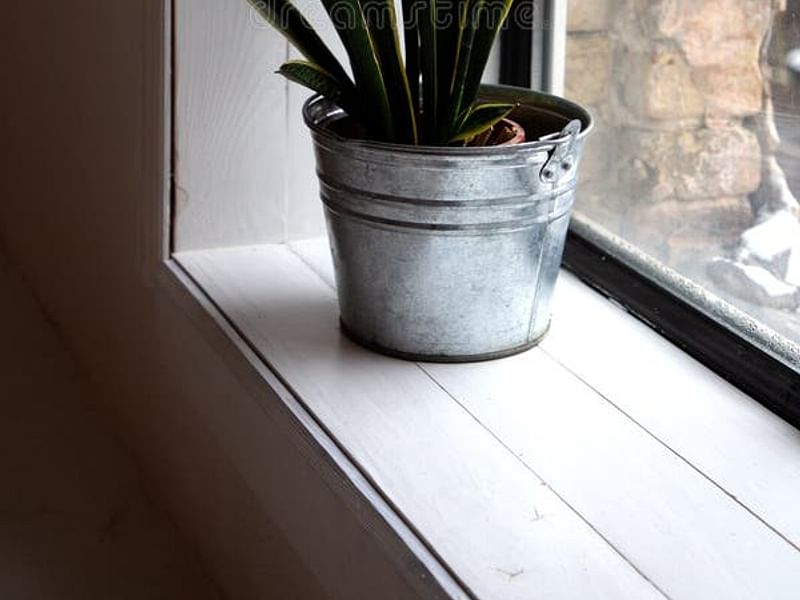




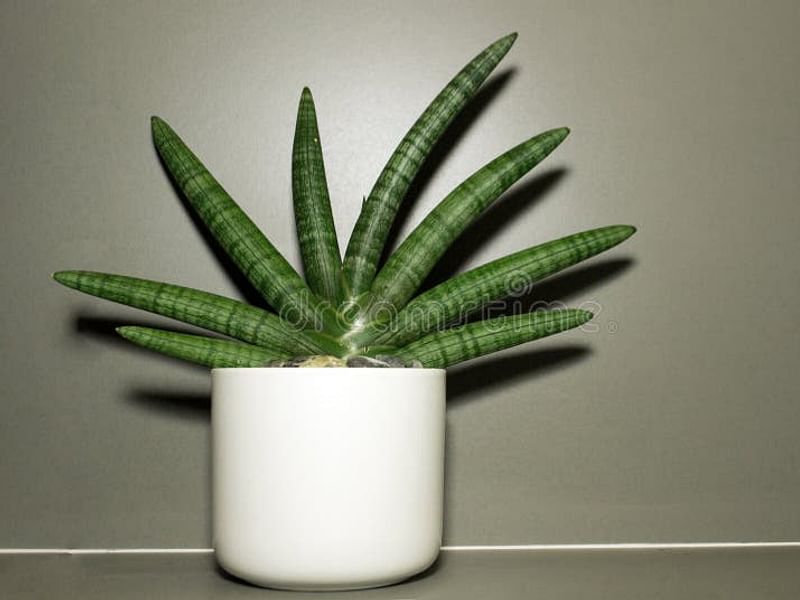
What is Dracaenaceae?
The Dracaenaceae family is a group of about 160 species of tropical trees, shrubs, and herbs in the genera Dracaena and Sansevieria. It includes popular houseplants like the snake plant and corn plant.
Native to Africa, Madagascar, and southern Asia, Dracaenaceae plants have unique and striking foliage that can range from green to variegated. They can adapt to various growing conditions and come in different sizes.
The leaves of Dracaenaceae plants are typically long, narrow, and succulent, making them ideal for drought-prone environments. The flowers are small and white or greenish-white, often arranged in clusters or spikes.
One well-known species in the Dracaenaceae family is the dragon tree (Dracaena draco), native to the Canary Islands and Morocco. It has a distinctive umbrella-shaped canopy and red sap known as "dragon's blood."
Another popular species is the snake plant (Sansevieria trifasciata), native to West Africa. It is a hardy and low-maintenance plant with long, upright leaves variegated with yellow or white stripes.
Whether you're looking for a striking houseplant or a hardy tree, there's a Dracaenaceae species for you.
Characteristics of Dracaenaceae
The Dracaenaceae family consists of about 160 species of tropical trees, shrubs, and herbs in the genera Dracaena and Sansevieria. It includes popular houseplants like the snake plant (Sansevieria trifasciata) and the corn plant (Dracaena fragrans).
These plants are native to Africa, Madagascar, and parts of Asia. They have unique and striking foliage, which can be variegated, striped, or solid green. The leaves are typically long, narrow, and succulent with parallel venation.
Dracaenaceae plants are easy to care for and can thrive in various conditions. They prefer bright, indirect light and well-draining soil. They are also drought-tolerant and can go for long periods without water.
One unique species in the Dracaenaceae family is the Dragon's Blood Tree (Dracaena cinnabari), native to the Socotra archipelago. It has an umbrella-shaped crown and red sap used in traditional medicine and dyes.
Besides their ornamental value, Dracaenaceae plants have other uses. Some species provide fiber for making rope and baskets. The sap of certain species is used to make gum, and the leaves of others are used in traditional medicine.
In conclusion, the Dracaenaceae family offers a diverse range of plants suitable for various growing conditions. Whether you want a striking houseplant or a hardy tree, there's a Dracaenaceae species for you.
Popular Dracaenaceae species
The Dracaenaceae family consists of about 160 species of tropical trees, shrubs, and herbs. It is divided into two genera: Dracaena and Sansevieria. Dracaena is the larger genus, with about 120 species of trees and succulent shrubs. Sansevieria has about 70 species of flowering plants commonly known as snake plants or mother-in-law's tongue.
These plants are native to Africa, Madagascar, and parts of Asia. They are known for their striking foliage, which can range from green to variegated. Some species grow as tall trees, while others are low-growing shrubs or succulents. The leaves are typically long, narrow, and have parallel veins with a stiff, leathery texture.
One well-known species in the Dracaenaceae family is Dracaena draco, also known as the dragon's blood tree. It has an umbrella-shaped canopy and a thick, gnarled trunk. The tree gets its name from the red sap it produces, historically used for medicinal purposes and as a dye.
Dracaenaceae plants are popular as ornamental plants and are often grown indoors. They are relatively easy to care for and can tolerate a range of conditions. However, they are sensitive to overwatering and can be prone to root rot. They prefer bright, indirect light and regular fertilization during the growing season.
In conclusion, the Dracaenaceae family offers a diverse group of plants with striking foliage. From towering trees to low-growing succulents, they can add interest and beauty to any garden or indoor space.
Caring for Dracaenaceae
The Dracaenaceae family consists of about 160 species of tropical trees, shrubs, and herbs in the genera Dracaena and Sansevieria. It includes popular houseplants like the snake plant (Sansevieria trifasciata) and the corn plant (Dracaena fragrans).
Dracaena is a genus of about 120 species of trees and succulent shrubs. The formerly accepted genera Pleomele and Sansevieria are now included in Dracaena. These plants are native to Africa, Madagascar, and southern Asia. They have striking foliage, which can be variegated, striped, or solid green. The leaves are typically long, narrow, and grow in a rosette pattern.
Dracaenaceae plants are hardy and easy to care for, making them popular houseplants. They tolerate low light and irregular watering, making them ideal for busy people or beginners. They are also known for their air-purifying properties, improving indoor air quality.
The dragon's blood tree (Dracaena cinnabari) is a unique member of the Dracaenaceae family. It is native to the Socotra archipelago and has an umbrella-shaped crown and red sap used in traditional medicine and dyes.
The Dracaenaceae family offers a wide range of sizes, shapes, and colors. Whether you want a low-maintenance houseplant or a striking specimen for your garden, there's a Dracaenaceae plant for you.
Propagation of Dracaenaceae
The Dracaenaceae family consists of about 160 species of tropical trees, shrubs, and herbs in the genera Dracaena and Sansevieria. It includes popular houseplants like the snake plant (Sansevieria trifasciata) and the corn plant (Dracaena fragrans).
These plants are native to Africa, Madagascar, and southern Asia. The Dracaenaceae family includes trees, shrubs, suffrutices, or rhizomatous geophytes, sometimes succulent, glabrous, and ranging in height from less than 10 cm to over 40 m.
The leaves of Dracaenaceae plants are alternate, entire, with parallel venation, and often succulent. The flowers are small, usually white or greenish-white, arranged in panicles or racemes. The fruit can be a berry or a capsule.
The genus Dracaena includes about 120 species of trees and succulent shrubs. The formerly accepted genera Pleomele and Sansevieria are now included in Dracaena. Some popular species are Dracaena marginata, Dracaena fragrans, and Dracaena reflexa.
The genus Sansevieria includes about 70 species of succulent plants commonly known as snake plants or mother-in-law's tongue. These plants are popular for their ease of care and air-purifying properties. Some popular species are Sansevieria trifasciata, Sansevieria cylindrica, and Sansevieria moonshine.
The Dracaenaceae family has been used for medicinal purposes in traditional medicine. The sap of some Dracaena species has been used to treat respiratory problems, stomach ulcers, and skin diseases. The sap of Dracaena cinnabari, also known as the Dragon's Blood Tree, has antiviral and antibacterial properties and has been used as a dye.
In conclusion, the Dracaenaceae family offers a diverse group of plants that are popular as houseplants. With their air-purifying properties and unique appearance, they are a great addition to any home or office.
Common problems with Dracaenaceae
The Dracaenaceae family consists of about 160 species of tropical trees, shrubs, and herbs in the genera Dracaena and Sansevieria. It is commonly known as the Dragon Tree family, named after the Dracaena genus, which includes the famous Dragon's Blood Tree (Dracaena cinnabari).
These plants are native to Africa, Madagascar, and southern Asia. They have striking foliage and unique growth habits. The leaves are typically long, narrow, and often succulent with parallel veins. The plants can range in size from less than 10 cm to over 40 m tall, depending on the species.
The Dragon Tree family includes both succulent and non-succulent plants. Some species are unbranched suffrutices or rhizomatous geophytes, while others are trees or shrubs. The plants are often used for ornamental purposes due to their unique appearance and low maintenance requirements.
The Dragon Tree family has a rich history and mythology associated with it. In ancient times, the resin from the Dragon's Blood Tree was used for medicinal purposes and believed to have magical properties. The plants were also used for making dyes and varnishes.
Today, the Dragon Tree family is still highly valued for its ornamental and cultural significance. With their unique appearance and low maintenance requirements, they are a popular choice for gardeners of all levels of experience.
If you're looking to add some exotic flair to your garden or home, consider adding a plant from the Dracaenaceae family. With their striking foliage and rich history, they are sure to be a conversation starter!
Categories
Are Dracaena plants toxic to dogs?
Yes, Dracaena plants are toxic to dogs. Dracaena is a genus of plants in the family Dracaenaceae, which includes a variety of species such as the Corn plant (also known as cornstalk plant, dragon tree, and ribbon plant). These plants contain saponins, which are toxic to dogs and cats. If ingested, symptoms can include vomiting (with or without blood), appetite loss, depression, and increased salivation. It is important to keep Dracaena plants out of reach of pets to prevent accidental ingestion. As a succulent expert, it is important to educate pet owners about the potential dangers of certain plants and provide alternative options that are safe for pets. This information is relevant to SucculentHelp as it is important to provide comprehensive care information for succulent owners, including potential hazards to pets.Do Dracaena plants attract bugs?
Dracaena plants are not known for attracting bugs, but like any other plant, they can be susceptible to pests. The most common pests that can affect Dracaena plants are scale insects and mealybugs. These pests are usually found on the undersides of leaves and can be controlled with insecticidal soap or neem oil. Another factor that can attract bugs to Dracaena plants is excessive new growth caused by too much nitrogen. This can draw aphids and other bugs that eat the plant and weaken it. To prevent this, it is important to provide the plant with the right amount of nutrients and avoid over-fertilizing. Overall, Dracaena plants are relatively low-maintenance and can be a great addition to any succulent collection.Are Dracaena toxic to cats?
Yes, Dracaena plants are toxic to cats. Dracaena species plants contain saponins which may cause drooling, vomiting, weakness, incoordination and dilated pupils (cats) when ingested. It is important to keep these plants out of reach of cats and other pets. If you suspect that your cat has ingested any part of a Dracaena plant, you should contact your veterinarian immediately. As a succulent expert, it is important to educate yourself and others about the potential dangers of certain plants to pets. SucculentHelp can provide valuable information on pet-friendly succulent options and how to care for them safely.Search
Family
- Family
- Agavaceae
- Agave Albomarginata | Agave | Agavaceae
- Agave | Agavaceae
- Agave Americana | Agave | Agavaceae
- Agave Americana, Variegated | Agave | Agavaceae
- Agave Americana, Variegated | Agave | Agavaceae
- Agave X Arizonica | Agave | Agavaceae
- Agave Attenuata | Agave | Agavaceae
- Agave Bovicornuta | Agave | Agavaceae
- Agave Bracteosa | Agave | Agavaceae
- Agave Bracteosa | Agave | Agavaceae
- Agave Cerulata Var. Subcerulata | Agave | Agavaceae
- Agave Chiapensis | Agave | Agavaceae
- Agave Chiapensis | Agave | Agavaceae
- Agave Colorata | Agave | Agavaceae
- Agave Desertii | Agave | Agavaceae
- Agave Desertii Flower | Agave | Agavaceae
- Agave Desmetiana Variegata - Photo: Michael Thau 2015 | Agave | Agavaceae
- Agave Difformis | Agave | Agavaceae
- Agave Durangensis | Agave | Agavaceae
- Agave Filifera | Agave | Agavaceae
- Agave Filifera | Agave | Agavaceae
- Agave Xleopoldii = A. Filifera X A. Filifera Ssp. Schidigera | Agave | Agavaceae
- Agave Funkiana | Agave | Agavaceae
- Agave Geminiflora | Agave | Agavaceae
- Agave Gigantensis | Agave | Agavaceae
- Agave Guadalajarana | Agave | Agavaceae
- Agave Gypsophila | Agave | Agavaceae
- Agave Havardiana | Agave | Agavaceae
- Agave Lechuguilla | Agave | Agavaceae
- Agave Lechuguilla Flower | Agave | Agavaceae
- Agave Lophantha | Agave | Agavaceae
- Agave Macroacantha | Agave | Agavaceae
- Agave Lophantha 'Quadricolor' | Agave | Agavaceae
- Agave Mitis | Agave | Agavaceae
- Agave Mitis Var. Albidior | Agave | Agavaceae
- Agave Mitis Var. Albidior | Agave | Agavaceae
- Agave Montana | Agave | Agavaceae
- Agave Murpheyi | Agave | Agavaceae
- Agave Ocahui | Agave | Agavaceae
- Agave Nizandensis | Agave | Agavaceae
- Agave Ocahui Var. Longifolia | Agave | Agavaceae
- Agave Parrasana | Agave | Agavaceae
- Agave Palmeri | Agave | Agavaceae
- Agave Parryi Form1, Organ Pipe Monument, Arizona | Agave | Agavaceae
- Agave Parryi Form 2 Cultivated | Agave | Agavaceae
- Agave Parryi, Guadalupe Mountains NM. Photo: John Moerk 2004 | Agave | Agavaceae
- Agave Pelona | Agave | Agavaceae
- Agave Polianthiflora | Agave | Agavaceae
- Agave Potatorum Cv. 'Kichiokan' | Agave | Agavaceae
- Agave Salmiana | Agave | Agavaceae
- Agave Schottii Flower | Agave | Agavaceae
- Agave Schottii Var. Treleasei | Agave | Agavaceae
- Agave Spicata | Agave | Agavaceae
- Agave Parviflora | Agave | Agavaceae
- Agave Potatorum Cultivated | Agave | Agavaceae
- Agave Pumila | Agave | Agavaceae
- Agave Schottii | Agave | Agavaceae
- Agave Sisalana | Agave | Agavaceae
- Agave Stricta Grown Outside In The Rock Garden At RBG Kew | Agave | Agavaceae
- Agave Stricta In The Princess Of Wales Conservatory, RBG Kew | Agave | Agavaceae
- Agave Stricta Var. Pallida | Agave | Agavaceae
- Agave Tequilana | Agave | Agavaceae
- Agave Titanota | Agave | Agavaceae
- Agave Toumeyana Ssp. Bella | Agave | Agavaceae
- Agave Toumeyana Ssp. Toumeyana | Agave | Agavaceae
- Agave Utahensis | Agave | Agavaceae
- Agave Victoriae-reginae | Agave | Agavaceae
- Agave Vilmoriniana | Agave | Agavaceae
- Agave Warelliana | Agave | Agavaceae
- Agave Weberi | Agave | Agavaceae
- Agave Wocomahi | Agave | Agavaceae
- Beschorneria | Agavaceae
- Beschorneria Albiflora | Beschorneria | Agavaceae
- Beschorneria Septentrionalis | Beschorneria | Agavaceae
- Beschorneria Septentrionalis | Beschorneria | Agavaceae
- Beschorneria Yuccoides | Beschorneria | Agavaceae
- Beschorneria Yuccoides | Beschorneria | Agavaceae
- Furcraea | Agavaceae
- Furcraea Cahum | Furcraea | Agavaceae
- Furcraea Foetida - Photo: Lowell B. Smith | Furcraea | Agavaceae
- Furcraea Longaeva | Furcraea | Agavaceae
- Furcraea Longaeva Flower | Furcraea | Agavaceae
- Furcraea Selloa Var Marginata - Photo: Phil Parker | Furcraea | Agavaceae
- Hesperaloe | Agavaceae
- Hesperaloe Campanulata | Hesperaloe | Agavaceae
- Hesperaloe Parviflora | Hesperaloe | Agavaceae
- Hesperocallis | Agavaceae
- Hesperocallis Undulata - Mojave Desert Reserve | Hesperocallis | Agavaceae
- Yucca | Agavaceae
- Yucca Aloifolia | Yucca | Agavaceae
- Yucca Aloifolia Variegata | Yucca | Agavaceae
- Yucca Aloifolia 'Vittorio Emanuele II | Yucca | Agavaceae
- Yucca Angustissima Subsp. Kanabensis | Yucca | Agavaceae
- Yucca Baccata | Yucca | Agavaceae
- Yucca Brevifolia | Yucca | Agavaceae
- Yucca Constricta | Yucca | Agavaceae
- Yucca Decipiens | Yucca | Agavaceae
- Yucca Elata | Yucca | Agavaceae
- Yucca Elephantipes Syn. Y. Guatemalensis Photo: Peter Hodgkiss | Yucca | Agavaceae
- Yucca Faxoniana | Yucca | Agavaceae
- Yucca Filamentosa | Yucca | Agavaceae
- Yucca Filamentosa Cv. Bright Edge | Yucca | Agavaceae
- Yucca Filifera | Yucca | Agavaceae
- Yucca Flaccida | Yucca | Agavaceae
- Yucca Flaccida Garland's Gold | Yucca | Agavaceae
- Yucca Glauca | Yucca | Agavaceae
- Yucca Glauca Var. Stricta Syn. Yucca Angustifolia | Yucca | Agavaceae
- Yucca Glauca Var. Stricta Syn. Yucca Angustifolia | Yucca | Agavaceae
- Yucca Gloriosa Nobilis | Yucca | Agavaceae
- Yucca Gloriosa Variegata | Yucca | Agavaceae
- Yucca Aff Harrimaniae | Yucca | Agavaceae
- Yucca Natural Hybrid | Yucca | Agavaceae
- Yucca Rostrata | Yucca | Agavaceae
- Yucca Schidigera | Yucca | Agavaceae
- Yucca Torreyi | Yucca | Agavaceae
- Yucca Treculeana | Yucca | Agavaceae
- Yucca Whipplei | Yucca | Agavaceae
- Aizoaceae
- Acrodon | Aizoaceae
- Acrodon Bellidiflorus | Acrodon | Aizoaceae
- Aloinopsis | Aizoaceae
- Aloinopsis Luckhoffii Syn. Aloinopsis Setifera | Aloinopsis | Aizoaceae
- Aloinopsis Orpenii Syn. Prepodesma Orpenii | Aloinopsis | Aizoaceae
- Antimima | Aizoaceae
- Antimima Concinna | Antimima | Aizoaceae
- Aptenia | Aizoaceae
- Aptenia Cordifolia | Aptenia | Aizoaceae
- Argyroderma | Aizoaceae
- Argyroderma Patens | Argyroderma | Aizoaceae
- Bijlia | Aizoaceae
- Bijlia Tugwelliae | Bijlia | Aizoaceae
- Braunsia | Aizoaceae
- Braunsia Apiculata | Braunsia | Aizoaceae
- Carpobrotus | Aizoaceae
- Carpobrotus Edulis | Carpobrotus | Aizoaceae
- Carpobrotus Chilensis | Carpobrotus | Aizoaceae
- Carpobrotus Chilensis | Carpobrotus | Aizoaceae
- Carruanthus | Aizoaceae
- Carruanthus Peersii | Carruanthus | Aizoaceae
- Carruanthus Ringens | Carruanthus | Aizoaceae
- Cheiridopsis | Aizoaceae
- Cheiridopsis Caroli-schmidtii | Cheiridopsis | Aizoaceae
- Cheiridopsis Caroli-schmidtii Flower | Cheiridopsis | Aizoaceae
- Cheiridopsis Namaquensis Syn. Cheiridopsis Cigarettifera | Cheiridopsis | Aizoaceae
- Cheiridopsis Namaquensis Syn. Cheiridopsis Cigarettifera | Cheiridopsis | Aizoaceae
- Cheiridopsis Denticulata | Cheiridopsis | Aizoaceae
- Cheiridopsis Speciosa | Cheiridopsis | Aizoaceae
- Conophytum | Aizoaceae
- Conophytum Bilobum | Conophytum | Aizoaceae
- Conophytum Bilobum | Conophytum | Aizoaceae
- Conophytum Fraternum | Conophytum | Aizoaceae
- Conophytum Minutum | Conophytum | Aizoaceae
- Conophytum Recisum | Conophytum | Aizoaceae
- Conophytum Velutinum | Conophytum | Aizoaceae
- Delosperma | Aizoaceae
- Delosperma Brunnthaleri | Delosperma | Aizoaceae
- Delosperma Congestum 'Gold Nugget' | Delosperma | Aizoaceae
- Delosperma Cooperi Photo: Gary Levine 2002 | Delosperma | Aizoaceae
- Delosperma Echinatum | Delosperma | Aizoaceae
- Delosperma Esterhuyseriae | Delosperma | Aizoaceae
- Delosperma Kofleri | Delosperma | Aizoaceae
- Delosperma Nubigenum | Delosperma | Aizoaceae
- Delosperma 'Ruby Coral' | Delosperma | Aizoaceae
- Delosperma Sutherlandii | Delosperma | Aizoaceae
- Delosperma Taylorii | Delosperma | Aizoaceae
- Dorotheanthus | Aizoaceae
- Dorotheanthus Gramineus | Dorotheanthus | Aizoaceae
- Drosanthemum | Aizoaceae
- Drosanthemum Hispidum | Drosanthemum | Aizoaceae
- Ebracteola | Aizoaceae
- Ebracteola Montis-moltkei | Ebracteola | Aizoaceae
- Faucaria | Aizoaceae
- Faucaria Felina | Faucaria | Aizoaceae
- Faucaria Tigrina | Faucaria | Aizoaceae
- Fenestraria | Aizoaceae
- Fenestraria Rhopalophylla Subspecies Aurantiaca | Fenestraria | Aizoaceae
- Gibbaeum | Aizoaceae
- Gibbaeum Dispar | Gibbaeum | Aizoaceae
- Gibbaeum Heathii | Gibbaeum | Aizoaceae
- Gibbaeum Velutinum | Gibbaeum | Aizoaceae
- Glottiphyllum | Aizoaceae
- Glottiphyllum Longum Syn. G. Propinquum | Glottiphyllum | Aizoaceae
- Glottiphyllum Nelii Syn. G. Pygmaeum | Glottiphyllum | Aizoaceae
- Glottiphyllum Oligocarpum | Glottiphyllum | Aizoaceae
- Glottiphyllum Peersii | Glottiphyllum | Aizoaceae
- Glottiphyllum Regium Syn. G. Compressum | Glottiphyllum | Aizoaceae
- Hereroa | Aizoaceae
- Hereroa Calycina | Hereroa | Aizoaceae
- Lampranthus | Aizoaceae
- Lampranthus Aureus | Lampranthus | Aizoaceae
- Lampranthus Deltoides | Lampranthus | Aizoaceae
- Lampranthus Haworthiodes | Lampranthus | Aizoaceae
- Lithops | Aizoaceae
- Lithops Bromfieldii Var. Insularis Cv. Sulphurea | Lithops | Aizoaceae
- Lithops Karasmontana Ssp. Bella Seedlings | Lithops | Aizoaceae
- Lithops Lesliei | Lithops | Aizoaceae
- Lithops Marmorata | Lithops | Aizoaceae
- Lithops Olivacea | Lithops | Aizoaceae
- Lithops Localis | Lithops | Aizoaceae
- Lithops Localis | Lithops | Aizoaceae
- Maleophora | Aizoaceae
- Maleophora Crocea | Maleophora | Aizoaceae
- Marlothistella | Aizoaceae
- Marlothistella Uniondalensis | Marlothistella | Aizoaceae
- Mesembryanthemum | Aizoaceae
- Mesembryanthemum Crystallinum | Mesembryanthemum | Aizoaceae
- Nananthus | Aizoaceae
- Nananthus Vittatus | Nananthus | Aizoaceae
- Pleiospilos | Aizoaceae
- Pleiospilos Bolusii | Pleiospilos | Aizoaceae
- Pleiospilos Compactus Ssp. Cana | Pleiospilos | Aizoaceae
- Pleiospilos Nelii | Pleiospilos | Aizoaceae
- Rhinephyllum | Aizoaceae
- Rhinephyllum Graniforme | Rhinephyllum | Aizoaceae
- Ruschia | Aizoaceae
- Ruschia Calycina Syn. Zeuktophyllum Calycinum | Ruschia | Aizoaceae
- Ruschia Maxima | Ruschia | Aizoaceae
- Ruschia Perfoliata | Ruschia | Aizoaceae
- Ruschianthus | Aizoaceae
- Ruschianthus Falcatus - Photo Joel Lode | Ruschianthus | Aizoaceae
- Stomatium | Aizoaceae
- Stomatium Bryantii | Stomatium | Aizoaceae
- Trichodiadema | Aizoaceae
- Trichodiadema Stellatum | Trichodiadema | Aizoaceae
- Aloe | Aloaceae
- Aloaceae
- Aloe Aculeata | Aloe | Aloaceae
- Aloe Acutissima | Aloe | Aloaceae
- Aloe Affinis | Aloe | Aloaceae
- Aloe Africana | Aloe | Aloaceae
- Aloe Arborescens | Aloe | Aloaceae
- Aloe Arborescens Variegata | Aloe | Aloaceae
- Aloe Arenicola | Aloe | Aloaceae
- Aloe Aristata | Aloe | Aloaceae
- Aloe Barberae Syn. Aloe Bainesii | Aloe | Aloaceae
- Aloe Bellatula | Aloe | Aloaceae
- Aloe Brevifolia | Aloe | Aloaceae
- Aloe Buhrii | Aloe | Aloaceae
- Aloe Bulbillifera | Aloe | Aloaceae
- Aloe Bulbillifera | Aloe | Aloaceae
- Aloe Cameronii | Aloe | Aloaceae
- Aloe Capitata Var. Gneissicola | Aloe | Aloaceae
- Aloe Ciliaris | Aloe | Aloaceae
- Aloe Classenii | Aloe | Aloaceae
- Aloe Classenii | Aloe | Aloaceae
- Aloe Cooperi - Photo: Marissa Lilly 2018 | Aloe | Aloaceae
- Aloe Deltoideodonta | Aloe | Aloaceae
- Aloe Dichotoma | Aloe | Aloaceae
- Aloe Dorotheae | Aloe | Aloaceae
- Aloe Ellenbeckii | Aloe | Aloaceae
- Aloe Excelsa | Aloe | Aloaceae
- Aloe Falcata | Aloe | Aloaceae
- Aloe Ferox | Aloe | Aloaceae
- Aloe Forbesii | Aloe | Aloaceae
- Aloe Helenae | Aloe | Aloaceae
- Aloe Juvenna | Aloe | Aloaceae
- Aloe Lateritia | Aloe | Aloaceae
- Aloe Leptosyphon Syn. Aloe Greenwayi | Aloe | Aloaceae
- Aloe Marlothii | Aloe | Aloaceae
- Aloe Microstigma | Aloe | Aloaceae
- Aloe Millotii | Aloe | Aloaceae
- Aloe Musapana | Aloe | Aloaceae
- Aloe Mitriformis | Aloe | Aloaceae
- Aloe Newtonii | Aloe | Aloaceae
- Aloe Palmiformis | Aloe | Aloaceae
- Aloe Peckii | Aloe | Aloaceae
- Aloe Petricola | Aloe | Aloaceae
- Aloe Pendens | Aloe | Aloaceae
- Aloe Plicatilis | Aloe | Aloaceae
- Aloe X Principis | Aloe | Aloaceae
- Aloe Polyphylla | Aloe | Aloaceae
- Aloe Pseudorubroviolaceae | Aloe | Aloaceae
- Lomatophyllum Purpureum | Aloe | Aloaceae
- Aloe Ramosissima | Aloe | Aloaceae
- Aloe Reitzi | Aloe | Aloaceae
- Aloe Reynoldsii | Aloe | Aloaceae
- Aloe Rupestris | Aloe | Aloaceae
- Aloe Secundiflora | Aloe | Aloaceae
- Aloe Sinkatana | Aloe | Aloaceae
- Aloe Sinkatana | Aloe | Aloaceae
- Aloe Speciosa | Aloe | Aloaceae
- Aloe X Spinosissima | Aloe | Aloaceae
- Aloe Squarrosa Flower | Aloe | Aloaceae
- Aloe Striatula | Aloe | Aloaceae
- Aloe Striatula | Aloe | Aloaceae
- Aloe Tenuior | Aloe | Aloaceae
- Aloe Tomentosa | Aloe | Aloaceae
- Aloe Vacillans | Aloe | Aloaceae
- Aloe Vaombe | Aloe | Aloaceae
- Aloe Vaombe | Aloe | Aloaceae
- Aloe Vera | Aloe | Aloaceae
- Aloe Volkensii | Aloe | Aloaceae
- Aloe Wickensii | Aloe | Aloaceae
- Aloe Yemenica | Aloe | Aloaceae
- Gasteraloe | Aloaceae
- Aloe X Cosmo | Gasteraloe | Aloaceae
- Astroloba | Aloaceae
- Astroloba Congesta | Astroloba | Aloaceae
- Astroloba Foliosa | Astroloba | Aloaceae
- Bulbine | Aloaceae
- Bulbine Frutescens | Bulbine | Aloaceae
- Bulbine Frutescens Stamens | Bulbine | Aloaceae
- Bulbine Latifolia | Bulbine | Aloaceae
- Bulbine Latifolia Stamens | Bulbine | Aloaceae
- Bulbine Semibarbata | Bulbine | Aloaceae
- Bulbine Semibarbata | Bulbine | Aloaceae
- Bulbinella Hookeri | Bulbinella | Aloaceae
- Gasteria | Aloaceae
- Bulbinella | Aloaceae
- Bulbinella Hookeri | Bulbinella | Aloaceae
- Bulbinella Hookeri | Bulbinella | Aloaceae
- Gasteria Acinacifolia | Gasteria | Aloaceae
- Gasteria Baylissiana | Gasteria | Aloaceae
- Gasteria Baylissiana Flower | Gasteria | Aloaceae
- Gasteria Bicolor Var Bicolor | Gasteria | Aloaceae
- Gasteria Bicolor Var Liliputiana | Gasteria | Aloaceae
- Gasteria Bicolor Var Liliputiana Flower | Gasteria | Aloaceae
- Gasteria Brachyphylla Var. Brachyphylla | Gasteria | Aloaceae
- Gasteria Brachyphylla Var. Brachyphylla Flower | Gasteria | Aloaceae
- Gasteria Carinata Var. Carinata | Gasteria | Aloaceae
- Gasteria Carinata Var. Carinata Flower | Gasteria | Aloaceae
- Gasteria Carinata Var. Verrucosa | Gasteria | Aloaceae
- Gasteria Carinata Var. Verrucosa | Gasteria | Aloaceae
- Gasteria Dicta | Gasteria | Aloaceae
- Gasteria Dicta Flower | Gasteria | Aloaceae
- Gasteria Disticha | Gasteria | Aloaceae
- Gasteria Disticha | Gasteria | Aloaceae
- Gasteria Glomerata | Gasteria | Aloaceae
- Gasteria Multipunctata | Gasteria | Aloaceae
- Gasteria Glomerata | Gasteria | Aloaceae
- Gasteria Multipunctata | Gasteria | Aloaceae
- Gasteria Nitida Var. Nitida | Gasteria | Aloaceae
- Gasteria Pillansii | Gasteria | Aloaceae
- Gasteria Pseudonigricans | Gasteria | Aloaceae
- Gasteria Pseudonigricans | Gasteria | Aloaceae
- Gasteria Rawlinsonii | Gasteria | Aloaceae
- Gasteria Rawlinsonii | Gasteria | Aloaceae
- Haworthia | Aloaceae
- Haworthia Arachnoidea Var. Pearsonii | Haworthia | Aloaceae
- Haworthia Attenuata Var. Attenuata | Haworthia | Aloaceae
- Haworthia Attenuata F. Caespitosa | Haworthia | Aloaceae
- Haworthia Attenuata Var. Radula | Haworthia | Aloaceae
- Haworthia Bolusii Var. Blackbeardiana | Haworthia | Aloaceae
- Haworthia Coarctata | Haworthia | Aloaceae
- Haworthia Coarctata Fa. Greenii | Haworthia | Aloaceae
- Haworthia Cuspidata | Haworthia | Aloaceae
- Haworthia Cymbiformis Var. Cymbiformis | Haworthia | Aloaceae
- Haworthia Glauca Var. Herrei | Haworthia | Aloaceae
- Haworthia Herbacea | Haworthia | Aloaceae
- Haworthia Longiana | Haworthia | Aloaceae
- Haworthia Kewensis | Haworthia | Aloaceae
- Haworthia Limifolia | Haworthia | Aloaceae
- Haworthia Mantellii | Haworthia | Aloaceae
- Haworthia Marumiana | Haworthia | Aloaceae
- Haworthia Marumiana Var. Batesiana | Haworthia | Aloaceae
- Haworthia Mucronata | Haworthia | Aloaceae
- Haworthia Parksiana | Haworthia | Aloaceae
- Haworthia Pumilla | Haworthia | Aloaceae
- Haworthia Pygmaea | Haworthia | Aloaceae
- Haworthia Reinwardtii - Photo: Diana Burrola | Haworthia | Aloaceae
- Haworthia Resendeana | Haworthia | Aloaceae
- Haworthia Rigida | Haworthia | Aloaceae
- Haworthia Retusa | Haworthia | Aloaceae
- Haworthia Truncata | Haworthia | Aloaceae
- Haworthia Venosa Ssp. Tessellata | Haworthia | Aloaceae
- Haworthia Viscosa | Haworthia | Aloaceae
- Amaranthaceae
- Allenrolfea | Amaranthaceae
- Allenrolfea Occidentalis - Death Valley | Allenrolfea | Amaranthaceae
- Beta | Amaranthaceae
- Beta Vulgaris Subsp. Maritima - Durlston Cliffs, Dorset | Beta | Amaranthaceae
- Salicornia | Amaranthaceae
- Salicornia Dolichostachya - Photo: Peter Russell | Salicornia | Amaranthaceae
- Salicornia Europea | Salicornia | Amaranthaceae
- Salicornia Ramosissima | Salicornia | Amaranthaceae
- Salicornia Rubra - Death Valley | Salicornia | Amaranthaceae
- Sarcocornia | Amaranthaceae
- Sarcocornia Perennis | Sarcocornia | Amaranthaceae
- Sarcocornia Quinqueflora | Sarcocornia | Amaranthaceae
- Suaeda | Amaranthaceae
- Suaeda Maritima | Suaeda | Amaranthaceae
- Suaeda Vera | Suaeda | Amaranthaceae
- Amaryllidaceae
- Boophane | Amaryllidaceae
- Boophane Haemanthoides | Boophane | Amaryllidaceae
- Clivia | Amaryllidaceae
- Clivia Gardenii | Clivia | Amaryllidaceae
- Clivia Miniata | Clivia | Amaryllidaceae
- Clivia Miniata Var. Citrina | Clivia | Amaryllidaceae
- Clivia Miniata 'Kirstenbosch Yellow' | Clivia | Amaryllidaceae
- Clivia Nobilis | Clivia | Amaryllidaceae
- Crinum | Amaryllidaceae
- Crinum Amabile | Crinum | Amaryllidaceae
- Crinum Asiaticum | Crinum | Amaryllidaceae
- Crinum Purpurascens | Crinum | Amaryllidaceae
- Cyrtanthus | Amaryllidaceae
- Cyrtanthus Brachyscyphus | Cyrtanthus | Amaryllidaceae
- Cyrtanthus Elatus | Cyrtanthus | Amaryllidaceae
- Cyrtanthus Falcatus | Cyrtanthus | Amaryllidaceae
- Cyrtanthus Sanguineus Var. Sanguineus | Cyrtanthus | Amaryllidaceae
- Haemanthus | Amaryllidaceae
- Haemanthus Albiflos | Haemanthus | Amaryllidaceae
- Haemanthus Humilis | Haemanthus | Amaryllidaceae
- Scadoxus | Amaryllidaceae
- Scadoxus Cinnabarinus | Scadoxus | Amaryllidaceae
- Scadoxus Membranaceus | Scadoxus | Amaryllidaceae
- Scadoxus Multiflorus | Scadoxus | Amaryllidaceae
- Scadoxus Puniceus | Scadoxus | Amaryllidaceae
- Scadoxus Puniceus | Scadoxus | Amaryllidaceae
- Stenomesson | Amaryllidaceae
- Stenomesson Miniatum | Stenomesson | Amaryllidaceae
- Anacardiaceae
- Pachycormus | Anacardiaceae
- Pachycormus Discolor | Pachycormus | Anacardiaceae
- Pachycormus Discolor | Pachycormus | Anacardiaceae
- Apiaceae
- Azorella Trifurcata | Apiaceae
- Azorella Trifurcata | Apiaceae
- Crithmum Maritimum | Apiaceae
- Crithmum Maritimum | Apiaceae
- Apocynaceae
- Adenium | Apocynaceae
- Adenium Obesum | Adenium | Apocynaceae
- Apocynaceae
- Asclepias | Apocynaceae
- Asclepias Asperula - Ruby Road, Arizona | Asclepias | Apocynaceae
- Asclepias Viridis - Texas | Asclepias | Apocynaceae
- Asclepias Curassavica - In Cultivation | Asclepias | Apocynaceae
- Asclepias Erosa | Asclepias | Apocynaceae
- Asclepias Erosa Flower - Anza-Borega Park, California | Asclepias | Apocynaceae
- Asclepias Erosa | Asclepias | Apocynaceae
- Asclepias Erosa Flower - Chloride, Arizona | Asclepias | Apocynaceae
- Asclepias Incarnata - Cultivation, UK | Asclepias | Apocynaceae
- Asclepias Incarnata Var. Albiflora - Cultivation, UK | Asclepias | Apocynaceae
- Asclepias Subulata - Organ Pipe Monument, Arizona | Asclepias | Apocynaceae
- Asclepias Subulata - Organ Pipe Monument, Arizona | Asclepias | Apocynaceae
- Asclepias Syriaca - Netherlands. Photo: Co Hoeksel | Asclepias | Apocynaceae
- Asclepias Viridis - Texas | Asclepias | Apocynaceae
- Asclepias (Gomphocarpus) Physocarpa Flower | Asclepias | Apocynaceae
- Asclepias (Gomphocarpus) Physocarpa Flower | Asclepias | Apocynaceae
- Asclepias (Gomphocarpus) Physocarpa Seed Pods - Cape Town, South Africa | Asclepias | Apocynaceae
- Asclepias (Gomphocarpus) Fructicosa - Worcester, South Africa | Asclepias | Apocynaceae
- Asclepias (Gomphocarpus) Fructicosa - Worcester, South Africa | Asclepias | Apocynaceae
- Brachystelma | Apocynaceae
- Brachystelma Meyerianum | Brachystelma | Apocynaceae
- Brachystelma Namaquensis | Brachystelma | Apocynaceae
- Brachystelma Nanum | Brachystelma | Apocynaceae
- Caralluma | Apocynaceae
- Caralluma Arachnoidea | Caralluma | Apocynaceae
- Caralluma Burchardii | Caralluma | Apocynaceae
- Caralluma Dummeri | Caralluma | Apocynaceae
- Caralluma Europaea | Caralluma | Apocynaceae
- Caralluma Gemufogana | Caralluma | Apocynaceae
- Caralluma Foulcheri-delboscii | Caralluma | Apocynaceae
- Caralluma Frerea | Caralluma | Apocynaceae
- Caralluma Munbyana | Caralluma | Apocynaceae
- Caralluma Plicatiloba | Caralluma | Apocynaceae
- Caralluma Quadrangula | Caralluma | Apocynaceae
- Caralluma Retroscipiens | Caralluma | Apocynaceae
- Caralluma Socotrana | Caralluma | Apocynaceae
- Caralluma Speciosa | Caralluma | Apocynaceae
- Caralluma Wissmannii, In Cultivation From Wadi Dhahr, Yemen | Caralluma | Apocynaceae
- Caralluma Wissmannii | Caralluma | Apocynaceae
- Ceropegia | Apocynaceae
- Ceropegia Ampliata - Photo: Sage Reynolds | Ceropegia | Apocynaceae
- Ceropegia Arabica | Ceropegia | Apocynaceae
- Ceropegia Aristolochoides - Photo: Jan Rimmek | Ceropegia | Apocynaceae
- Ceropegia Ballyana - Photo: Jan Rimmek | Ceropegia | Apocynaceae
- Ceropegia Denticulata - Photo: Renée Gaillard | Ceropegia | Apocynaceae
- Ceropegia Distincta Ssp. Haygarthii - Photo: Jan Rimmek | Ceropegia | Apocynaceae
- Ceropegia Fusca - (habitat Photo: Oscar L. Saavedra) | Ceropegia | Apocynaceae
- Ceropegia Fusca Flower - Photo: Jan Rimmek | Ceropegia | Apocynaceae
- Ceropegia Sandersonii - Photo: Sage Reynolds | Ceropegia | Apocynaceae
- Ceropegia Stapeliformis - | Ceropegia | Apocynaceae
- Ceropegia Woodii - Photo: Jan Rimmek | Ceropegia | Apocynaceae
- Dischidia | Apocynaceae
- Dischidia Bengalensis | Dischidia | Apocynaceae
- Dischidia Lanceolata | Dischidia | Apocynaceae
- Duvalia | Apocynaceae
- Duvalia Sulcata | Duvalia | Apocynaceae
- Duvalia Polita | Duvalia | Apocynaceae
- Echidnopsis | Apocynaceae
- Echidnopsis Montana | Echidnopsis | Apocynaceae
- Echidnopsis Sp. | Echidnopsis | Apocynaceae
- Echidnopsis Sp. | Echidnopsis | Apocynaceae
- Fockea | Apocynaceae
- Fockea Capensis | Fockea | Apocynaceae
- Fockea Capensis | Fockea | Apocynaceae
- Fockea Edulis | Fockea | Apocynaceae
- Frerea | Apocynaceae
- Frerea Indica | Frerea | Apocynaceae
- Hoodia | Apocynaceae
- Hoodia Gordonii - Phoenix Desert Garden | Hoodia | Apocynaceae
- Hoodia Gordonii | Hoodia | Apocynaceae
- Hoodia Ruschii | Hoodia | Apocynaceae
- Hoya | Apocynaceae
- Hoya Australis | Hoya | Apocynaceae
- Hoya Carnosa | Hoya | Apocynaceae
- Hoya Coriacea | Hoya | Apocynaceae
- Hoya Curtisii | Hoya | Apocynaceae
- Hoya Diversifolia Blume - Photo: Richard Hodgkiss | Hoya | Apocynaceae
- Hoya Elliptica | Hoya | Apocynaceae
- Hoya Erythrostemma | Hoya | Apocynaceae
- Hoya Fraterna | Hoya | Apocynaceae
- Unknown Hoya Aff. Hoya Hasseltiii | Hoya | Apocynaceae
- Hoya Imbricata | Hoya | Apocynaceae
- Hoya Imperialis | Hoya | Apocynaceae
- Hoya Lacunosa | Hoya | Apocynaceae
- Hoya Linearis Wall. Ex D.Don - Photo: Richard Hodgkiss | Hoya | Apocynaceae
- Hoya Meliflua | Hoya | Apocynaceae
- Hoya Mindorensis | Hoya | Apocynaceae
- Hoya Obscura | Hoya | Apocynaceae
- Hoya Onychoides | Hoya | Apocynaceae
- Hoya Pachyclada | Hoya | Apocynaceae
- Hoya Pottsii | Hoya | Apocynaceae
- Hoya Serpens | Hoya | Apocynaceae
- Hoya Sussuela | Hoya | Apocynaceae
- Hoya Vitellinoides | Hoya | Apocynaceae
- Huernia | Apocynaceae
- Huernia Aspera | Huernia | Apocynaceae
- Huernia Boleana | Huernia | Apocynaceae
- Huernia Brevirostris | Huernia | Apocynaceae
- Huernia Hislopii | Huernia | Apocynaceae
- Huernia Hystrix | Huernia | Apocynaceae
- Huernia Insigniflora | Huernia | Apocynaceae
- Huernia Laevis | Huernia | Apocynaceae
- Huernia Macrocarpa | Huernia | Apocynaceae
- Huernia Piersii | Huernia | Apocynaceae
- Huernia Pillansii | Huernia | Apocynaceae
- Huernia Plowseii | Huernia | Apocynaceae
- Huernia Procumbens | Huernia | Apocynaceae
- Huernia Saudi-arabica | Huernia | Apocynaceae
- Huernia Schneiderana | Huernia | Apocynaceae
- Huernia Verekeri | Huernia | Apocynaceae
- Huernia Zebrina | Huernia | Apocynaceae
- Larryleachia Cactiformis (Trichocaulon Cactiforme) | Huernia | Apocynaceae
- Mondia | Apocynaceae
- Mondia Whitei | Mondia | Apocynaceae
- Orbeopsis Caudata | Mondia | Apocynaceae
- Periploca | Apocynaceae
- Periploca Graeca | Periploca | Apocynaceae
- Piaranthus | Apocynaceae
- Piaranthus Decorus | Piaranthus | Apocynaceae
- Piaranthus Geminatus - Photo: Mike Harvey | Piaranthus | Apocynaceae
- Philibertia | Apocynaceae
- Philibertia Gracilis | Philibertia | Apocynaceae
- Orbea / Stapelia | Apocynaceae
- Orbea (Diplocyatha) Ciliata | Orbea / Stapelia | Apocynaceae
- Orbea Pulchella | Orbea / Stapelia | Apocynaceae
- Orbea Variegata | Orbea / Stapelia | Apocynaceae
- Orbea (Stultitia) Hardyi | Orbea / Stapelia | Apocynaceae
- Stapelia Mutabilis | Orbea / Stapelia | Apocynaceae
- Stapelia Hirsuta | Orbea / Stapelia | Apocynaceae
- Stapelia Hirsuta Flower Bud | Orbea / Stapelia | Apocynaceae
- Stapelia Grandiflora | Orbea / Stapelia | Apocynaceae
- Stapelia Lepida | Orbea / Stapelia | Apocynaceae
- Stapeliopsis Urniflora | Orbea / Stapelia | Apocynaceae
- Cynanchum (Sarcostemma) | Apocynaceae
- Sarcostemma Cynanchoides | Cynanchum (Sarcostemma) | Apocynaceae
- Sarcostemma Hirtellum | Cynanchum (Sarcostemma) | Apocynaceae
- Sarcostemma Vanlessenii | Cynanchum (Sarcostemma) | Apocynaceae
- Sarcostemma Viminale | Cynanchum (Sarcostemma) | Apocynaceae
- Tromotriche | Apocynaceae
- Tromotriche Engleriana | Tromotriche | Apocynaceae
- Vincetoxicum | Apocynaceae
- Vincetoxicum Scandens | Vincetoxicum | Apocynaceae
- Apocynaceae
- Pachypodium | Apocynaceae
- Pachypodium Baronii | Pachypodium | Apocynaceae
- Pachypodium Bispinosum | Pachypodium | Apocynaceae
- Pachypodium Densiflorum | Pachypodium | Apocynaceae
- Pachypodium Geay | Pachypodium | Apocynaceae
- Pachypodium Lamerei | Pachypodium | Apocynaceae
- Pachypodium Lamerei | Pachypodium | Apocynaceae
- Pachypodium Lealii Subsp. Saundersii | Pachypodium | Apocynaceae
- Pachypodium Namaquanum | Pachypodium | Apocynaceae
- Pachypodium Rosulatum | Pachypodium | Apocynaceae
- Pachypodium Rosulatum | Pachypodium | Apocynaceae
- Pachypodium Succulentum | Pachypodium | Apocynaceae
- Pachypodium Succulentum | Pachypodium | Apocynaceae
- Araceae
- Zamioculcas | Araceae
- Zamioculcas Zamiifolia | Zamioculcas | Araceae
- Arecaceae
- Areca | Arecaceae
- Areca Catechu | Areca | Arecaceae
- Butia | Arecaceae
- Butia Capitata | Butia | Arecaceae
- Chamaedorea | Arecaceae
- Chamaedorea Elatior | Chamaedorea | Arecaceae
- Chamaedorea Metallica | Chamaedorea | Arecaceae
- Chamaedorea Pochutlensis | Chamaedorea | Arecaceae
- Chamaedorea Seifrizii | Chamaedorea | Arecaceae
- Chamaedorea Stolonifera | Chamaedorea | Arecaceae
- Chamaedorea Tepejilote | Chamaedorea | Arecaceae
- Chamaerops | Arecaceae
- Chamaerops Humilis | Chamaerops | Arecaceae
- Chuniophoenix | Arecaceae
- Chuniophoenix Nana | Chuniophoenix | Arecaceae
- Howea | Arecaceae
- Howea Forsteriana | Howea | Arecaceae
- Hyophorbe | Arecaceae
- Hyophorbe Lagenicaulis | Hyophorbe | Arecaceae
- Hyophorbe Verschaffeltii | Hyophorbe | Arecaceae
- Jubaea | Arecaceae
- Jubaea Chilensis | Jubaea | Arecaceae
- Livistona | Arecaceae
- Livistona Chinensis | Livistona | Arecaceae
- Livistona Rotundifolia | Livistona | Arecaceae
- Nypa | Arecaceae
- Nypa Fruticans | Nypa | Arecaceae
- Phoenix | Arecaceae
- Phoenix Dactylifera | Phoenix | Arecaceae
- Phoenix Canariensis | Phoenix | Arecaceae
- Phoenix Dactylifera Fruit - Dates | Phoenix | Arecaceae
- Phoenix Reclinata | Phoenix | Arecaceae
- Phoenix Roebelenii | Phoenix | Arecaceae
- Phoenix Theophrastii | Phoenix | Arecaceae
- Pritchardia | Arecaceae
- Pritchardia Pacifica | Pritchardia | Arecaceae
- Rhapis | Arecaceae
- Rhapis Excelsa | Rhapis | Arecaceae
- Trachycarpus | Arecaceae
- Trachycarpus Fortunei | Trachycarpus | Arecaceae
- Washingtonia | Arecaceae
- Washingtonia Filifera | Washingtonia | Arecaceae
- Washingtonia Robusta | Washingtonia | Arecaceae
- Asteraceae
- Burkartia Lanigera Syn. Perezia Lanigera | Asteraceae
- Dendroseris Litoralis | Asteraceae
- Dendroseris Litoralis | Asteraceae
- Dendroseris Litoralis | Asteraceae
- Heliochrysum Milfordiae | Asteraceae
- Leptonella Dendyi | Asteraceae
- Limbarda Crithmoides - Golden Samphire | Asteraceae
- Tripolium Pannonicum - Sea Aster | Asteraceae
- Othonna | Asteraceae
- Othonna Capensis | Othonna | Asteraceae
- Othonna Capensis Flower | Othonna | Asteraceae
- Othonna Lobata | Othonna | Asteraceae
- Senecio | Asteraceae
- Senecio Articulatus | Senecio | Asteraceae
- Senecio Articulatus | Senecio | Asteraceae
- Senecio Barbertonicus | Senecio | Asteraceae
- Senecio Citriformis | Senecio | Asteraceae
- Senecio Crassissimus | Senecio | Asteraceae
- Senecio Deflersii | Senecio | Asteraceae
- Senecio Galpinii | Senecio | Asteraceae
- Senecio Haworthii | Senecio | Asteraceae
- Senecio Jacobsenii Syn. Kleinia Petraea | Senecio | Asteraceae
- Senecio Junceus | Senecio | Asteraceae
- Senecio Kleinia Syn. Kleinia Nerifolia | Senecio | Asteraceae
- Senecio Longiflorus Ssp. Scottii Syn. Kleinia Scottii | Senecio | Asteraceae
- Senecio Macroglossus | Senecio | Asteraceae
- Senecio Medleywoodii | Senecio | Asteraceae
- Senecio Meuselii | Senecio | Asteraceae
- Senecio Nyikensis | Senecio | Asteraceae
- Senecio Nyikensis | Senecio | Asteraceae
- Kleinia Pendula | Senecio | Asteraceae
- Kleinia Polycotoma | Senecio | Asteraceae
- Senecio Pyramidatus | Senecio | Asteraceae
- Senecio Pyramidatus | Senecio | Asteraceae
- Senecio Rowleyanus | Senecio | Asteraceae
- Senecio Rowleyanus | Senecio | Asteraceae
- Senecio Scaposus | Senecio | Asteraceae
- Senecio Sempervivus | Senecio | Asteraceae
- Senecio Sempervivus | Senecio | Asteraceae
- Senecio Serpens | Senecio | Asteraceae
- Senecio Serpens | Senecio | Asteraceae
- Senecio Stapeliiformis | Senecio | Asteraceae
- Senecio Stapeliiformis Ssp. Minor | Senecio | Asteraceae
- Balsaminaceae
- Impatiens | Balsaminaceae
- Impatiens Balansae | Impatiens | Balsaminaceae
- Impatiens Bisaccata | Impatiens | Balsaminaceae
- Impatiens Glandulifera - Roadside, Surrey | Impatiens | Balsaminaceae
- Impatiens Grandis | Impatiens | Balsaminaceae
- Impatiens Hians | Impatiens | Balsaminaceae
- Impatiens Irvingii | Impatiens | Balsaminaceae
- Impatiens Niamniamensis | Impatiens | Balsaminaceae
- Impatiens Niamniamensis | Impatiens | Balsaminaceae
- Impatiens Repens | Impatiens | Balsaminaceae
- Impatiens Substipulata | Impatiens | Balsaminaceae
- Impatiens Hawkeri ? | Impatiens | Balsaminaceae
- Impatiens Walleriana - Annual Bedding | Impatiens | Balsaminaceae
- Begoniaceae
- Begonia Conchifolia | Begoniaceae
- Begonia Fuschioides | Begoniaceae
- Begonia Peltata | Begoniaceae
- Begonia Sandersii | Begoniaceae
- Brassicaceae
- Cakile Maritima (Sea Rocket) | Brassicaceae
- Crambe Maritima (Sea Kale) | Brassicaceae
- Bromeliaceae
- Deuterocohnia Brevifolia | Bromeliaceae
- Deuterocohnia Longipetala | Bromeliaceae
- Deuterocohnia Lorentziana | Bromeliaceae
- Dyckia Frigida | Bromeliaceae
- Dyckia Maritima | Bromeliaceae
- Hechtia Argentea | Bromeliaceae
- Hechtia Argentea | Bromeliaceae
- Hechtia Texensis | Bromeliaceae
- Hechtia Tillandsioides | Bromeliaceae
- Puya Alpestris | Bromeliaceae
- Burseraceae
- Boswellia | Burseraceae
- Boswellia Sacra | Boswellia | Burseraceae
- Boswellia Sacra Flowers | Boswellia | Burseraceae
- Bursera | Burseraceae
- Bursera Microphylla | Bursera | Burseraceae
- Campanulaceae
- Brighamia | Campanulaceae
- Brighamia Insignis | Brighamia | Campanulaceae
- Caryophyllaceae
- Honckenya | Caryophyllaceae
- Honckenya Peploides | Honckenya | Caryophyllaceae
- Silene | Caryophyllaceae
- Silene Acaulis Cv. Frances | Silene | Caryophyllaceae
- Silene Acaulis Cv. Frances | Silene | Caryophyllaceae
- Spergularia | Caryophyllaceae
- Spergularia Marina | Spergularia | Caryophyllaceae
- Spergularia Media | Spergularia | Caryophyllaceae
- Spergularia Rubra | Spergularia | Caryophyllaceae
- Commelinaceae
- Callisia Fragrans | Commelinaceae
- Callisia Guerrerensis | Commelinaceae
- Commelina Erecta | Commelinaceae
- Cyanotis Somaliensis | Commelinaceae
- Dichorisandra Thyrsiflora | Commelinaceae
- Dichorisandra Thyrsiflora | Commelinaceae
- Tradescantia Micrantha | Commelinaceae
- Tradescantia Pallida | Commelinaceae
- Tradescantia Sillamontana | Commelinaceae
- Tradescantia Spathacea | Commelinaceae
- Tradescantia Spathacea | Commelinaceae
- Tradescantia Spathacea Forma Concolor | Commelinaceae
- Tradescantia Spathacea Forma Concolor | Commelinaceae
- Tradescantia Zebrina | Commelinaceae
- Crassulaceae
- Adromischus | Crassulaceae
- Adromischus Cooperi | Adromischus | Crassulaceae
- Adromischus Cristatus Syn. A. Poelnitzionus | Adromischus | Crassulaceae
- Adromischus Cristatus Var. Clavifolius Syn. A. Nussbaumerianus | Adromischus | Crassulaceae
- Adromischus Filicaulis Ssp Marlothii | Adromischus | Crassulaceae
- Adromischus Hemispaericus | Adromischus | Crassulaceae
- Adromischus Marianiae 'antidorcatum' | Adromischus | Crassulaceae
- Adromischus Marianiae 'herrei' | Adromischus | Crassulaceae
- Adromischus Maximus | Adromischus | Crassulaceae
- Adromischus Phillipsiae | Adromischus | Crassulaceae
- Adromischus Sphenophyllus | Adromischus | Crassulaceae
- Adromischus Triflorus | Adromischus | Crassulaceae
- Adromischus Trigynus | Adromischus | Crassulaceae
- Aeonium | Crassulaceae
- Aeonium Arboreum Cv. Schwartzkopf - Photo: Cherry Trenge 2003 | Aeonium | Crassulaceae
- Aeonium Arboreum Cv. Schwartzkopf Flower | Aeonium | Crassulaceae
- Greenovia Diplocycla | Aeonium | Crassulaceae
- Aeonium Canariense Var. Palmense | Aeonium | Crassulaceae
- Aeonium Cuneatum | Aeonium | Crassulaceae
- Aeonium Decorum | Aeonium | Crassulaceae
- Aeonium Gomerense Flower | Aeonium | Crassulaceae
- Aeonium Haworthii | Aeonium | Crassulaceae
- Aeonium Hierrense | Aeonium | Crassulaceae
- Aeonium Leucoblepharum | Aeonium | Crassulaceae
- Aeonium Lindleyi | Aeonium | Crassulaceae
- Aeonium Nobile | Aeonium | Crassulaceae
- Aeonium Sedifolium | Aeonium | Crassulaceae
- Aeonium Sedifolium | Aeonium | Crassulaceae
- Aeonium Simsii | Aeonium | Crassulaceae
- Aeonium Tabuliforme | Aeonium | Crassulaceae
- Aeonium Undulatum | Aeonium | Crassulaceae
- Aeonium Undulatum Flower | Aeonium | Crassulaceae
- Aeonium Sp. (goodii?) | Aeonium | Crassulaceae
- Aeonium Goochiae Cv. 'Ballerina' | Aeonium | Crassulaceae
- Aeonium X 'Cornish Tribute' | Aeonium | Crassulaceae
- Aeonium 'Green Bay' | Aeonium | Crassulaceae
- Aeonium X 'Kiwi' | Aeonium | Crassulaceae
- Aeonium X 'Logan Rock' | Aeonium | Crassulaceae
- Aeonium X 'Poldark' | Aeonium | Crassulaceae
- Aeonium Simsii X Schwarzkopf | Aeonium | Crassulaceae
- Aichryson | Crassulaceae
- Aichryson Aizoides 'variegatum' | Aichryson | Crassulaceae
- Aichryson Laxum | Aichryson | Crassulaceae
- Cotyledon | Crassulaceae
- Cotyledon Adscendens | Cotyledon | Crassulaceae
- Cotyledon Decussata | Cotyledon | Crassulaceae
- Cotyledon Orbiculata | Cotyledon | Crassulaceae
- Cotyledon Orbiculata | Cotyledon | Crassulaceae
- Cotyledon Papilaris | Cotyledon | Crassulaceae
- Cotyledon Papillaris Flower | Cotyledon | Crassulaceae
- Cotyledon Tomentosa Ssp. Ladismithensis | Cotyledon | Crassulaceae
- Crassula | Crassulaceae
- Crassula Arborescens - RSA | Crassula | Crassulaceae
- Crassula Ausensis Ssp. Ausensis | Crassula | Crassulaceae
- Crassula Ausensis Ssp. Ausensis | Crassula | Crassulaceae
- Crassula Brevifolia - RBG Kew - Cultivated | Crassula | Crassulaceae
- Crassula X Buddha's Temple | Crassula | Crassulaceae
- Crassula Capitella Ssp. Thyrsiflora - RSA | Crassula | Crassulaceae
- Crassula Coccinea | Crassula | Crassulaceae
- Crassula Cooperi | Crassula | Crassulaceae
- Crassula Cultrata | Crassula | Crassulaceae
- Crassula Deceptor - RSA | Crassula | Crassulaceae
- Crassula Fusca | Crassula | Crassulaceae
- Crassula Garibina | Crassula | Crassulaceae
- Crassula Helmsii | Crassula | Crassulaceae
- Crassula Lactea | Crassula | Crassulaceae
- Crassula Lanuginosa | Crassula | Crassulaceae
- Crassula Montana Ssp. Quadrangularis | Crassula | Crassulaceae
- Crassula Multicava | Crassula | Crassulaceae
- Crassula Muscosa - RSA | Crassula | Crassulaceae
- Crassula Nudicaulis Var. Herrei | Crassula | Crassulaceae
- Crassula Orbicularis - RSA | Crassula | Crassulaceae
- Crassula Ovata - Jade Plant - Cultivated | Crassula | Crassulaceae
- Crassula Ovata - Jade Plant - Cultivated | Crassula | Crassulaceae
- Crasula Ovata Cv. Gollum | Crassula | Crassulaceae
- Crassula Ovata Cv. Blue Surprise | Crassula | Crassulaceae
- Crassula Ovata Cv. Hummel's Sunset On A Display By Ottershaw Cacti | Crassula | Crassulaceae
- Crassula Ovata Cv. Red Horn On A Display By Ottershaw Cacti | Crassula | Crassulaceae
- Families/crassulaceae/Crassula Pellucida Ssp. Marginalis F. Rubra | Crassula | Crassulaceae
- Crassula Perfoliata Var. Falcata - RSA | Crassula | Crassulaceae
- Crassula Perforata | Crassula | Crassulaceae
- Crassula Perforata | Crassula | Crassulaceae
- Crassula Pyramidalis | Crassula | Crassulaceae
- Crassula Pyramidalis Var. Scabrispina | Crassula | Crassulaceae
- Crassula Rupestris - RSA | Crassula | Crassulaceae
- Crassula Rupestris Ssp. Marneriana | Crassula | Crassulaceae
- Crassula Sarcocaulis | Crassula | Crassulaceae
- Crassula Schimperi Ssp. Schimperi Syn. Tillea Pentandra | Crassula | Crassulaceae
- Crassula Socialis | Crassula | Crassulaceae
- Crassula Swaziensis | Crassula | Crassulaceae
- Crassula Tecta | Crassula | Crassulaceae
- Dudleya | Crassulaceae
- Dudleya Abramsii Ssp. Calcicola, RBG Kew | Dudleya | Crassulaceae
- Dudleya Brittonii, RBG Kew | Dudleya | Crassulaceae
- Dudleya Edulis - RBG Kew | Dudleya | Crassulaceae
- Dudleya Farinosa | Dudleya | Crassulaceae
- Dudleya Farinosa Green Form | Dudleya | Crassulaceae
- Dudleya Lanceolata | Dudleya | Crassulaceae
- Dudleya Pulverulenta - California - Photo: Nikki Thompson, LA | Dudleya | Crassulaceae
- Dudleya Virens Ssp. Hassei | Dudleya | Crassulaceae
- Dudleya Viscida | Dudleya | Crassulaceae
- Echeveria | Crassulaceae
- Echeveria Agavoides Cv. Red Edge | Echeveria | Crassulaceae
- Echeveria Agavoides Cv. Taurus | Echeveria | Crassulaceae
- Echeveria X Gilva 'Red' = Echeveria Agavoides X Echeveria Elegans | Echeveria | Crassulaceae
- Echeveria Cante | Echeveria | Crassulaceae
- Echeveria Compressicaulis | Echeveria | Crassulaceae
- Echeveria Derenbergii | Echeveria | Crassulaceae
- Echeveria Harmsii | Echeveria | Crassulaceae
- Echeveria Lauii | Echeveria | Crassulaceae
- Echeveria Leuchotricha | Echeveria | Crassulaceae
- Echeveria Prolifera | Echeveria | Crassulaceae
- Echeveria Pulidonis | Echeveria | Crassulaceae
- Echeveria Pulvinata | Echeveria | Crassulaceae
- Echeveria Runyonii Cv. Topsy-Turvy | Echeveria | Crassulaceae
- Echeveria Sedoides | Echeveria | Crassulaceae
- Echeveria Setosa | Echeveria | Crassulaceae
- Echeveria Strictiflora, - Chisos Mountains Baisin, Big Bend National Park | Echeveria | Crassulaceae
- Echeveria Subrigida - Photo: Pierre Nel 2018 | Echeveria | Crassulaceae
- Echeveria Cultivar | Echeveria | Crassulaceae
- Graptopetalum | Crassulaceae
- Graptopetalum Amethystinum | Graptopetalum | Crassulaceae
- Graptopetalum Bellum | Graptopetalum | Crassulaceae
- Graptopetalum Pachyphyllum | Graptopetalum | Crassulaceae
- Graptopetalum Paraguayense | Graptopetalum | Crassulaceae
- Kalanchoe | Crassulaceae
- Kalanchoe Beharensis | Kalanchoe | Crassulaceae
- Kalanchoe Blossfeldiana Cultivar | Kalanchoe | Crassulaceae
- Kalanchoe Bracteata | Kalanchoe | Crassulaceae
- Kalanchoe Daigremontiana | Kalanchoe | Crassulaceae
- Kalanchoe Delagoensis | Kalanchoe | Crassulaceae
- Kalanchoe Luciae | Kalanchoe | Crassulaceae
- Kalanchoe Cv. Mirabilis | Kalanchoe | Crassulaceae
- Kalanchoe Rhombopilosa | Kalanchoe | Crassulaceae
- Kalanchoe Rotundifolia | Kalanchoe | Crassulaceae
- Kalanchoe Rotundifolia | Kalanchoe | Crassulaceae
- Kalanchoe Schimperiana | Kalanchoe | Crassulaceae
- Kalanchoe Tomentosa | Kalanchoe | Crassulaceae
- Orostachys | Crassulaceae
- Orostachys Spinosa | Orostachys | Crassulaceae
- Pachyphytum | Crassulaceae
- Pachyphytum Glutinicaule | Pachyphytum | Crassulaceae
- Pachyphytum Hookeri | Pachyphytum | Crassulaceae
- Pachyphytum Longifolium | Pachyphytum | Crassulaceae
- Pachyphytum Oviferum | Pachyphytum | Crassulaceae
- Prometheum: A Comprehensive Guide to Crassulaceae Succulent Care
- Prometheum Chrysacanthum | Prometheum | Crassulaceae
- Rosularia | Crassulaceae
- Rosularia Elymaitica. | Rosularia | Crassulaceae
- Sedum - incl. Hylotelephium, Phedimus, Rhodiola | Crassulaceae
- Sedum Acre - Littlehampton Beach, UK | Sedum - Incl. Hylotelephium, Phedimus, Rhodiola | Crassulaceae
- Sedum Adolphii | Sedum - Incl. Hylotelephium, Phedimus, Rhodiola | Crassulaceae
- Sedum Album - Littlehampton Beach, UK | Sedum - Incl. Hylotelephium, Phedimus, Rhodiola | Crassulaceae
- Sedum Borissovae | Sedum - Incl. Hylotelephium, Phedimus, Rhodiola | Crassulaceae
- Sedum Burrito | Sedum - Incl. Hylotelephium, Phedimus, Rhodiola | Crassulaceae
- Hylotelephium (Sedum) Cauticola | Sedum - Incl. Hylotelephium, Phedimus, Rhodiola | Crassulaceae
- Sedum Compactum | Sedum - Incl. Hylotelephium, Phedimus, Rhodiola | Crassulaceae
- Sedum Dasyphyllum | Sedum - Incl. Hylotelephium, Phedimus, Rhodiola | Crassulaceae
- Sedum Diffusum - Cultivated - Photo: PJ Tolley | Sedum - Incl. Hylotelephium, Phedimus, Rhodiola | Crassulaceae
- Hylotelephium (Sedum) Ewersii | Sedum - Incl. Hylotelephium, Phedimus, Rhodiola | Crassulaceae
- Sedum Furfuraceum | Sedum - Incl. Hylotelephium, Phedimus, Rhodiola | Crassulaceae
- Sedum Havardii - Chisos Mountains, Texas | Sedum - Incl. Hylotelephium, Phedimus, Rhodiola | Crassulaceae
- Sedum Hispanicum | Sedum - Incl. Hylotelephium, Phedimus, Rhodiola | Crassulaceae
- Sedum Hultenii | Sedum - Incl. Hylotelephium, Phedimus, Rhodiola | Crassulaceae
- Sedum Humifusum | Sedum - Incl. Hylotelephium, Phedimus, Rhodiola | Crassulaceae
- Cremnosedum X Little Gem | Sedum - Incl. Hylotelephium, Phedimus, Rhodiola | Crassulaceae
- Phedimus Kamtschaticus Syn. Sedum Kamtschatium | Sedum - Incl. Hylotelephium, Phedimus, Rhodiola | Crassulaceae
- Sedum Lanceolatum - Colorado | Sedum - Incl. Hylotelephium, Phedimus, Rhodiola | Crassulaceae
- Sedum Morganianum | Sedum - Incl. Hylotelephium, Phedimus, Rhodiola | Crassulaceae
- Sedum Nudum | Sedum - Incl. Hylotelephium, Phedimus, Rhodiola | Crassulaceae
- Sedum Oregonense | Sedum - Incl. Hylotelephium, Phedimus, Rhodiola | Crassulaceae
- Sedum Oxypetalum | Sedum - Incl. Hylotelephium, Phedimus, Rhodiola | Crassulaceae
- Sedum Pachyclados - Cultivated | Sedum - Incl. Hylotelephium, Phedimus, Rhodiola | Crassulaceae
- Sedum Pallidum - Cultivated | Sedum - Incl. Hylotelephium, Phedimus, Rhodiola | Crassulaceae
- Sedum Pluricaule Var. Yezoense | Sedum - Incl. Hylotelephium, Phedimus, Rhodiola | Crassulaceae
- Sedum Praeltum - Cultivated | Sedum - Incl. Hylotelephium, Phedimus, Rhodiola | Crassulaceae
- Rhodiola (Sedum) Rosea | Sedum - Incl. Hylotelephium, Phedimus, Rhodiola | Crassulaceae
- Sedum Rubrotinctum | Sedum - Incl. Hylotelephium, Phedimus, Rhodiola | Crassulaceae
- Sedum Rupestre Cv Angelina - Cultivated | Sedum - Incl. Hylotelephium, Phedimus, Rhodiola | Crassulaceae
- Sedum Sediforme | Sedum - Incl. Hylotelephium, Phedimus, Rhodiola | Crassulaceae
- Sedum Sediforme | Sedum - Incl. Hylotelephium, Phedimus, Rhodiola | Crassulaceae
- Sedum Sedoides Alba | Sedum - Incl. Hylotelephium, Phedimus, Rhodiola | Crassulaceae
- Sedum Spathulifolium Purpureum | Sedum - Incl. Hylotelephium, Phedimus, Rhodiola | Crassulaceae
- Sedum Spathufolium 'Cape Blanco' | Sedum - Incl. Hylotelephium, Phedimus, Rhodiola | Crassulaceae
- Sedum Spectabile Cv. Stardust | Sedum - Incl. Hylotelephium, Phedimus, Rhodiola | Crassulaceae
- Phedimus Spurius Syn. Sedum Spurium | Sedum - Incl. Hylotelephium, Phedimus, Rhodiola | Crassulaceae
- Sedum Telephium - Cultivated | Sedum - Incl. Hylotelephium, Phedimus, Rhodiola | Crassulaceae
- Phedimus Stoloniferus Syn. Sedum Stoloniferum | Sedum - Incl. Hylotelephium, Phedimus, Rhodiola | Crassulaceae
- Sedum Trollii | Sedum - Incl. Hylotelephium, Phedimus, Rhodiola | Crassulaceae
- Sedum Wrightii | Sedum - Incl. Hylotelephium, Phedimus, Rhodiola | Crassulaceae
- Sedum Sp. | Sedum - Incl. Hylotelephium, Phedimus, Rhodiola | Crassulaceae
- Sempervivum | Crassulaceae
- Sempervivum Miscellaneous Cultivars | Sempervivum | Crassulaceae
- Sempervivum Arachnoideum | Sempervivum | Crassulaceae
- Sempervivum Arachnoideum Cristate | Sempervivum | Crassulaceae
- Sempervivum Arachnoideum Cv. Robin | Sempervivum | Crassulaceae
- Sempervivum Arachnoideum Cv. White Christmas | Sempervivum | Crassulaceae
- Sempervivum Arachnoideum Cv. White Christmas | Sempervivum | Crassulaceae
- Sempervivum Cv. Bronco | Sempervivum | Crassulaceae
- Sempervivum Cv. Bronze Pastel | Sempervivum | Crassulaceae
- Sempervivum Calcoreum | Sempervivum | Crassulaceae
- Sempervivum Ciliosum Var. Borisii | Sempervivum | Crassulaceae
- Sempervivum Cv. Corona | Sempervivum | Crassulaceae
- Sempervivum Cv. Emerson's Giant | Sempervivum | Crassulaceae
- Sempervivum Cv. Gamma | Sempervivum | Crassulaceae
- Sempervivum Giuseppe | Sempervivum | Crassulaceae
- Sempervivum Giuseppe | Sempervivum | Crassulaceae
- Sempervivum Cv Heliotrope | Sempervivum | Crassulaceae
- Sempervivum Cv. Lilac Time | Sempervivum | Crassulaceae
- Sempervivum Nevadense | Sempervivum | Crassulaceae
- Sempervivum Nevadense | Sempervivum | Crassulaceae
- Sempervivum Cv. Red Ace | Sempervivum | Crassulaceae
- Sempervivum Cv. 'Skrocki's Bronze' | Sempervivum | Crassulaceae
- Sempervivum Cv. Sprite | Sempervivum | Crassulaceae
- Sempervivum Tectorum Monstrose | Sempervivum | Crassulaceae
- Sempervivum Cv. Zilver Moon | Sempervivum | Crassulaceae
- Tylecodon | Crassulaceae
- Tylecodon Atropurpureus | Tylecodon | Crassulaceae
- Tylecodon Buchholzianus | Tylecodon | Crassulaceae
- Tylecodon Cacalioides | Tylecodon | Crassulaceae
- Tylecodon Cacalioides | Tylecodon | Crassulaceae
- Tylecodon Grandiflorus | Tylecodon | Crassulaceae
- Tylecodon Paniculatus | Tylecodon | Crassulaceae
- Tylecodon Paniculatus | Tylecodon | Crassulaceae
- Tylecodon Pearsonii | Tylecodon | Crassulaceae
- Tylecodon Pearsonii Flower | Tylecodon | Crassulaceae
- Tylecodon Racemosus | Tylecodon | Crassulaceae
- Tylecodon Racemosus | Tylecodon | Crassulaceae
- Tylecodon Reticulatus | Tylecodon | Crassulaceae
- Tylecodon Reticulatus | Tylecodon | Crassulaceae
- Tylecodon Reticulatus | Tylecodon | Crassulaceae
- Tylecodon Schaeferianus | Tylecodon | Crassulaceae
- Tylecodon Schaeferianus | Tylecodon | Crassulaceae
- Tylecodon Wallichii | Tylecodon | Crassulaceae
- Tylecodon Wallichii | Tylecodon | Crassulaceae
- Tylecodon Wallichii | Tylecodon | Crassulaceae
- Umbilicus | Crassulaceae
- Umbilicus Oppositifolius | Umbilicus | Crassulaceae
- Umbilicus Rupestris | Umbilicus | Crassulaceae
- Cucurbitaceae
- Gourd Display | Cucurbitaceae
- Bryonia Dioica (White Bryony) | Cucurbitaceae
- Cucurbita Foetidissima (Buffalo Gourd) | Cucurbitaceae
- Gerraranthus Macrorhizus Tuber | Cucurbitaceae
- Ibervillea Millspaughii | Cucurbitaceae
- Ibervillea Sonorae | Cucurbitaceae
- Kedrostis Africana | Cucurbitaceae
- Xerosicyos Danguyi | Cucurbitaceae
- Xerosicyos Tripartitus | Cucurbitaceae
- Didiereaceae
- Alluaudia | Didiereaceae
- Alluaudia Ascendens | Alluaudia | Didiereaceae
- Alluaudia Dumosa | Alluaudia | Didiereaceae
- Alluaudia Montagnacii | Alluaudia | Didiereaceae
- Didierea | Didiereaceae
- Didierea Trollii | Didierea | Didiereaceae
- Didierea Trollii | Didierea | Didiereaceae
- Didierea Trollii | Didierea | Didiereaceae
- Portulacaria | Didiereaceae
- Portulacaria Afra | Portulacaria | Didiereaceae
- Portulacaria Namaquensis | Portulacaria | Didiereaceae
- Portulacaria Pygmaea | Portulacaria | Didiereaceae
- Dioscoreaceae
- Dioscorea Alata Tuber | Dioscoreaceae
- Dioscorea Alata | Dioscoreaceae
- Dioscorea Caucasica | Dioscoreaceae
- Dioscorea Caucasica | Dioscoreaceae
- Tamus (Dioscorea) Communis (Black Bryony) | Dioscoreaceae
- Tamus (Dioscorea) Communis (Black Bryony) | Dioscoreaceae
- Tamus (Dioscorea) Communis (Black Bryony) | Dioscoreaceae
- Dioscorea Deltoidea | Dioscoreaceae
- Dioscorea Deltoidea | Dioscoreaceae
- Dioscorea Deltoidea | Dioscoreaceae
- Testudinaria (Dioscorea) Elephantipes | Dioscoreaceae
- Testudinaria (Dioscorea) Elephantipes | Dioscoreaceae
- Dioscorea Nipponica | Dioscoreaceae
- Dioscorea Nipponica | Dioscoreaceae
- Dioscorea Nipponica | Dioscoreaceae
- Dioscorea Rotunda | Dioscoreaceae
- Dioscorea Sylvatica | Dioscoreaceae
- Dioscorea Tokoro | Dioscoreaceae
- Dioscorea Villosa | Dioscoreaceae
- Doryanthaceae
- Doryanthes | Doryanthaceae
- Doryanthes Palmeri | Doryanthes | Doryanthaceae
- Doryanthes Palmeri | Doryanthes | Doryanthaceae
- Dracaenaceae
- Cordyline | Dracaenaceae
- Cordyline Australis | Cordyline | Dracaenaceae
- Cordyline Australis | Cordyline | Dracaenaceae
- Cordyline Australis Flowers | Cordyline | Dracaenaceae
- Cordyline Australis Flowers | Cordyline | Dracaenaceae
- Cordyline Australis Cv. Southern Splendour | Cordyline | Dracaenaceae
- Cordyline Australis Cv. Torbay Dazzler | Cordyline | Dracaenaceae
- Cordyline Canniifolia | Cordyline | Dracaenaceae
- Cordyline Canniifolia Flowers | Cordyline | Dracaenaceae
- Cordyline Fructicosa | Cordyline | Dracaenaceae
- Cordyline Fructicosa Flowers | Cordyline | Dracaenaceae
- Cordyline Fructicosa Cv. Tango | Cordyline | Dracaenaceae
- Cordyline Indivisa | Cordyline | Dracaenaceae
- Cordyline Petiolaris | Cordyline | Dracaenaceae
- Cordyline Petiolaris Flowers | Cordyline | Dracaenaceae
- Cordyline Stricta | Cordyline | Dracaenaceae
- Cordyline Stricta Flowers | Cordyline | Dracaenaceae
- Cordyline Stricta Berries | Cordyline | Dracaenaceae
- Dracaena | Dracaenaceae
- Dracaena Aletriformis | Dracaena | Dracaenaceae
- Dracaena Aubryana | Dracaena | Dracaenaceae
- Dracaena Aubryana Flowers | Dracaena | Dracaenaceae
- Dracaena Camerooniana | Dracaena | Dracaenaceae
- Dracaena Camerooniana | Dracaena | Dracaenaceae
- Dracaena Cinnabari | Dracaena | Dracaenaceae
- Dracaena Draco | Dracaena | Dracaenaceae
- Dracaeana Fragrans Var Lindenii | Dracaena | Dracaenaceae
- Dracaena Deremensis Syn. D. Fragrans | Dracaena | Dracaenaceae
- Dracaena Goldieana | Dracaena | Dracaenaceae
- Dracaena Phrynioides | Dracaena | Dracaenaceae
- Dracaena Phrynioides | Dracaena | Dracaenaceae
- Dracaena Phrynioides | Dracaena | Dracaenaceae
- Dracaena Reflexa | Dracaena | Dracaenaceae
- Dracaena Reflexa Var. Angustifolia Syn. D. Marginata | Dracaena | Dracaenaceae
- Dracaena Sanderiana - 'Lucky Bamboo' | Dracaena | Dracaenaceae
- Dracaena Schizantha | Dracaena | Dracaenaceae
- Dracaena Steucheri | Dracaena | Dracaenaceae
- Sansevieria Cylindrica - Photo: Cynthia Nash | Sansevieria | Dracaenaceae
- Sansevieria Cylindrica - Photo: Cynthia Nash | Sansevieria | Dracaenaceae
- Sansevieria Kirkii Var. Pulchra | Sansevieria | Dracaenaceae
- Sansevieria Parva | Sansevieria | Dracaenaceae
- Sansevieria Splendens | Sansevieria | Dracaenaceae
- Sansevieria Suffructicosa | Sansevieria | Dracaenaceae
- Sansevieria Suffructicosa - Photo: Cindy Larson | Sansevieria | Dracaenaceae
- Sansevieria Trifasciata Cv. 'Hahnii' Var. Variegata | Sansevieria | Dracaenaceae
- Dracaena Schizantha Fruit | Dracaena | Dracaenaceae
- Sansevieria | Dracaenaceae
- Sansevieria Conspicua | Sansevieria | Dracaenaceae
- Sansevieria Gracilis | Sansevieria | Dracaenaceae
- Sansevieria Gracilis Var. Humbertiana | Sansevieria | Dracaenaceae
- Sansevieria Parva | Sansevieria | Dracaenaceae
- Sansevieria Trifasciata Var. Laurentii | Sansevieria | Dracaenaceae
- Euphorbiaceae
- Euphorbia Abyssinica | Euphorbia | Euphorbiaceae
- Euphorbia Aeruginosa | Euphorbia | Euphorbiaceae
- Euphorbia | Euphorbiaceae
- Euphorbia Antisyphilitica | Euphorbia | Euphorbiaceae
- Euphorbia Antisyphilitica - Flower | Euphorbia | Euphorbiaceae
- Euphorbia Ballyi | Euphorbia | Euphorbiaceae
- Euphorbia Balsamifera | Euphorbia | Euphorbiaceae
- Euphorbia Balsamifera | Euphorbia | Euphorbiaceae
- Euphorbia Caput-medusae | Euphorbia | Euphorbiaceae
- Euphorbia Buruana | Euphorbia | Euphorbiaceae
- Euphorbia Caerulescens | Euphorbia | Euphorbiaceae
- Euphorbia Canariensis | Euphorbia | Euphorbiaceae
- Euphorbia Cap-saintemariensis | Euphorbia | Euphorbiaceae
- Euphorbia Clavarioides | Euphorbia | Euphorbiaceae
- Euphorbia Enopla | Euphorbia | Euphorbiaceae
- Euphorbia Esculenta | Euphorbia | Euphorbiaceae
- Euphorbia Fimbriata | Euphorbia | Euphorbiaceae
- Euphorbia Fortissima | Euphorbia | Euphorbiaceae
- Euphorbia Geroldii | Euphorbia | Euphorbiaceae
- Euphorbia Grandicornis | Euphorbia | Euphorbiaceae
- Euphorbia Griseola Var. Griseola | Euphorbia | Euphorbiaceae
- Euphorbia Gummifera | Euphorbia | Euphorbiaceae
- Euphorbia Hamata | Euphorbia | Euphorbiaceae
- Euphorbia Horrida | Euphorbia | Euphorbiaceae
- Euphorbia Jansenvillensis | Euphorbia | Euphorbiaceae
- Euphorbia Mammilaris | Euphorbia | Euphorbiaceae
- Euphorbia Milii | Euphorbia | Euphorbiaceae
- Euphorbia Milii Var. Splendens | Euphorbia | Euphorbiaceae
- Euphorbia Obesa | Euphorbia | Euphorbiaceae
- Euphorbia Phosphorea | Euphorbia | Euphorbiaceae
- Euphorbia Pillansii | Euphorbia | Euphorbiaceae
- Euphorbia Pulcherrima | Euphorbia | Euphorbiaceae
- Euphorbia Resinifera | Euphorbia | Euphorbiaceae
- Euphorbia Stapfii | Euphorbia | Euphorbiaceae
- Euphorbia Stapfii | Euphorbia | Euphorbiaceae
- Euphorbia Stenoclada | Euphorbia | Euphorbiaceae
- Euphorbia Latimammillaris Syn. Euphorbia Nesemannii | Euphorbia | Euphorbiaceae
- Euphorbia Mauritanica | Euphorbia | Euphorbiaceae
- Euphorbia Meloformis Ssp. Valida | Euphorbia | Euphorbiaceae
- Euphorbia Polygona | Euphorbia | Euphorbiaceae
- Euphorbia Pteroneura | Euphorbia | Euphorbiaceae
- Euphorbia Pugniformis | Euphorbia | Euphorbiaceae
- Euphorbia Resinifera Flower | Euphorbia | Euphorbiaceae
- Euphorbia Suzanne | Euphorbia | Euphorbiaceae
- Jatropha Dioica - South Of Shafter, Texas | Jatropha | Euphorbiaceae
- Monadenium | Euphorbiaceae
- Monadenium Coccineum | Monadenium | Euphorbiaceae
- Euphorbia Tirucalli | Euphorbia | Euphorbiaceae
- Euphorbia Umbellata | Euphorbia | Euphorbiaceae
- Euphorbia Virosa | Euphorbia | Euphorbiaceae
- Euphorbia Willmaniae | Euphorbia | Euphorbiaceae
- Jatropha | Euphorbiaceae
- Jatropha Podagrica | Jatropha | Euphorbiaceae
- Jatropha Podagrica | Jatropha | Euphorbiaceae
- Monadenium Crispum | Monadenium | Euphorbiaceae
- Monadenium Ellenbeckii | Monadenium | Euphorbiaceae
- Monadenium Rhizophorum | Monadenium | Euphorbiaceae
- Monadenium Schubei Purple Form | Monadenium | Euphorbiaceae
- Pedilanthus | Euphorbiaceae
- Pedilanthus Macrocarpus | Pedilanthus | Euphorbiaceae
- Pedilanthus Macrocarpus Flower - Phoenix Desert Botanic Garden | Pedilanthus | Euphorbiaceae
- Pedilanthus Tithymaloides - RBG Kew | Pedilanthus | Euphorbiaceae
- Fabaceae
- Erythrina Humeana | Erythrina | Fabaceae
- Fouquieria Columnaris | Fouquieriaceae
- Geraniaceae
- Pelargonium Carnosum | Pelargonium | Geraniaceae
- Pelargonium Cotyledonis | Pelargonium | Geraniaceae
- Pelargonium Cotyledonis Seed Pod | Pelargonium | Geraniaceae
- Pelargonium Crithmifolium | Pelargonium | Geraniaceae
- Pelargonium Crithmifolium | Pelargonium | Geraniaceae
- Pelargonium Desertorum | Pelargonium | Geraniaceae
- Pelargonium Echinatum | Pelargonium | Geraniaceae
- Pelargonium Fruticosum | Pelargonium | Geraniaceae
- Pelargonium Gibbosum | Pelargonium | Geraniaceae
- Pelargonium Paniculatum | Pelargonium | Geraniaceae
- Pelargonium Paniculatum | Pelargonium | Geraniaceae
- Monadenium Heteropodum | Monadenium | Euphorbiaceae
- Monadenium Heteropodum | Monadenium | Euphorbiaceae
- Monadenium Ritchiei | Monadenium | Euphorbiaceae
- Monadenium Schubei | Monadenium | Euphorbiaceae
- Monadenium Stapelioides | Monadenium | Euphorbiaceae
- Pedilanthus Tithymaloides - Seed Capsules | Pedilanthus | Euphorbiaceae
- Dish Of Pulses | Fabaceae
- Erythrina | Fabaceae
- Erythrina Crista-galli | Erythrina | Fabaceae
- Erythrina Herbacea | Erythrina | Fabaceae
- Erythrina Humeana | Erythrina | Fabaceae
- Fouquieriaceae
- Fouquieria Macdougalii | Fouquieriaceae
- Fouquieria Splendens | Fouquieriaceae
- Geranium | Geraniaceae
- Geranium Maderense | Geranium | Geraniaceae
- Pelargonium | Geraniaceae
- Pelargonium Bowkeri | Pelargonium | Geraniaceae
- Pelargonium Carnosum | Pelargonium | Geraniaceae
- Pelargonium Cotyledonis | Pelargonium | Geraniaceae
- Pelargonium Grandicalcaratum | Pelargonium | Geraniaceae
- Pelargonium Laevigatum | Pelargonium | Geraniaceae
- Pelargonium Peltatum | Pelargonium | Geraniaceae
- Pelargonium Aff. Rapaceum | Pelargonium | Geraniaceae
- Pelargonium Tetragonum | Pelargonium | Geraniaceae
- Pelargonium Tetragonum | Pelargonium | Geraniaceae
- Pelargonium Triste | Pelargonium | Geraniaceae
- Monsonia | Geraniaceae
- Gesneriaceae
- Aeschynanthus Lobbianus | Aeschynanthus | Gesneriaceae
- Aeschynanthus Longicaulis | Aeschynanthus | Gesneriaceae
- Aeschynanthus Radicans | Aeschynanthus | Gesneriaceae
- Alsobia Dianthiflora | Alsobia | Gesneriaceae
- Columnea | Gesneriaceae
- Columnea X Midnight Lantern | Columnea | Gesneriaceae
- Columnea Oerstediana | Columnea | Gesneriaceae
- Nematanthus | Gesneriaceae
- Pelargonium Saxifragoides | Pelargonium | Geraniaceae
- Pelargonium Triste | Pelargonium | Geraniaceae
- Monsonia | Monsonia | Geraniaceae
- Aeschynanthus | Gesneriaceae
- Aeschynanthus Pulcher | Aeschynanthus | Gesneriaceae
- Alsobia | Gesneriaceae
- Chirita | Gesneriaceae
- Chirita Liboensis | Chirita | Gesneriaceae
- Chirita Tamiana | Chirita | Gesneriaceae
- Codonanthe | Gesneriaceae
- Codonanthe Gracillis | Codonanthe | Gesneriaceae
- Columnea X Banksii | Columnea | Gesneriaceae
- Columnea Gloriosa | Columnea | Gesneriaceae
- Columnea Harrisii | Columnea | Gesneriaceae
- Columnea Linearis | Columnea | Gesneriaceae
- Gloxinia | Gesneriaceae
- Gloxinia Erinoides | Gloxinia | Gesneriaceae
- Gloxinia Perennis | Gloxinia | Gesneriaceae
- Nematanthus Crassifolius | Nematanthus | Gesneriaceae
- Nematanthus Gregarius | Nematanthus | Gesneriaceae
- Nematanthus Gregarius Variegata | Nematanthus | Gesneriaceae
- Nematanthus Strigillosus | Nematanthus | Gesneriaceae
- Nematanthus Tropicana | Nematanthus | Gesneriaceae
- Petrocosmea | Gesneriaceae
- Petrocosmea Nervosa | Petrocosmea | Gesneriaceae
- Saintpaulia | Gesneriaceae
- Petrocosmea Grandiflora | Petrocosmea | Gesneriaceae
- Petrocosmea Minor | Petrocosmea | Gesneriaceae
- Petrocosmea Cryptica Syn. Petrocosmea Rosettifolia | Petrocosmea | Gesneriaceae
- Saintpaulia Ionantha Var. Ionantha | Saintpaulia | Gesneriaceae
- Sarmienta | Gesneriaceae
- Sarmienta Scandens | Sarmienta | Gesneriaceae
- Sinningia Aggregata | Sinningia | Gesneriaceae
- Sinningia Leucotricha | Sinningia | Gesneriaceae
- Sinningia Speciosa | Sinningia | Gesneriaceae
- Bowiea | Hyacinthaceae
- Bowiea Volubilis | Bowiea | Hyacinthaceae
- Dubenya Aurea Var. Coccinea | Daubenya | Hyacinthaceae
- Lachenalia | Hyacinthaceae
- Lachenalia Arbuthnotiae | Lachenalia | Hyacinthaceae
- Lachenalia Bulbifera ? | Lachenalia | Hyacinthaceae
- Sinningia | Gesneriaceae
- Sinningia Tubiflora | Sinningia | Gesneriaceae
- Hyacinthaceae
- Bowiea Volubilis | Bowiea | Hyacinthaceae
- Daubenya | Hyacinthaceae
- Daubenya Marginata Syn. Massonia Marginata | Daubenya | Hyacinthaceae
- Daubenya Zeyheri | Daubenya | Hyacinthaceae
- Lachenalia Aloides | Lachenalia | Hyacinthaceae
- Lachenalia Contaminata | Lachenalia | Hyacinthaceae
- Lachenalia Mathewsii | Lachenalia | Hyacinthaceae
- Lachenalia Orchioides | Lachenalia | Hyacinthaceae
- Lachenalia Paucifolia | Lachenalia | Hyacinthaceae
- Lachenalia Unicolor | Lachenalia | Hyacinthaceae
- Ledebouria | Hyacinthaceae
- Ledebouria Petiolata Syn. Drimiopsis Maculata | Ledebouria | Hyacinthaceae
- Ledebouria Socialis Syn. Scilla Violacea | Ledebouria | Hyacinthaceae
- Massonia Echinata | Massonia | Hyacinthaceae
- Lachenalia Corymbosa | Lachenalia | Hyacinthaceae
- Lachenalia Latimerae | Lachenalia | Hyacinthaceae
- Lachenalia Longebracteata | Lachenalia | Hyacinthaceae
- Lachenalia Pustulata | Lachenalia | Hyacinthaceae
- Lachenalia Rosea | Lachenalia | Hyacinthaceae
- Lachenalia Viridiflora | Lachenalia | Hyacinthaceae
- Ledebouria Cooperii | Ledebouria | Hyacinthaceae
- Ledebouria Revoluta Syn. Scilla Lanceaefolia | Ledebouria | Hyacinthaceae
- Massonia | Hyacinthaceae
- Massonia Depressa | Massonia | Hyacinthaceae
- Massonia Pygmaea | Massonia | Hyacinthaceae
- Massonia (Whiteheadia) Bifolia | Massonia | Hyacinthaceae
- Ornithogalum | Hyacinthaceae
- Ornithogalum Dubium | Ornithogalum | Hyacinthaceae
- Ornithogalum Thyrsoides | Ornithogalum | Hyacinthaceae
- Massonia Jasminiflora | Massonia | Hyacinthaceae
- Massonia Pustulata | Massonia | Hyacinthaceae
- Ornithogalum Lanceolatum | Ornithogalum | Hyacinthaceae
- Ornithogalum Longibracteatum | Ornithogalum | Hyacinthaceae
- Ornithogalum Longibracteatum Flower | Ornithogalum | Hyacinthaceae
- Scilla Peruviana | Scilla | Hyacinthaceae
- Scilla | Hyacinthaceae
- Scilla Madeirensis | Scilla | Hyacinthaceae
- Veltheimia | Hyacinthaceae
- Veltheimia Bracteata Seed Head | Veltheimia | Hyacinthaceae
- Veltheimia Capensis | Veltheimia | Hyacinthaceae
- Veltheimia Bracteata | Veltheimia | Hyacinthaceae
- Veltheimia Bracteata (yellow Cultivar) | Veltheimia | Hyacinthaceae
- Icacinaceae
- Pyrenacantha Malvifolia | Icacinaceae
- Lamiaceae
- Dauphinea Brevilabra | Lamiaceae
- Perrierastrum Oreophilum | Lamiaceae
- Plectranthus Caninus (Syn. Coleus Canina) | Lamiaceae
- Plectranthus Caninus (Syn. Coleus Canina) | Lamiaceae
- Plectranthus Coerulescens | Lamiaceae
- Plectranthus Habrophyllus | Lamiaceae
- Solenostemon Scutellarioides (Coleus) | Lamiaceae
- Melastomataceae | Lamiaceae
- Medinilla Sedifolia | Melastomataceae | Lamiaceae
- Medinilla Sedifolia | Melastomataceae | Lamiaceae
- Chasmanthera | Lamiaceae
- Chasmanthera Dependens Tuber | Chasmanthera | Lamiaceae
- Stephania | Lamiaceae
- Stephania Glandulifera Tuber | Stephania | Lamiaceae
- Stephania Glandulifera | Stephania | Lamiaceae
- Stephania Glandulifera | Stephania | Lamiaceae
- Stephania Rotunda | Stephania | Lamiaceae
- Stephania Rotunda | Stephania | Lamiaceae
- Stephania Suberosa | Stephania | Lamiaceae
- Dorstenia | Lamiaceae
- Dorstenia Barteri Var. Multiradiata | Dorstenia | Lamiaceae
- Dorstenia Christenhuszii | Dorstenia | Lamiaceae
- Dorstenia Ellenbeckiana | Dorstenia | Lamiaceae
- Dorstenia Foetida Ssp. Lancifolia | Dorstenia | Lamiaceae
- Dorstenia Gigas | Dorstenia | Lamiaceae
- Dorstenia Gigas Leaves | Dorstenia | Lamiaceae
- Dorstenia Gigas Flowers | Dorstenia | Lamiaceae
- Nolinaceae
- Beaucarnea | Nolinaceae
- Nolina Gracilis | Beaucarnea | Nolinaceae
- Nolina Gracilis | Beaucarnea | Nolinaceae
- Beaucarnea Recurvata | Beaucarnea | Nolinaceae
- Beaucarnea Recurvata | Beaucarnea | Nolinaceae
- Beaucarnea Stricta | Beaucarnea | Nolinaceae
- Beaucarnea Stricta | Beaucarnea | Nolinaceae
- Calibanus | Nolinaceae
- Calibanus Hookeri | Calibanus | Nolinaceae
- Dasylirion | Nolinaceae
- Dasylirion Acrotrichum | Dasylirion | Nolinaceae
- Dasylirion Cedrosanum | Dasylirion | Nolinaceae
- Dasylirion Leiophyllum | Dasylirion | Nolinaceae
- Dasylirion Longissimum | Dasylirion | Nolinaceae
- Dasylirion Wheeleri | Dasylirion | Nolinaceae
- Nolina | Nolinaceae
- Nolina Bigelovii | Nolina | Nolinaceae
- Nolina Aff. Durangensis | Nolina | Nolinaceae
- Nolina Erumpens | Nolina | Nolinaceae
- Nolina Matapensis | Nolina | Nolinaceae
- Nolina Microcarpa | Nolina | Nolinaceae
- Nolina Palmeri | Nolina | Nolinaceae
- Nolina Parryi | Nolina | Nolinaceae
- Nolina Parryi Ssp. Wolfii | Nolina | Nolinaceae
- Nolina Texana | Nolina | Nolinaceae
- Orchidaceae
- Pyramidal Orchid | Orchidaceae
- Cattleya Loddigesii | Orchidaceae
- Coelogyne Cristata | Orchidaceae
- Dactylorhiza Foliosa | Orchidaceae
- Dendrobium Aphyllum | Orchidaceae
- Dendrobium Nobile | Orchidaceae
- Odontoglossum Display | Orchidaceae
- Paphiopedilum Hirsutissimum | Orchidaceae
- Paphiopedilum Maudiae | Orchidaceae
- Paphiopedilum Micranthum | Orchidaceae
- Phalaenopsis Hybrid | Orchidaceae
- Phalaenopsis Hybrid | Orchidaceae
- Spotted Orchid | Orchidaceae
- Spotted Orchid | Orchidaceae
- Oxalidaceae
- Oxalis Gigantea | Oxalidaceae
- Oxalis Tuberosa | Oxalidaceae
- Passifloraceae
- Adenia | Passifloraceae
- Adenia Aculeata | Adenia | Passifloraceae
- Adenia Glauca | Adenia | Passifloraceae
- Adenia Globosa | Adenia | Passifloraceae
- Adenia Lobata | Adenia | Passifloraceae
- Adenia Lobata | Adenia | Passifloraceae
- Adenia Volksensii | Adenia | Passifloraceae
- Pedaliaceae
- Uncarina | Pedaliaceae
- Uncarina Grandidieri | Uncarina | Pedaliaceae
- Piperaceae
- Peperomia | Piperaceae
- Peperomia Acuminata | Peperomia | Piperaceae
- Peperomia Caperata Luna Red | Peperomia | Piperaceae
- Peperomia Caperata Variegata | Peperomia | Piperaceae
- Peperomia Clusiifolia Var. Tricolour | Peperomia | Piperaceae
- Peperomia Clusiifolia Variegata | Peperomia | Piperaceae
- Peperomia Dahlstedtii | Peperomia | Piperaceae
- Peperomia Dolabriformis | Peperomia | Piperaceae
- Peperomia Ferreyrae - Photo: Robert Swan | Peperomia | Piperaceae
- Peperomia Fraseri | Peperomia | Piperaceae
- Peperomia Graveolens - Photo: Robert Swan | Peperomia | Piperaceae
- Peperomia Griseoargentea | Peperomia | Piperaceae
- Peperomia Hoffmannii | Peperomia | Piperaceae
- Peperomia Incana | Peperomia | Piperaceae
- Peperomia Lanceolata | Peperomia | Piperaceae
- Peperomia Macrostachya | Peperomia | Piperaceae
- Peperomia Magnoliifolia | Peperomia | Piperaceae
- Peperomia Maypurensis | Peperomia | Piperaceae
- Peperomia Nitida Variegata | Peperomia | Piperaceae
- Peperomia Nivalis - Photo: Robert Swan | Peperomia | Piperaceae
- Peperomia Obtusifolia | Peperomia | Piperaceae
- Peperomia Prostrata | Peperomia | Piperaceae
- Peperomia Pseudovariegata | Peperomia | Piperaceae
- Peperomia Reticulata | Peperomia | Piperaceae
- Peperomia Reticulata | Peperomia | Piperaceae
- Peperomia Rubella | Peperomia | Piperaceae
- Peperomia Trinervula | Peperomia | Piperaceae
- Peperomia Tristachya | Peperomia | Piperaceae
- Peperomia Urocarpa | Peperomia | Piperaceae
- Peperomia Vestita Var. Lindenii | Peperomia | Piperaceae
- Peperomia Species #2 | Peperomia | Piperaceae
- Peperomia Species | Peperomia | Piperaceae
- Piper | Piperaceae
- Piper Methysticum (Kava) | Piper | Piperaceae
- Piper Nigrum (Black Pepper) | Piper | Piperaceae
- Piper Nigrum Inflorescence | Piper | Piperaceae
- Portulacaceae
- Anacampseros | Portulacaceae
- Anacampseros Albidiflora | Anacampseros | Portulacaceae
- Anacampseros Albissima | Anacampseros | Portulacaceae
- Anacampseros Crinita | Anacampseros | Portulacaceae
- Anacampseros Rufescens | Anacampseros | Portulacaceae
- Lewisia | Portulacaceae
- Lewisia Columbiana | Lewisia | Portulacaceae
- Lewisia Columbiana | Lewisia | Portulacaceae
- Lewisia Congdonii | Lewisia | Portulacaceae
- Lewisia Cotyledon | Lewisia | Portulacaceae
- Lewisia Leeana | Lewisia | Portulacaceae
- Lewisia Leeana | Lewisia | Portulacaceae
- Lewisia Pygmaea | Lewisia | Portulacaceae
- Lewisia Rediviva | Lewisia | Portulacaceae
- Lewisia Tweedyi | Lewisia | Portulacaceae
- Portulaca | Portulacaceae
- Portulaca Pilosa | Portulaca | Portulacaceae
- Rubiaceae
- Hydrophytum Mosleyanum | Rubiaceae
- Myrmecodia Tuberosa | Rubiaceae
- Ruscaceae
- Eriospermum Flagelliforme | Ruscaceae
- Rohdea Japonica | Ruscaceae
- Rohdea Japonica | Ruscaceae
- Saxifragaceae
- Saxifrage Longifolia | Saxifragaceae
- Urticaceae
- Pilea | Urticaceae
- Pilea Glaucophylla Cv. Greyzy | Pilea | Urticaceae
- Pilea Peperomioides | Pilea | Urticaceae
- Vitaceae
- Cissus Quadrangularis | Vitaceae
- Cissus Rondoensis | Vitaceae
- Cissus Tuberosa | Vitaceae
- Cyphostemma Juttae | Vitaceae
- Cyphostemma Laza | Vitaceae
- Xanthorrhoeoideae
- Xanthorrhoea Glauca | Xanthorrhoeoideae
- Xanthorrhoea Johnsonii | Xanthorrhoeoideae
Plant
Type
- Type
- Cordyline australis
- Cordyline australis cv. Southern Splendour
- Cordyline australis cv. Torbay dazzler
- Cordyline australis flowers
- Cordyline canniifolia
- Cordyline canniifolia flowers
- Cordyline fructicosa
- Cordyline fructicosa cv. tango
- Cordyline fructicosa flowers
- Cordyline indivisa
- Cordyline petiolaris
- Cordyline petiolaris flowers
- Cordyline stricta
- Cordyline stricta berries
- Cordyline stricta flowers
- Dracaeana fragrans var lindenii
- Dracaena aletriformis
- Dracaena aubryana
- Dracaena aubryana flowers
- Dracaena camerooniana
- Dracaena cinnabari
- Dracaena deremensis Syn. D. fragrans
- Dracaena draco
- Dracaena goldieana
- Dracaena phrynioides
- Dracaena reflexa
- Dracaena reflexa var. angustifolia Syn. D. marginata
- Dracaena sanderiana - 'Lucky Bamboo'
- Dracaena schizantha
- Dracaena schizantha fruit
- Dracaena steucheri
- Sansevieria conspicua
- Sansevieria cylindrica - Photo: Cynthia Nash
- Sansevieria gracilis
- Sansevieria gracilis var. humbertiana
- Sansevieria kirkii var. pulchra
- Sansevieria parva
- Sansevieria splendens
- Sansevieria suffructicosa
- Sansevieria suffructicosa - Photo: Cindy Larson
- Sansevieria trifasciata cv. 'Hahnii' var. variegata
- Sansevieria trifasciata var. laurentii
Share Us
All Rights Reserved © 2025 Succulent Help
